


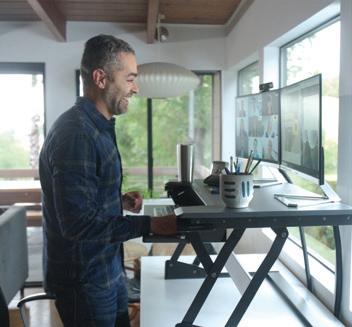
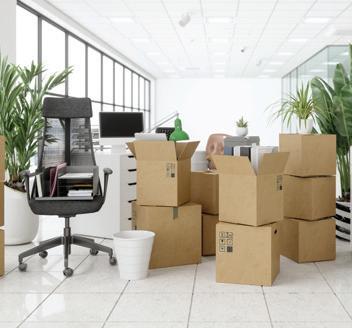






FACILITIES MANAGEMENT JOURNAL VOLUME 30 | 01 DECEMBER/JANUARY 2022 STORAGE Accessible storage options SUSTAINABILITY Scope 3 and net zero 40 36 HEALTH AND SAFETY Technology that supports wellbeing 32 fficial ma a ine r i el elan i cu e hi new oo e on the wor place oo LATEST FASHION uro appol an pro ect team on the u taina le new ite for the on on olle e of a hion
If you are new to PAT Testing, carrying out your own testing in-house or offer PAT Testing as a service, Seaward’s industry leading range of portable appliance testers are the ideal solution for you!

















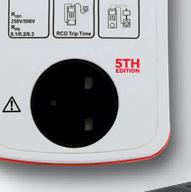









































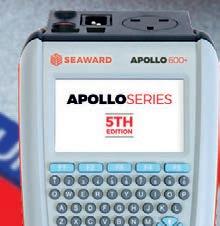












































































































































At Seaward, we’ve been leading the way in developing PAT testing solutions for over 35 years, with a comprehensive range of PAT testers and kits, state-of-the-art software, apps, accessories and all the training, advice & support you’ll ever need.


















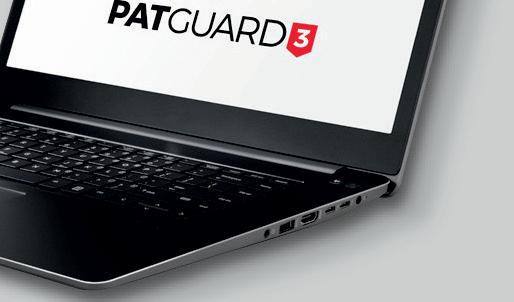

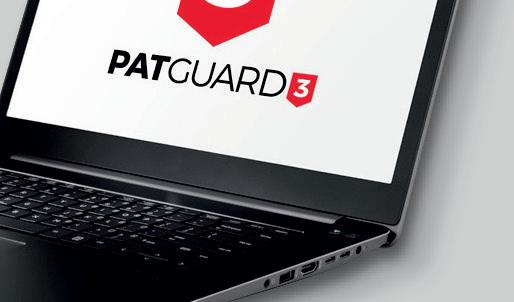
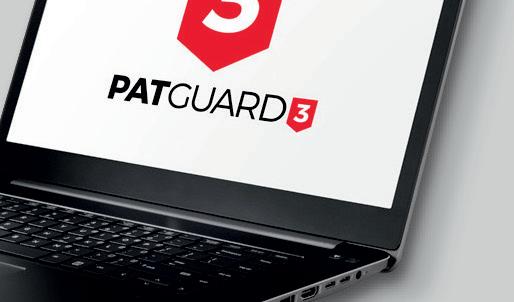

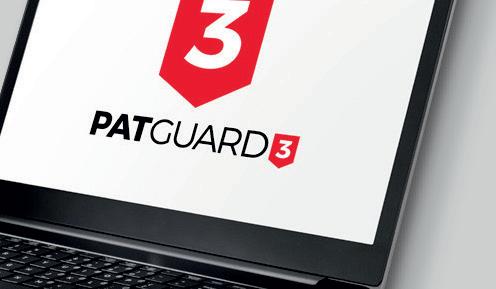




























































































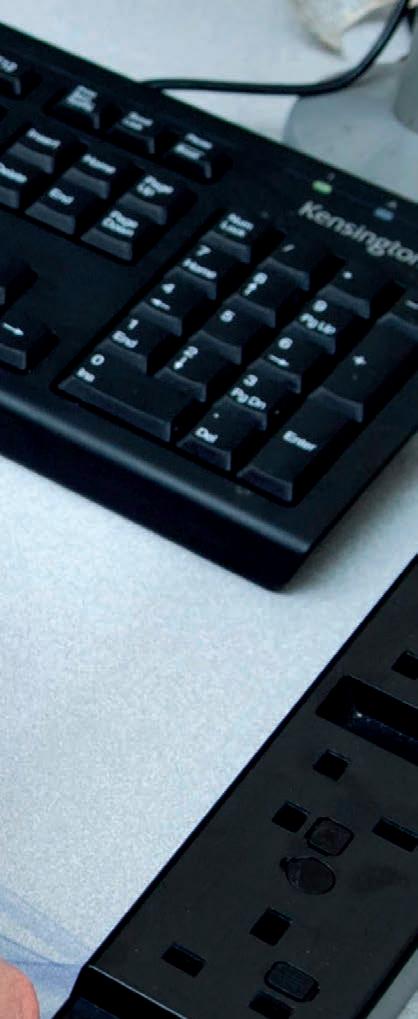

5th Edition ready PAT testing solutions seaward.com Find out more about our PAT testing solutions and request your free 1-2-1 online demo of any tester at seaward.com/FMJ or call 0191 587 8759 FREE 1-2-1 online demonstrations available.
kpm media Unit 1 Mill Place, Platt Business Estate, Maidstone Road, Sevenoaks, Kent TN15 8TB Tel: 01322 662289
Editor Sara Bean sara.bean@kpmmedia.co.uk
Assistant Editor & Social Media Development

Sarah O’Beirne sarah.obeirne@kpmmedia.co.uk Tel: 01322 476815
Director & Designer Warren Knight warren.knight@kpmmedia.co.uk Mob: 0780 1947757
Sales Director Danny Grange danny.grange@kpmmedia.co.uk Mob: 07867 418994
Business Administrator Sami Smith sami@kpmmedia.co.uk
Accounts Trish Boakes accounts@kpmmedia.co.uk
Group CEO Nigel Copp nigel.copp@kpmgroup.co.uk
Editorial steering committee
Alan Hutchinson, Facilities Director, Howard Kennedy LLP
Charles Siddons, Head of Operations, NHS Property Services
Darren Miller, Head of EMEA Facilities Operations, PayPal
Ian Wade, Head of UK Estates, British Medical Association
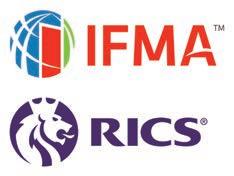
Lucy Hind, Senior FM Lecturer, Leeds Beckett University

Marie Johnson, Head of Workplace & Wellbeing, Nominet
Russell Wood, Facilities Manager at Dentsu Aegis Network
Russell Burnaby, Head of FM, Regeneration and Environment, Brent Council
Simon Francis, Principal Lead, Estates and Masterplanning, ZSL
Simone Fenton-Jarvis, Workplace Consultancy Director at Relogix
Stephen Bursi, Facilities Lead, BAE Systems
Stephen Vagg, Head of Estates and Strategy, National Express Group PLC
Vicky Thorp, Head of Facilities Management, CLSH Management
kpm media adopts a sustainable policy of using paper from managed forests. Printed in the UK by The Gemini Print Group www.gemini-print.co.uk
The publisher does not necessarily agree with the views and opinions expressed by contributors. No material may be reproduced in part or whole without written permission from the editor. Editorial contributions are accepted on an all-rights basis only. Letters to the editor may be published in their entirety or in edited form and remain the property of kpm media. While due care is taken to ensure the accuracy of information contained in this magazine, the publishers cannot be held responsible for any errors in editorial articles or advertisements. Subscriptions are available to non-qualifying and overseas readers at £120 p.a. (UK), £160 p.a. (EU countries) and £240 p.a. (overseas-other).
this month...
comment
Over the past two years, the disruption caused by the pandemic has barely abated, and the discovery of yet another Coronavirus variant now brings us yet more uncertainty.
In this joint December/January issue we asked a group of FM thought leaders what they saw as the greatest challenges and opportunities for 2022.
Encouragingly, and without any conferring amongst the respondents, some key themes emerged, which suggests a level of consensus within the sector on how it’s preparing for the challenges ahead. This includes of course, planning for the future of the o ice, the impact of hybrid working, the adoption of new technologies to support FM services and most importantly, the role facilities management will play in helping organisations achieve net zero.
We wanted to take a deeper dive into the e ect the widescale adoption of hybrid working patterns could have on the way workplaces are designed and managed and who better to answer our questions than Dr Nigel Oseland who has brought his considerable knowledge and research to bear in a new book which explores the present and future of the o ice.
He warns FMs against following a short-sighted strategy of simply reducing the size of their corporate real estate and instead advises that the sector takes the opportunity to reconfigure the workplace. This means for every desk taken away, you reduce the density and not the overall space, allowing people to collaborate, socialise and reconnect with their colleagues.
Finally, as we come to the end of another di icult year under COVID, it’s great to finish with an example of the positive impact facilities management services can have on our society. Turn to page 44 to read how the FM industry utilised its expertise to be front and centre of the e orts to help the families arriving in the UK from Afghanistan.
As always, we’d welcome your feedback about any aspect of the magazine, together with your insight into what’s happening in the FM sector.
sara.bean@kpmmedia.co.uk
DECEMBER/JANUARY 2022 3 FMJ.CO.UK
© Copyright 2021/22 kpm media
Total Average Net Circulation 10,641 July 2020 to June 2021 SUPPORTED
BY
FACILITIES MANAGEMENT JOURNAL JOBS Find your next role with the FMJ Jobboard Visit jobs.fmj.co.uk for hundreds of roles in FM and associated industries jobs. fmj.co.uk EDITORIAL COMMENT
The new way of work demands smart products for mobile and agile working environments. The Mobile COWORKSTATION® T V CART enables effective communication for hybrid meetings and bringing teams together virtually.





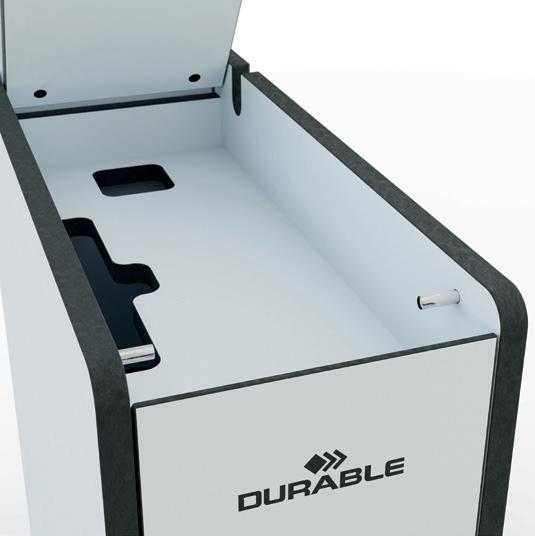












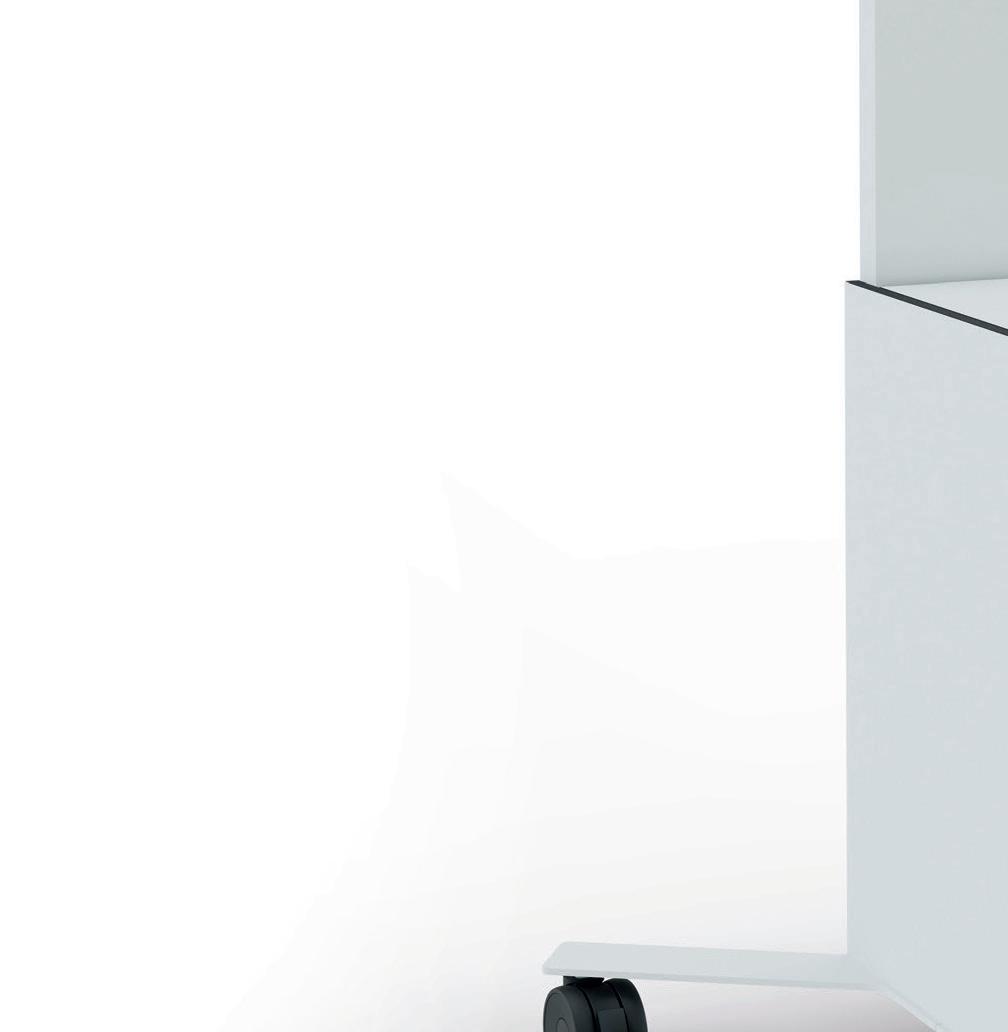




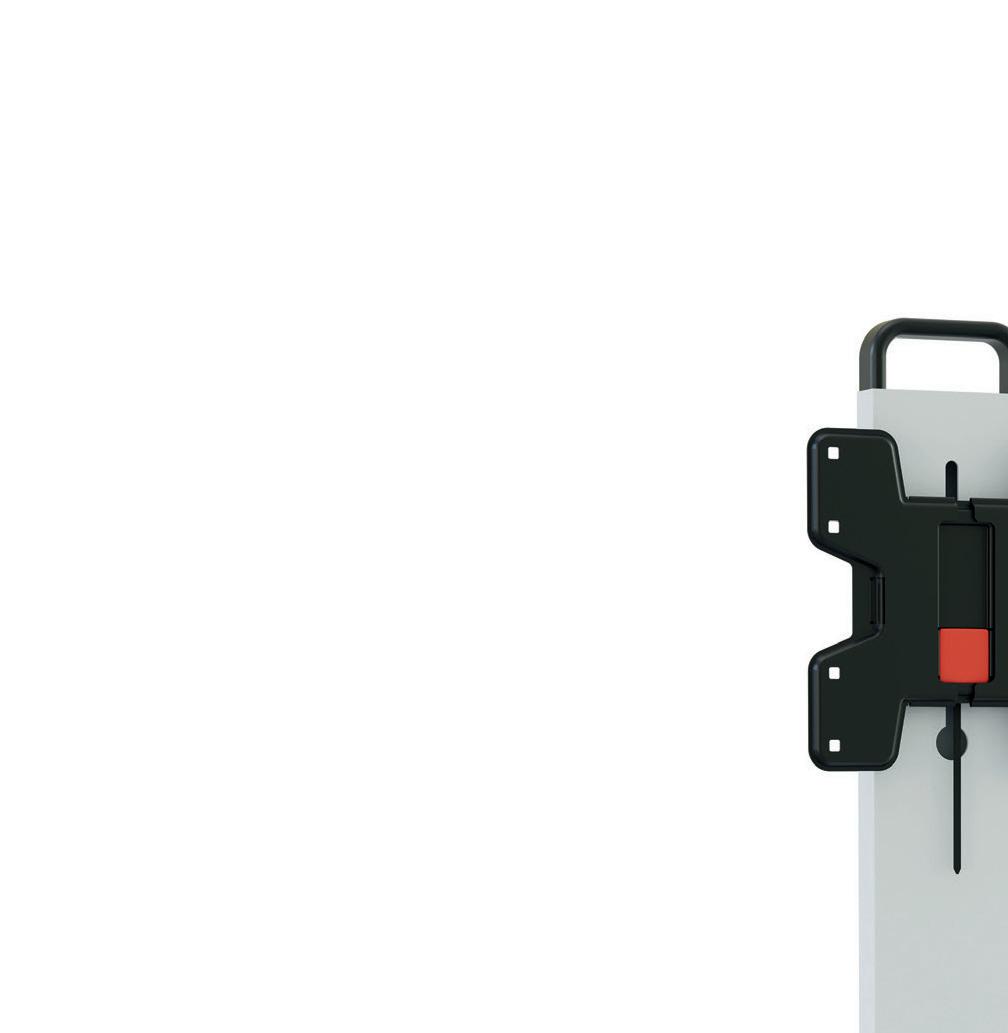
01202 893799
www.durable-uk.com CONTACT US FOR MORE INFORMATION >>
TV Cart COWORKSTATION®
hello@durable-uk.com
Mobile
Intergrated cable management Storage space for keyboard, mouse and laptop Universal TV bracket for up to 43inches NEW
A flexible media trolley for video conferences and presentations to help transform any workplace environment.Facilitate digital presence of colleagues & coworkers wherever you work with the NEW COWORKSTATION® by DURABLE.
FMJ NEWS

This month’s summary of everything that has hit the headlines in the FM sector.
ASSOCIATION NEWS



The latest news and views from RICS and IWFM.









ADVICE AND OPINION
NEWS & ANALYSIS 16
OPINION
Amey Consulting’s Managing Director Alex Gilbert with news of a new scheme to help the organisation fulfil its net zero targets.
COMMENT
Advice on negotiating a break clause that is appropriate for your business from Commercial Property Lawyer Karen Mason of real estate law firm Newmanor Law.
COMPLIANCE
The COP26 Global Methane Pledge commits countries to reduce their overall emissions by 30 per cent by 2030. Dr Stephen Wise of Advetec explains what this could mean for FMs.
FAST FACTS
Sustainable drainage systems (SuDS) seek to control the flow of water more e iciently to mitigate the e ects of both droughts and floods. Caroline Birdsall explains how.
BLOG & SOCIAL MEDIA


Buy social to help achieve your Environmental, Social and Governance (ESG) goals, says Mark Rogers, Executive Director, Corps Security.
FM CLINIC
explains the psychology of the workplace and as Sara Bean finds out, it is essential reading as we embrace new ways of working.
HEALTH AND SAFETY
32 The findings of a recent survey by Ergotron that found three quarters of UK workers would choose their next employer based on the provision of flexible technology and wellbeing support.

SUSTAINABILITY
36 As organisations increasingly declare Scope 3 as part of their decarbonisation strategies, Anthony Ainsworth, COO at npower Business Solutions explains what this means for FMs’ net zero plans.
STORAGE

40 Organisations that downsize their o ices or clear space for collaborative areas require accessible storage options for o ice furniture and equipment, says Rachel Houghton of Business Moves Group.

of

MIFM
Next Edition
20
FMJ asked a group of FM thought leaders, ‘what do you think will be the most pressing challenges for facilities management in 2022? How do you predict the role of the FM could evolve over the coming year?’

With contract catering continuing to su er from a reduced footfall in workplaces, caterers and their FM clients update us on plans to maintain the supply of reliable and appealing food services; and Atalian Servest and Karakuri unveil the first installation of its foodservice robotics at Ocado’s headquarters. In HVAC, a look at real-time monitoring which is now considered industry best-practice, bringing a range of benefits for FMs. We’ve also got an update on changes to Part L and the possible phasing out of non-condensing water heaters. For our digital workplace focus we learn how digitised systems can help streamline building’s energy consumption, giving FMs useful live data without compromising on safety or sustainability. And we’ve an interview with the British Council for O ices (BCO) on how the workplace could evolve in 2022.
To register for your free copy of FMJ visit fmj.co.uk
DECEMBER/JANUARY 2022 5 FMJ.CO.UK
THIS MONTH...
44
PEOPLE 55 Find out who’s moving where in the facilities management profession. RECRUITMENT 56 A rise in hybrid working is supporting employers to create more diverse and inclusive workplaces says Lee Daniels, JLL. TRAINING 57 Kate Gardner, Tutor & H&S Consultant for International Workplace describes how health and safety training for managers has evolved to meet post pandemic challenges. EMPLOYEE RELATIONS 58 Brayden Cohen of Hootsuite describes how Sodexo transformed its social strategy with an employee advocacy programme. CASE
24 London College of Fashion, part of University of the Arts London
is moving to an inclusive and sustainable new single site in 2023. We took an exclusive tour into the heart of the innovative new building with members
the project team at
28 Dr
new
Beyond
workplace zoo; Humanising the o ice FEATURES 24 FM CAREERS 57 sara.bean@kpmmedia.co.uk
SOCIAL VALUE
From pandemic response to Afghan aid, Jason Towse, MD
Business Services at Mitie, explains how the FM sector can play a leading role in helping the UK during times of crisis.
STUDY
(UAL),
of
Buro Happold and UAL. INTERVIEW
Nigel Oseland’s
book,
the
45 New product and service launches and company news from the FM industry.
10
12
14
16
18
06
08
CONTENTS Follow us on Facebook and Twitter @FMJtoday
LEGAL VIEW
KNOWLEDGE IS POWER WHEN IT COMES TO SWITCHING YOUR ENERGY TARIFF
By Amy Thompson, Group Digital Marketing Manager, Winn Solicitors

Energy is one of many costs that businesses have to factor into their earnings and outgoings, and your energy contract may contain hidden business energy commissions that you weren’t even aware of. We have seen an increase in energy prices over the last few months – so understanding as much as possible about business energy deals – including finding out when you can switch – stands you in the best stead. With that in mind, we’re going to talk you through how to switch your supplier successfully, without falling victim to hidden business energy commissions.
There are certain circumstances under which you should be able to switch your business energy contract. One of them is if you’re on a contract you’ve not chosen. A default or rollover contract can usually be ended at any time once you’ve selected a new deal. This usually applies if you have new premises or your fixed term contract has ended and you haven’t signed up to a new energy deal yet.
You should also be able to switch if your business energy contract has expired and you aren’t bound by any terms. In some cases, you’ll need to give notice. If you supplier says you can’t switch, they will need to explain exactly why this is the case.
When switching your energy supplier, you’ll need to know the terms on your current business energy contract, including the contract end-date and any notice periods.
Other information you may be asked for include your energy costs per unit (shown in kilowatt hours on your bill) and standing charges, as well as your annual energy usage.
Seeking out contracts and weighing up your options
When switching contracts, your first port of call is usually your current supplier, to see what they can offer. Make it clear that you intend to compare what they’re offering to other contracts by different suppliers, so they provide their very best deal.
You can see what other suppliers are offering by using comparison websites, or by drafting in the help of an energy broker. Ask them which suppliers they represent, and think about a range of factors such as customer services, sustainability, notice periods, cashback and other incentives, maintenance charges, cooling off periods and broker fees. Having a holistic view of any business energy deal you’re considering will help you make an informed decision.
Look out for hidden business energy commissions
Another factor to consider is commission, paying particular attention to whether any hidden business energy commissions are included in your payments. Recently, it’s come to light that many energy brokers are including hidden commission in their offers to customers, meaning businesses are paying too much for their energy bills.
Unlike domestic energy deals, business energy contracts aren’t heavily regulated, so brokers aren’t legally required to be transparent about the various costs included in the contract. This means it’s even more important for businesses to pay close attention to the terms of their contract.
Due to a growing awareness surrounding mis-sold energy contracts and hefty commission rates, many businesses are now looking for legal support to help them claw back money where possible.
Confirm your switch

Once you’ve chosen a contract you are comfortable with, the final step is to confirm your switch and payment method. Your new supplier will get in touch with you to provide a switching date, and it can take up to 21 days to complete a switch.
Before you sign on the dotted line, make sure you understand the contract length, any notice periods, and the cost of each unit of gas or electricity.
www.winnsolicitors.com
OFFICE OCCUPIERS EXPECT TO TRANSFORM
WORKPLACE DESIGN
Nearly three quarters of global o ice occupiers responding to a survey expect to transform their workplace design in the next two years.
This is according to global construction, consultancy and facilities management company, Mace, which has produced a report using data from a global client workplace survey issued by the company to over 4,000 CRE professionals.
The report found that businesses worldwide are reviewing their current workplace o er following the pandemic, in a move to improve employee experience and attract people back into o ices.
Data collected from businesses with both globally dispersed and single-site portfolios shows that the primary focus for workplace teams is employee experience, where 60 per cent of survey respondents said it was their top priority.
Nearly two thirds (62 per cent) of respondents from across a range of sectors, including manufacturing, financial services, and technology, have shared that they have revised their workplace strategy due to the Coronavirus pandemic.
When it comes to working habits of employees, businesses reported a significant change from pre-pandemic practices to their future look ahead, with 48 per cent of businesses stating that their employees were fully o ice-based before lockdowns, with just two per cent indicating this would be the case in the future.
With a clear focus on improving the employee experience, nearly 60 per cent of survey respondents reported they would be making changes to workplace design in the next 12-24 months, with 28 per cent of corporate real estate leaders suggesting they would be updating the whole portfolio within that time.
The survey shows that despite the di erences in sectors, global coverage and portfolio size, that generally businesses and their workplace teams are reconsidering their workplace experience post-pandemic.
SFMI 2021: MORE TRANSPARENCY ON NET ZERO WILL HELP PUSH THE FM INDUSTRY
FORWARD
Leading FM companies have demonstrated real progress in sustainability but there must be more transparency around net zero, according to the Sustainable Facilities Management Index (SFMI) which has published the results of its annual assessments.
Five FM services providers have achieved a Platinum score in the 2021 SFMI. VINCI Facilities, Skanska, Bouygues Energies & Services, Mite and Equans (formerly Engie) all achieved an 85+ rating in assessments, demonstrating their commitment to sustainability in the sector.
Run by sustainability consultancy Acclaro Advisory, the SFMI is the only sustainability benchmark for the UK FM sector. Now in its ninth year, the SFMI assesses the environmental, social and governance (ESG) performance of FM service providers annually. Acclaro’s team conducts independent assessments across 23 criteria, including sustainability frameworks, management systems, social value, energy, water, compliance, health & safety, employee development, diversity and more.
2021 has been a year of challenges and discovery for the FM sector. Almost two years a er COVID-19 emerged, facilities management’s role has shi ed from crisis mode to strategic planning. Businesses now need their FM teams to help make sense of the built environment and the workplace a er the pandemic, and the FM sector is working out how it must position itself in the market.
Against this backdrop, the 2021 assessments revealed that FM organisations are making progress across the three ESG pillars at an operational level, introducing sustainability on the ground, both internally and externally. However, outside of a select few leaders, FM organisations have struggled to make any headway at a strategic level.
The 2021 SFMI assessments have also highlighted a need for progress in supply chain sustainability. Clearly, FM organisations understand that genuine progress requires action across the supply chain – especially when it comes to reducing overall emissions for net zero targets – but there is still the need for guidance on a targeted strategic and transparent approach in this area.
To download the SFMI 2021 Summary Report, visit https://bit.ly/3Gi4Xg3
DECEMBER/JANUARY 2022 6
NEWS & ANALYSIS FMJ.CO.UK
Industry APPG needs to urgently make progress on key issues warns BCC
The British Cleaning Council (BCC) has urgently called on the All-Party Parliamentary Group for the Cleaning and Hygiene Industry to drive progress on key issues affecting the sector.
Senior figures at the BCC are concerned that there has been a lapse in actions to achieve several key aims, which have now become even more vital due to the serious challenges the sector is facing. The BCC is to hold an urgent meeting with its members in December to discuss a way forward.
The BCC wants the APPG to back and fully support its call for Government help in the face of the severe staff shortages which have hit the sector and threaten the nation’s recovery from Coronavirus.
Many companies all across the sector are struggling to recruit staff. A recent BCC survey of a number of sector firms, which employ around 30,000 staff in total, found that there were nearly 2,000 vacancies and some firms were reporting that vacancies had increased by 252 per cent and 267 per cent in the previous six months.
BCC Chairman Jim Melvin said: “We need the APPG to help us make progress in a number of areas which are now becoming extremely urgent because of the huge scale of the issues the industry faces. We are concerned that the actions required are taking longer than anticipated at a time when we believe there is a disconnect with Government as to the scale of the priorities. As the industry will confirm, we desperately need help to address the major staff shortages affecting sector firms.
“We are heading into another winter with COVID cases rising and yet cleaning and hygiene operatives still do not have key worker status despite their vital role in the fight against the virus.”
RICS RESEARCH REVEALS SUSTAINABILITY HAS MOVED UP THE UK FM AGENDA
Around three-quarters of




Management survey believe that clients consider sustainability to be either the most important or an important issue in the tendering process, a rise from 70 per cent in the last quarter. The figures also show that energy management and health and wellbeing are seen as the areas of sustainability that have seen the fastest growth in investment over the past 12 months.
A new report, Sustainability rises up the agenda in the UK Facilities Management Sector [see page 8] assesses the economic responses and why FMs are at the forefront of changing the way buildings can be operated sustainably. RICS’ Sustainability Analyst, Kisa Zehra commented: “The COP26 conference in November highlighted once again that urgent action is needed to significantly decrease the built environment’s emissions, for the UK this is an essential milestone towards the Net Zero by 2050 goal.
“The latest results to the RICS UK Facilities Management Survey shows some signs of progress. Contributors note that end users are regularly implementing energy e iciency measures in buildings to reduce operational carbon emissions. In addition, sustainability is seen as an important issue by clients in the tendering process.

“That said, it is crucial that momentum around this issue accelerates significantly for the sector to meet its tough climate obligations. More ambitious building regulations relating to energy and carbon performance could be particularly useful, furthermore data, tools and metrics to help track progress are essential.”
ISS CONTINUES WITH GLOBAL DIVESTMENT PROGRAMME
ISS has agreed to sell its US-based portfolio of single-service janitorial and select specialised services contracts to Argenbright Holdings, a privately held provider of workforce solutions in human capitalintensive industries headquartered in Atlanta, Georgia. The sale is a part of ISS’s ongoing global divestment programme, announced in 2018 and updated in December 2020, targeting approximately DKK 2 billion in total net proceeds in 2021 and 2022.
Argenbright will take on approximately 3,000 employees from ISS and will continue the business’s mission of providing single-service janitorial support to specialised clients across financial, retail, industrial and government sectors.
All other ISS businesses in the US, including integrated facilities services (IFS) cleaning and janitorial, aviation, and food service o erings, will remain una ected by the transaction.
24-25 JANUARY 2022 FM Forum Radisson Hotel, Heathrow, London www.facilitiesmanagementforum.co.uk 22 FEBRUARY 2022 Workplace Futures Conference One Great George Street, London, SW1 www.workplace-futures.co.uk 01-02 MARCH 2022 Workplace & Facilities Expo RDS Dublin, Ireland www.workplaceandfacilitiesexpo.com 23-24 MARCH 2022 World Workplace Europe Hybrid Event https://worldworkplaceeurope.ifma.org/ 03-05 MAY 2022 UK Construction Week London ExCeL, London https://www.ukconstructionweek.com/ 10-13 MAY 2022 Interclean Amsterdam RAI Amsterdam, The Netherlands www.intercleanshow.com/amsterdam 11-13 MAY 2022 Health Estates and Facilities Management Association Forum 2022 Stadium MK, Milton Keynes https://www.hefmaforum.co.uk/ 07-10 JUNE 2022 FOOTPRINT+ A zero carbon future Brighton https://www.footprintplus.com/ 23 JUNE 2022 The NHS Estates and Facilities Conference 2022 https://bit.ly/3dl2fKu 17-19 MAY 2022 www.facilitiesshow.com DATES FOR THE FM DIARY DECEMBER/JANUARY 2022 7
contributors to the Q3 RICS Facilities
FMJ.CO.UK NEWS & ANALYSIS
FM SECTOR HAS THE POTENTIAL TO DRIVE REAL ESTATE TO REACH NET ZERO TARGETS
Investors may not be ready to fully embrace ESG, but there is a wealth of opportunities for facilities managers to really drive down targets and pioneer best practice.
continually highlights how sustainability impacts workloads and how much focus, occupiers, investors, and FM providers themselves are placing on it.
is really starting to gather momentum.
Director, RICS





CityAM recently released data
suggesting that, despite COP26, only 45 per cent of investors have sustainable investing as a portfolio priority, and less than a third said COP26 or UK Government policies are influencing their decisions.
The RICS Sustainability Report, echoes this sentiment, albeit pointed to an increase in investor appetite for more sustainable buildings than we saw in 2020, and some buildings are now applying discounts if they are deemed ‘brown’ and lacking sustainable aspects.
It may be slow but investors and occupiers are changing the way they view buildings, leaving facilities managers well placed to assess the future needs of the sector. Indeed, the RICS FM Survey
Of all the sectors that RICS monitors, it is the FM sector who are striding ahead and have a real opportunity to influence the future of the built environment. In a study from RICS over the course of the past few months we’ve gauged the expertise of our members operating in this area to assess how sustainable the sector is and whether we’re on the right track to meet net-zero targets.
Overall sentiment highlights that unless drastic change happens, we will miss our targets, but there is greater optimism about real change within this sector.
The report ‘Sustainability rises up the agenda in the UK facilities management sector,’ assesses the economic responses and builds an encouraging picture for 2021 and beyond, putting facilities managers at the forefront of changing the way our buildings operate sustainably. As many respondents see an increase in the number of end users finding ways to reduce their carbon and addressing how to make their buildings more resilient against the impact of climate, the legwork
Furthermore, we’re starting to see a real focus on energy management and health and wellbeing, which supports the need for sustainable practices, such as the international building operational standard that I’ve highlighted previously to drive positive social impact.
Delivering a sustainable sector is and will continue to be a complex field to navigate, there are many conflicting factors to consider as businesses ready themselves to driving down their carbon output. RICS is determined to support its members in the best way possible so they are empowered to face the ever-evolving climate challenges. The responsibility on facilities managers is only set to increase as their practices will make buildings more attractive to investors and occupiers. The new RICS Responsible Business Framework, which Rory Murphy spoke of last month in more detail, will be another tool to support FM providers, consultants and advisors with practical guidance, trusted data and insights to help them drive down the negative environmental and social impact.
OPPORTUNITIES
In December 2016, The Workplace Advantage was published by the Stoddart Review in memory of the late Chris Stoddart. It was a landmark piece of work which five years on remains a beacon for demonstrating the contribution that the workplace can make to organisational success. A key finding was that the tech-enabled workplace brings people together, facilitating greater levels of collaboration and innovation, underlining the very purpose of the workplace as a productivity enabler.


Now, as companies continue to adapt following many months of homeworking, workplace is front and centre and the opportunity is here for facilities professionals to lead and enable the changes, assisted by technology, bringing the future of work to the present. Adapting workspaces, culture and technology to empower people to work wherever they are most productive should be the goal, because fundamentally workplace is driven by how people work, not where people work. That is workplace in action.
Some might say that nothing substantive has been proven on this before or since Stoddart. That the workplace advantage is a kind of “Holy Grail” that eludes discovery. But that could all change very soon because IWFM, Liverpool Business School and Workplace Unlimited have launched a tool that could consign any doubts about the return on workplace investment permanently to the past.
The Return on Workplace Investment Tool, or ROWI Tool for short, is a calculator for determining the impact of workplace projects on organisational
performance. It has been developed for use in high-level cost-benefit analysis assessments for new fit-out or refurbishment projects to factor in this additional value, so they no longer depend on cost alone.

This is an important step to settle doubts about our profession’s strategic impact once and for all and to show organisations the true impact that this professional community contributes. First, though, we need to test it on real workplaces. If you are interested in putting your organisation forward to beta test the ROWI Tool, please contact research@iwfm.org.uk by Friday 17 December.
As I write this, the Omicron variant is dominating headlines, creating yet more uncertainty. But whatever happens, 2022 presents a variety of tremendous opportunities for our profession and these will form IWFM’s focus for the year ahead. Above I have already covered the workplace opportunity and mentioned the future of work. We have also spoken a lot about sustainability recently and it doesn’t take a psychic to understand it will remain high on the agenda as our profession strives to achieve net zero targets and other outcomes. Wellbeing, which crosses over workplace and sustainability, is another priority, particularly as the pandemic continues to test us. Lastly, skills is arguably our profession’s top priority: like many others, our profession is experiencing skills shortages, meanwhile encouraging career advancement as a path to improving individuals’ and our profession’s standing in organisations will stay in focus.
The days may be darker, colder and turbulent, but soon we will bask in the light of opportunity. Until then, I hope you stay safe and well, and I wish you a merry Christmas and a very happy New Year.
DECEMBER/JANUARY 2022 8 ASSOCIATION NEWS
THE
WORKPLACE AND OTHER EXCITING
Paul Bagust - Global Property Standards
NEWS & ANALYSIS FMJ.CO.UK
IWFM CEO, Linda Hausmanis
Why we’re still No.1 in smoke control servicing and maintenance.


Each of our Colt engineers has been expertly trained with one aim in mind – to ensure your buildings are safe and legal. And to keep them that way.
The value of competency and certification
Colt engineers receive full technical training on all system types when they join. This training is refreshed regularly and supplemented whenever important developments or updates to the legal requirements occur. Colt has 60 fully trained engineers (more than we can comfortably fit in one ad) and we are the UK’s first company to be awarded certification to both IFC SDI 19 and SDI 05.
Our engineers understand that a simple smoke or functionality test is not a service. Many of the engineers we hire from other firms are often impressed at the sheer thoroughness of a Colt site visit.
They learn very early on that there are no viable shortcuts in smoke safety system maintenance.
More fully trained and experienced engineers
Our team of engineers is so dedicated to delivering top quality service that the longest serving amongst them have an average of 20 years each at Colt.
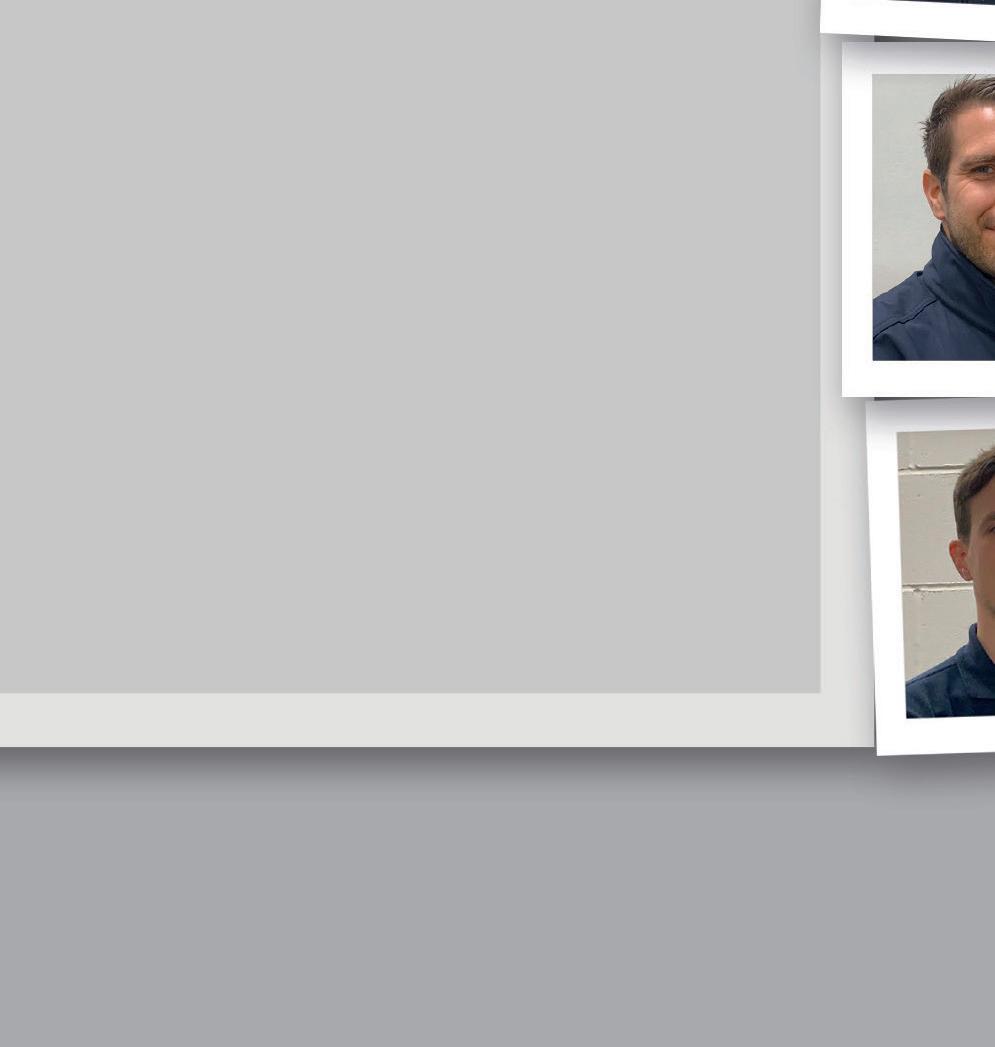


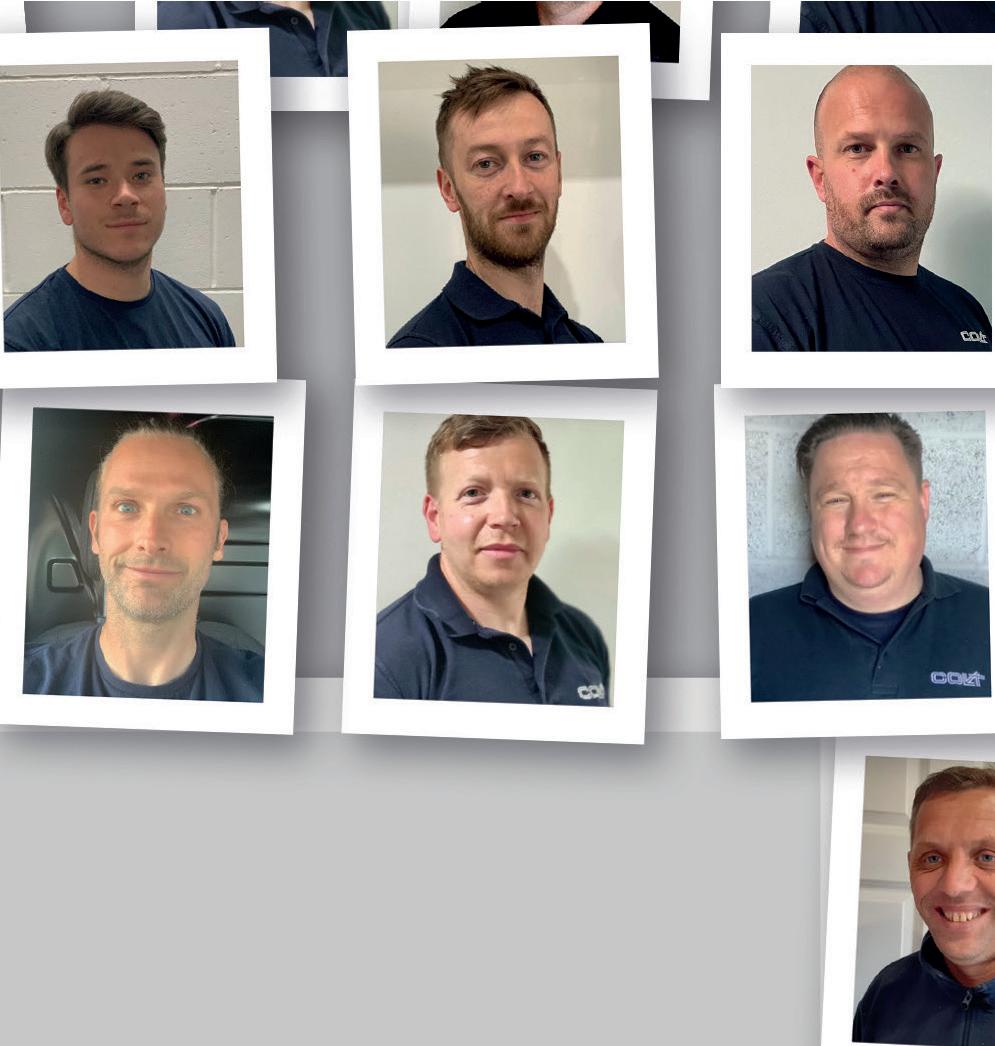

That’s truly unparalleled experience. For our clients it means confidence and peace of mind.
Unrivalled access and availability









Colt is the UK’s only smoke control maintenance provider big enough to offer truly nationwide coverage. Our average response time is 18 hours and in an emergency we aim to be with you in 4 hours. You can count on Colt engineers 24 hours a day, 365 days a year, no matter where you are.
To find out more, visit us at: coltinfo.co.uk/service&maintenance call us on 02392 491735
email service@uk.coltgroup.co.uk




or
Choose Colt Service Expertise built on proven experience. IFC SDI 19 & SDI 05 SDI 05 “Requirements for Contractors Installing, Commissioning and Servicing Active and Fixed Barriers for Fire and Smoke Control”. SDI 19 “Requirements for Contractors Installing Smoke Control Systems”.
BUILDING A SUSTAINABLE FUTURE
The need to build a more sustainable future is not in doubt. Tackling climate change is the single most critical task for businesses and governments across the globe, and communities worldwide are demanding action. At home, the UK Government has set out clear net zero targets. But the fact is that the UK cannot deliver on the Government’s green ambition without new skills and new thinking.
Building this sustainable future – with more sustainable infrastructure, transport links, communities and a greener economy – rests on a robust green skills pipeline. But we have huge deficit in green skills in the UK, while demand for those skills has never been greater and will continue to grow. This skills gap is something we must tackle urgently.
At Amey, we have our own sustainability team of more than 100 professionals looking at all aspects of the environmental impact across our projects. This covers not just carbon, but also waste, ecology, natural landscapes, noise levels and social impact. This team is key to what we do, both in-house and in the design and planning of infrastructure and client services. But although action like this is important, it is not enough on either a business or societal level.
INVESTING IN FUTURE TALENT

That is why our focus is on investment in future
talent in this critical area. To this end, Amey’s Consulting business has developed a pioneering apprenticeship programme in partnership with industry experts, academics at the University of Coventry and the Institute of Environmental Management and Assessment (IEMA). This will develop and equip the next generation of employees with the skills to support the UK in reducing our carbon footprint and moving towards providing infrastructure solutions for life.
Fully funded, the five-year course gives school leavers the opportunity to work towards an Environmental Management degree while gaining experience on some of our flagship projects. These include major infrastructure projects from the Transpennine and Wales & Borders rail upgrades to the A66 road improvement programme for National Highways.
This first-class practical experience sits alongside academic modules developing key carbon and climate change skills. These cover environmental assessment and ecology, air quality, carbon modelling and landscape architecture, along with a detailed understanding of product manufacturing processes and their embedded carbon. This, combined with our advisory and analytical skills in managing and interpreting data, will give new insights into environmental impact and the changes we can make.
Amey’s apprenticeship scheme has been met
with great enthusiasm by academia. Sharing our determination to deliver a programme that makes a real di erence when it comes to tackling climate change, academics place great value on the fact that students get such valuable and high-quality firsthand experience to support their academic studies.
Importantly, apprenticeship programmes like this one also promote inclusion, attracting a diverse pool of talent to bring fresh perspectives and experience to this critical area. Not everyone sees a traditional degree as the best option. For some, it is not an option at all. But opening up opportunity to all is essential if we are to meet the scale of the challenge we face.
Apprenticeship programmes like Amey’s are critical to the future. But we must do more, and we cannot a ord to think of green jobs as simply those directly in conservation or with a green label. If we are to meet the scale of the challenge of achieving net zero by 2050 then we need to change our thinking. All jobs must be green jobs and an environmental thread must run through every role across projects and across sectors.
SUSTAINABLE INFRASTRUCTURE
Incorporating sustainability into business at every level and in every function is critical. It should feature in job descriptions, in development plans and performance reviews. We cannot a ord for sustainability or green skills to remain an add on in how we manage our work whether for clients or in-house.
At Amey, sustainability is now embedded throughout the organisation. We encourage innovation in this critical area from each and every one of our employees and we have set out a clear roadmap to net zero as part of our commitment to creating clean, green environments for all.

Every solution that Amey Consulting designs will be net zero by 2030 and we will be a totally net zero organisation by 2040. This commitment does not rest on simply o setting our emissions but instead it is about realising absolute reductions. Our ethos is to ensure we provide infrastructure solutions for life and that sustain life.
We cannot limit the scale of our ambition when it comes to achieving net zero. It must dominate our thinking and underpin all that we do in terms of design and delivery. Most importantly, we must make sure we develop talent in this critical area, putting the right skills in place to tackle the challenge. If we do not invest now, we will have le it too late.
OPINION DECEMBER/JANUARY 2022 10
ADVICE & OPINION
Amey Consulting’s Managing Director Alex Gilbert warns that the UK needs new skills and new thinking if it is to meet its net zero targets





































Whether it’s catering, laundry, infection control, fire safety and security or heating and air conditioning, we give you peace of mind so you can focus on managing your properties. 0808 239 8624 www.jla.com Critical equipment that works as hard as you do We’ll take care of it
BREAK CLAUSES
Whilst a break clause can have tangible benefits for the party seeking to utilise it, the process itself is far from simple. As such, it is imperative that both parties consider the clause and mechanics for implementation carefully, because any disagreement about whether the provisions have been met can lead to expensive and timeconsuming legal action.
From a tenant’s perspective, the tenant must realise that triggering a clause will leave the landlord with the task of having to re-let the premises at relatively short notice, so the landlord will usually look to resist the exercise of any break clause.
COMMON DISPUTES
With many of the COVID-related restrictions having now been li ed, many organisations are beginning to adjust to life a er the pandemic, which includes renegotiating new leases that better define their current situation.
During lockdown, flexible working patterns were adopted as a way of adhering to social distancing guidelines, and it now looks as though this will continue as a long-term culture within many businesses.
However, agreeing a new and improved lease, with the inclusion of a break clause, is not always straightforward and business owners are encouraged to seek professional legal advice from the outset, especially during the process of dra ing a break clause.
UNCERTAINTY IN THE MARKET
The downturn in real estate letting appears to be widespread according to research from property experts CBRE. Statistics show that o ice investment in the first quarter of 2021 was down 65 per cent on the previous quarter and 37 per cent on Q1 of 2020. This downturn has undoubtedly been accelerated by the widespread adoption of hybrid working patterns throughout the pandemic. This is the backdrop against which any consideration of the changing nature of commercial leases takes place, with the slump in overall demand for o ice space impacting on the kind of clauses tenants and landlords will be negotiating.
NEGOTIATING AN EFFECTIVE BREAK CLAUSE
Due to the uncertainty caused by the pandemic, a
growing number of tenants have been tempted to utilise existing break clauses or insert them into leases, as a way of exiting agreements early.
The inclusion of such a clause o ers increased flexibility to tenants and landlords alike, as it enables either party to terminate the lease, as long as certain requirements have been met.
For example, an organisation with a 10-year lease, might seek to insert a clause which will give them the option to exit the lease at any point a er four years as long as six months’ notice is given.
Given the current state of the commercial property market, the inclusion of a break clause can be one of the main sticking points during negotiations between tenants and landlords.
THE IMPACT OF A BREAK CLAUSE
As a leaseholder, a break clause will enable you to walk away from an agreement if the commercial space is no longer needed or you need to downsize your o ice space to save money and protect jobs. Equally, landlords can use them to remove tenants should there be the potential to raise rents or make more money from a new tenant more ideally suited to the space. In the past tenants have been reluctant to give landlords break options, but in the new conversations this could be mutual.
The Royal Institution of Chartered Surveyors (RICS) published a ‘Code for leasing business premises, England and Wales’ in February 2020, which states that the break clause should only be conditional on “the tenant paying all basic rent payable on any date before the break date, giving up occupation and leaving no subtenants or other occupiers …”. This sounds relatively simple, but the reality is that many landlords insist on going beyond what is only a voluntary code and imposing stricter conditions. In many cases the landlord may attempt to link the triggering of the break clause with the wider covenants of the lease, such as the requirement to return the property in a specific condition, or to undo any alterations carried out during the Lease term.











Disputes between landlords and tenants about the exercise of break clauses are very common. It is very easy for a tenant to get the exercise of even a very simple clause wrong. It would be wise, therefore, for any tenant uncertain of their compliance with conditions to employ the services of a specialist real estate lawyer or surveyor to closely work through the break clause and how it is to be exercised.
SEEKING LEGAL ADVICE











Once a break clause has been triggered by a tenant, it is legally binding and cannot be reversed. Even if the circumstances change during a notice period and both parties agree to nullify the clause, there is no turning back.
Therefore, any tenant needs to think through their decision carefully before they act, and during the dra ing process, it is crucial that legal advice is taken early on, so that both parties fully understand the gravity of the clause and the provisions it contains.
If you need support negotiating a break clause within a new or revised lease, or advice on triggering an existing break clause, then contact an experienced legal team for advice beforehand.
COMMENT DECEMBER/JANUARY 2022 12
Commercial Property Lawyer Karen Mason and Co-Founder of specialist real estate law rm ewmanor Law, offers advice on negotiating a break clause that is appropriate for your business
ADVICE & OPINION
Given the current state of the commercial property market, the inclusion of a break clause can be one of the main sticking points during negotiations between tenants and landlords.”



































Is your existing chiller plant efficient and reliable? We’re here to help. The world is our building. Were all in it together. t 08457 165 162 e customer.care@trane.com www.trane.co.uk
The Global Methane Pledge commits signatories to reducing their overall emissions by 30 per cent by 2030, compared with 2020 levels.
The new initiative emphasises making cuts by tackling emissions from sources including oil and gas wells, livestock farming and decaying waste in landfill sites. According to Dr Stephen Wise from environmental biotechnology company, Advetec, it’s the latter which provides FMs with an actionable opportunity to get ahead in minimising methane and meeting reduction targets.
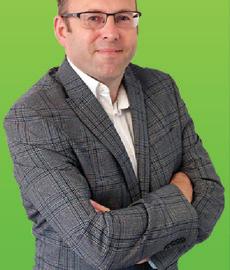


Where does methane come from?
Methane is generated under anaerobic conditions. A simple way to visualise this is a cow. The cow takes in food and breaks it down within its stomach under anaerobic conditions. As the food breaks down in the stomach it generates methane which is expelled into the atmosphere. Methane is an issue as it is 80 times more potent that carbon dioxide as a greenhouse gas.
What’s waste got to do with it?
Landfill is inherently an anaerobic system. Waste goes into the ground, it’s covered by new waste the next day and very little air ingresses. This provides the perfect conditions for organic waste to breakdown and emit methane – just as a cow’s food does inside the stomach. There may be some gas collection infrastructure in place, but methane will always escape into the atmosphere as it’s a natural process. Therefore, in order to reach the targets set out at COP26, we must address the fate of all waste, including the residual non-recyclable waste – or the forgotten waste. The Pledge, along with rising costs of landfill, waste segregation targets and the increasing value of the green pound, have created the right conditions to drive change and innovate the way they collect, treat and ultimately dispose of waste.
But you don’t send any waste to landfill?
You may think this to be the case as you have waste contracts in place, recycling bins aplenty and a widespread desire to reduce waste to landfill so it appears that all is in hand. But what many businesses don’t know is that despite these e orts, 50 per cent of
waste still goes to landfill or for incineration. This 50 per cent is made up of mixed residual waste – the waste that can’t be segregated or sorted for recycling because it is contaminated. This could be a half empty drinks bottle, a yoghurt pot or a sandwich wrapper with crusts in, for example. This portion o en gets overlooked altogether but it’s the organic matter that produces methane under anaerobic conditions.
In association with
www.advetec.com



into three main streams – clean organic (food waste), residual (mixed waste) and segregated recyclates – at source helps FMs to better understand their waste and the disposal routes that are appropriate and available. This is far from innovative, but a surprising number of organisations still don’t do this. Moreover, FMs need to learn that if organic matter is present within the recyclates, they will not be recycled and are headed to landfill or incineration.
Taking waste o site comes with an additional environmental cost as lorries generate carbon emissions, so there are real benefits to treating some waste streams on site. Biotechnology has come into its own here, particularly with residual waste, as this can’t be sent for recycling because it comprises an organic fraction. Biotechnology makes it possible to reduce the mass of this waste stream by typically 50 per cent on site – which means fewer collections and less road related carbon, as well as cost savings. Perhaps most significantly, it results in considerably less waste going to landfill or EfW.
The first steps of reducing methane is to ensure that FMs and their organisations have a greater understanding of the waste supply chain as a whole so that they can take full accountability for every single decision made. It can be easy to rely on outsourced partners to do the green thinking but FMs need to understand their di erent waste streams, how they are handled, how they can be handled and how all of this fits within the wider waste journey. This knowledge will help FMs to query waste handlers’ choices, dictate desired waste outcomes and chart a course for continual improvement.
What changes can you make?
Reducing widespread use of landfill relies on there being other a ordable, accessible alternative solutions and there have been great strides forward with improved practices and the use of innovative treatment technologies – including:

Greater refocus on sorting and separating waste on site can yield green benefits. Sorting waste
Another highly e ective step is to send all separately collected food waste for anaerobic digestion – a process which can be used to create green energy – electricity, gas or fuel and considerable carbon savings. The circle is completed perfectly when organisations buy that green energy back.
The pressure for FMs to think greener is ever increasing and as long as sustainability remains at the top of the global agenda, it’s here to stay.
From achieving net zero to cutting methane, it can seem overwhelming but by championing waste management at board level, educating business leaders about the waste journey and the technologies available and setting their own targets, FMs can quickly become ambassadors for positive change.
FMJ is hosting a webinar with Advetec on the 26th January 2022: How biotechnology is helping FMs achieve their sustainability goals and reduce waste. For more details visit: https://us02web. zoom.us/webinar/register/5616351723856/WN_ I72h2PxfS3awLc0T6378YQ
14 DECEMBER/JANUARY 2022 ADVICE & OPINION
COMPLIANCE
METHANE REDUCTION: HOW FMS CAN GET AHEAD aw more than countrie ple e to i nificantl cut emi ion of methane a powerful reenhou e a re pon i le for aroun per cent of lo al warmin to ate r tephen i e, hief trate ic e elopment fficer for en ironmental iotechnolo compan , etec e plain what thi mean for









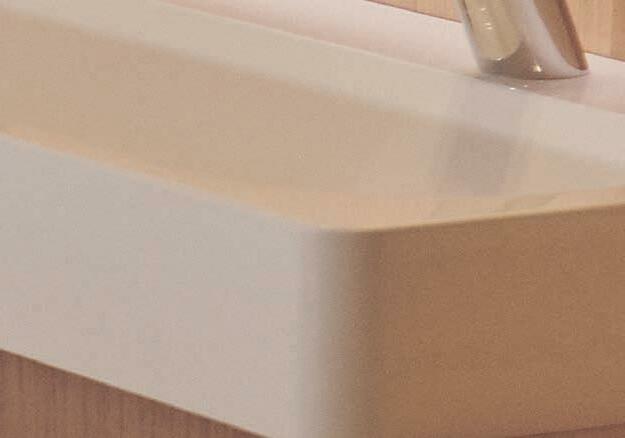

























Washrooms for Bars Restaurants Retreats Airports Studios Workspaces Hotels Train Stations Universities Schools Hospitals O ces Museums Galleries Theatres Cafés Ideal Standard Hygiene Redefined LEARN MORE idealspec.co.uk
CONTROL THE FLOW
FMJ AIMS TO SUPPORT TECHNICAL EXPERTISE IN THE FM MARKET
Sustainable drainage systems (SuDS) can be an asset for your business as well as bene tting the environment, says Caroline Birdsall, UK and Ireland Director of Marketing for The Millboard Company

water can then be used to provide water for washing and toilet facilities – sometimes even drinking water – within the building, or to irrigate planting outside, thus reducing the demand for mains water.
Floating Pocket Park in Paddington, West London, was constructed using Millboard decking to create a leisure area that vastly improved the local environment and amenities. It serves to show that using similar materials to provide usable surfaces that will permit natural water flows without themselves being adversely a ected is eminently practicable.

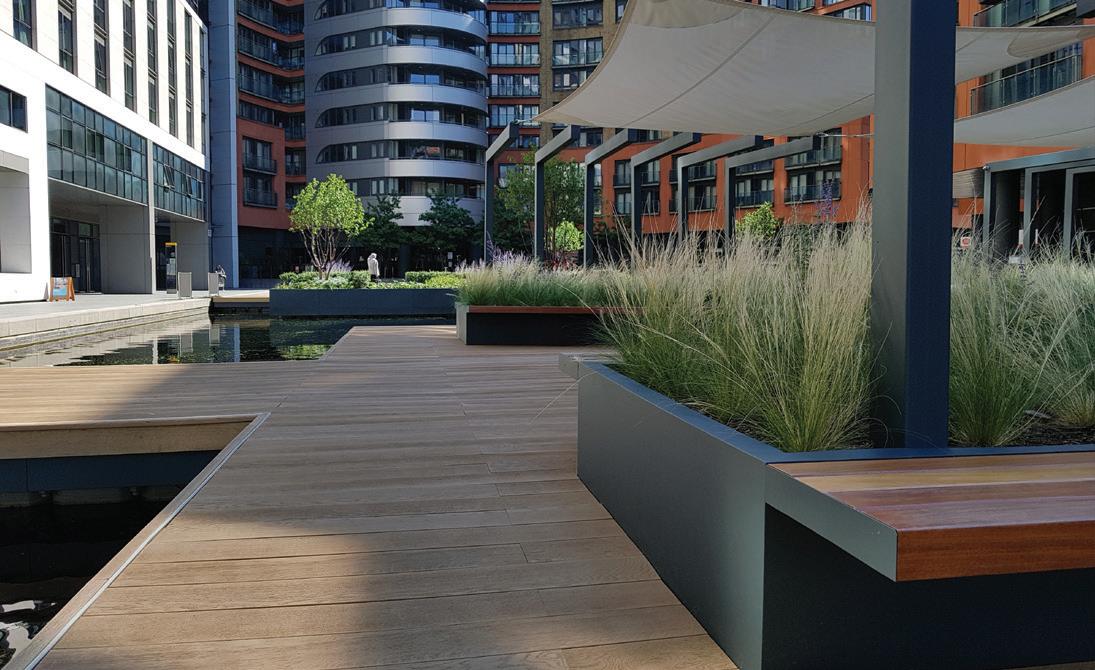
SUDS DELIVER BENEFITS ON SEVERAL LEVELS
» SuDS systems have few or no moving parts and typically require little ongoing maintenance.
Stories about the impacts of prolonged droughts and sudden flood events are becoming ever more frequent in the news media. The growing problems that a lack or excess of water can cause have led scientists to look at the causes and potential solutions.
Beyond the well-known impacts of climate change, other human impacts on the environment are also at play, not least the way we have concreted over much of the land on which our cities are based and installed systems of pipes and sewers to channel surface water away. While these systems initially served us well as our societies industrialised and urbanised, we have reached the point where their limitations are now being exposed. A report issued jointly by the Mayor of London’s o ice and Transport for London in 2016 stated: “London’s existing network of sewers and drains is at or near capacity in many areas and the issue is exacerbated by a rapidly increasing population.” This story reflects the experience of a growing number of our towns and cities.
The consequence is that valuable water is allowed to run away when it could be stored and, in times of excess rainfall, our towns’ and cities’ hard surfaces leave nowhere for the water to go when their drains are full.
This is where sustainable drainage systems come in. Sustainable drainage systems – commonly abbreviated to SuDS seek to control the flow of water more e iciently to mitigate the e ects of both droughts and floods. The more entities that use SuDS, the greater their combined e ect, so businesses have a big part to play – and far from adding costs, it can actually deliver savings over the long term.
It can also improve how others perceive an organisation. Customers and investors are increasingly factoring how companies interact with their environments into their buying decisions. Demonstrating sustainability is an asset, and SuDS can make a big contribution.
UTILISING SUDS
SuDS come in a variety of forms rather than being a one-size-fits-all way of changing the fabric of your estate. Some elements are easier to factor into buildings when they are at the planning stage, but many can be retrofitted to existing buildings and their surroundings.
Rain capture systems, including green roofs and walls, can be used to retain water and route it into storage tanks, which ideally should be situated below ground to avoid evaporation. This
While the more complex systems can be too expensive to retrofit in many instances, there are many other SuDS elements that are simple to adopt for most businesses. It is easy to install rain planters to capture water from existing downpipes, and trees can be planted into selfcontained pits that will not only prevent roots undermining structures but also act as reservoirs for holding water which might otherwise collect on hard surfaces and contribute to local flooding.
Those hard surfaces could also in many instances also be swapped for permeable ones. Sta rest areas will o en benefit aesthetically if concrete and tarmac are replaced with decking, and nowadays there are plenty of alternatives to wood that don’t decay or become slippery in wet weather. Modern high grade composite materials are themselves impervious to water but allow it to drain between boards and be absorbed by the ground beneath. At the extreme end of the scale, their resistance to water even allows for construction directly over water. For example, the
» When integrated into buildings’ water supplies they reduce reliance on mains water so can actually save money.
» They can improve spaces visually, o ering attractive venues in which to hold meetings and events, and help to enhance your workforce’s wellbeing.
» They demonstrate your business’ commitment to play a responsible part in the local community through measures which will help mitigate flooding and droughts.
» Implementing SuDS both improves your company’s sustainability and provides a tangible demonstration of it to its investors and customers.
Given its many advantages, we can expect to see the SuDS philosophy become the norm rather than the exception within the next few years. Already some planning schemes are approved only if they have SuDS measures built in, and they may become mandatory in law before long. It makes sense to be ahead of the curve and gain goodwill for installing them while they remain voluntary, as well as enjoying the savings they can deliver sooner rather than later.
DECEMBER/JANUARY 2022 16 ADVICE & OPINION
FAST FACTS


Keeping Britain’s drains flowing. We make dealing with drainage, plumbing and pump issues easy. Whether it’s an emergency or routine maintenance our quick response times, advanced reporting tools and expert engineers are here for you. 0800 66 88 00 metrorod.co.uk Speedy response 24/7 availability National reach #1 for professionalism
SOCIAL - BLOG


BLOG FROM MARK ROGERS, EXECUTIVE DIRECTOR, CORPS SECURITY

‘BUY SOCIAL’ – HELPING TO ACHIEVE YOUR ENVIRONMENTAL, SOCIAL AND GOVERNANCE (ESG) GOALS


@UKGBC TWO CIRCULAR ECONOMY SURVEYS
LAUNCHED! UKGBC are seeking feedback from the built environment industry to help develop our #CircularEconomy programme https://bit.ly/3lwNOHG
KPMG https://www.linkedin.com/company/ kpmg/ In a joint effort, KPMG IMPACT and Eversheds Sutherland examine in detail how employees are factored into a company’s decarbonization plans: https://social.kpmg/m6wn7x
Louie-Mae Gibson https://bit.ly/3dePwsC At the biggest awards in the World of its’ kind, this happened. To everyone that has supported, worked with, understood, empowered and just been there for me, in the 13 years since leaving the Army - Thank you. #womeninbusiness #awards #military #veterans My single greatest achievement in my civilian life #thankyou
@BCC_Jane “This new guidance will help all employers to confidently implement and roll-out hybrid working in a way that is fair and accessible to their workforce” Our response to the new guidance from the Flexible Working Taskforce https://t.co/B0KKw0ufQv
@CHTToday Cleaning: the frontline, essential service. Before, during and after the pandemic - http://chtmag.com/cleaning-the-frontlineessential-service-before-during-and-after-thepandemic/ #cleaning #ContractCleaning #IncentiveQAS #CleaningIndustry
Elliot Valentine Assoc RICS CIWFM linkedin. com/in/elliot-valentine-assocrics-ciwfm6344b323 Last week’s IWFM Rising FM was positive for so many reasons. It was great to meet new connections and reconnect with those we haven’t been able to network with for some time. Special thanks to Alan Stenson MIoD Ethical Nation and iRecycle Waste Management Limited for their support for the event. Risingfms@iwfm.org.uk
Ethical consumerism has become a big trend in recent years as consumers are becoming more concerned about where their money is going. And it’s not just individuals. Large corporations like PWC, Barclays, Johnson & Johnson and government commissioners are all pledging to spend money with organisations that are prioritising their environment, social and governance impact.
It’s now a boardroom level commitment for many companies to allocate their procurement budget with those suppliers that align with or complement their own ESG goals. Choosing to ‘buy social’, within the diverse supplier and Social Enterprise community, gives consumers and companies a transparent, ethical and accountable way to spend their money.
Diverse suppliers and Social Enterprise businesses range in size and are spread across a wide variety of sectors. To become a certified Social Enterprise organisation, businesses must satisfy several key criteria. These include proving how profits are distributed and invested as well as company ownership status and evidence of a social mission.
Social Enterprise companies are founded on a social or environmental mission and like any successful business they are committed to making profit. But unlike other businesses their profits must be reinvested or donated to charities or sustainability projects rather than paying dividends to shareholders.
Since our inception in 1859 Corps Security has followed our own version of the triple bottom line ethos, focusing on ‘people, planet, purpose’. Originally founded to help veterans returning from the Crimean war to find gainful employment to this day Corps still actively seeks to employ and support ex-military personnel.
In July 2021 Corps gained Social Enterprise status. Social Enterprise status brings many benefits. For our business it guarantees that our social mission remains at the very heart of all we do and ensures we continue to operate in an ethical, transparent, and accountable way. It also means our customers can increase their own environmental, social and governance credentials by choosing to work with us. My hope is that together we can achieve great things for our people and our planet whilst supporting our purpose.
In common with all other Social Enterprise Organisations, Corps reinvest profits back into the business, to support our people. We also make considerable charitable donations to create positive social change.
Combat Stress has been our preferred charity partner since 2015. This year alone we
have been able to help fund 109 days for their helpline, which equates to 4,500 calls. 2,070 of which were new callers seeking help for the first time.
Furthermore, meeting Social Enterprise criteria earlier this year and joining the growing number of companies able to o er that ‘diverse spend’ option, Corps Security has recently been awarded the MOD’s Employer Recognition Scheme (ERS) Gold Award, in acknowledgement of outstanding support for the Armed Forces community.
Corps has also been a Living Wage Foundation recognised service provider since 2020 and are a carbon neutral company, funding projects across the world and o setting 477 tons of carbon a year.
Buying from a Social Enterprise supports the creation of greater social value in local communities. By partnering with Corps, organisations are spending money that they would spend anyway, with the additional advantage of entrusting their business to an expert security provider that also creates tangible social value.
This visible commitment to diverse supplier spend, means our customers can build stronger community relations, operate more sustainably and do business with a more positive social and environmental impact. All activities that are included in their existing ESG goals. This in turn helps to build their brand reputation, by being more aligned with evolving consumer demand.
It’s a common belief that working with a social enterprise may be more expensive or will result in a lower quality service. On the contrary, working with Corps, promises no compromise –either commercially or operationally. Choosing Corps means you’re choosing to utilise your budget, not only to provide a highly competitive security solution, but to do it for people, planet and a purpose.
DECEMBER/JANUARY 2022 18
Matthew Chapman @MPDChapman Headed to London at 5am today - I saw @AtalianServest @mitie @ISS__UK on the road, braving #StormArwen to deliver services in the UK. Special thanks to the @ISS__UK colleague who helped a trapped vehicle too. So much respect for the often ‘unseen’ side of #FM Folded hands
ADVICE & OPINION
Mark Rogers, Executive Director, Corps Security










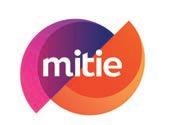
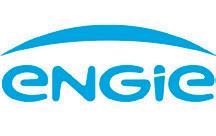





INDUSTRY LEADING COMPLIANCE TRAINING The UK’s leading provider of compliance, technical and safety training for estates & facilities management professionals. Delivering accredited training courses that are developed to meet the requirements of industry regulations. www.developtraining.co.uk develop-training developtraininglimited @DevelopTraining 0800 876 6708 | enquiries@developtraining.co.uk ELECTRICAL & MECHANICAL HEALTHCARE (HTM) MoD (JSP) WATER SYSTEMS & LEGIONELLA UK-WIDE CENTRES | E-LEARNING | BESPOKE TRAINING
FM CLINIC
Following another year of disruption due to COVID, what do you think will be the most pressing challenges for facilities management in 2022? Given the changes to the way we work following the pandemic, which is having huge repercussions for the way workplaces are run, how do you predict the role of the FM could evolve over the coming year?

Could this be mirrored in the UK? Change is happening and many predict we will not return to how it was prior to the pandemic, with more people wanting the ability to work from home, flexible hours and a new and fresh workplace environment that meets their needs.
As we move into new modes of working, businesses must adapt physical spaces, working culture and technologies.
Sustainability: I believe that probably the single most important challenge for organisations and Government, as well as a potentially major opportunity, will be in using postpandemic and COP26 rethinking to achieve sustainability goals.
THE IWFM CHAIR’S VIEW
MARK
WHITTAKER, CHAIR OF THE INSTITUTE OF WORKPLACE AND FACILITIES MANAGEMENT AND GENERAL MANAGER, THOMSON FM
I sense five of the most pressing challenges of 2022 will be: Retain and Attract: I have spoken to several human resources and recruitment professionals recently who have all commented that they have never known a labour market which is changing so rapidly, and it is predicted this will continue in 2022. Following a couple of years of no pay increases or bonus payments, I think 2022 will see marked wage inflation and also organisations reviewing the competitiveness of not only their peoples’ salaries, but also pension contributions, bonus schemes and flexible, as well as hybrid working, in order to both retain their workforce but also meet the demand to increase their numbers.
Future of the Workplace: The American Careers Insider (@CareerInsider) recently published an article predicting how the 72 million Generation Z (born between 19972012) are “killing” the workplace in America and quoted a 19 year old law student, who said: “It will be interesting to see how we shape the workplace, not just how the workplace will shape us.” They state that the workforce will “no longer accept commuting to the o ice Monday to Friday, blindly accepting the corporate line and work as an obsession”.
The recent Intergovernmental Panel on Climate Change report’s ‘code red’ warning is unequivocal but the way we manage and maintain our buildings could make a tangible and lasting contribution to carbon reduction.
Equity, Diversity and Inclusion: In 2021 IWFM established a new Focus Group, who renamed themselves Equity, Diversity and Inclusion (EDI). As was set out in their Terms of Reference, members have helped to examine our practices and policies to ensure that we support all of our members and make the biggest possible impact on EDI in the sector. Our EDI statement has been published and a roadmap for change will shortly be unveiled to support the Institute, our members and the wider industry. I believe achieving greater EDI within FM is one of the most urgent, but also exciting challenges for the profession in 2022.
Finally,
The recent Intergovernmental Panel on Climate Change report’s ‘code red’ warning is unequivocal but the way we manage and maintain our buildings could make a tangible and lasting contribution to carbon reduction.”

Building Safety and the role of facilities management professionals will continue to be a key area in 2022. A Bill is currently before Parliament and IWFM has been very active in this area, through Sofie Hooper’s work with the Life Safety Working Group and the Building Safety Alliance.
and IWFM has been very active in



THE WORKPLACE FM PROVIDER’S VIEW ALISTAIR CRAIG, MANAGING















ANABAS
The challenges ahead will be of a similar nature to the past 18 months, namely dealing with the unknown and not being in control of a client’s business strategy. FMs need to be buoyant and adaptable to deal with the outcome of new policies. How to corral the workplace into committing to new ways of working will be a

DECEMBER/JANUARY 2022 20
DIRECTOR
ADVICE & OPINION
Mark Whittaker
MarkWhittaker
In FMJ's regular monthly column, our team of FM experts answer your questions about the world of facilities management
challenge that will require new ways of thinking.
The global pandemic has thrust us into a new era of o ice utilisation. Every building and client are unique and has its own modus operandi. How FMs service the needs of each workplace and workforce will happen when we come out of flux period into a regular rhythm. This will not settle any time soon. 2022 will continue to see frequent change before any real routine or ‘new normal’ is established. Monitoring how o ices are being utilised is the first step in understanding how they need to be serviced. FMs must watch, listen and learn before acting.

Some organisations are making the decision to close the o ice on a Friday with little consideration of the bigger picture. Businesses need to think about the impact on receptionists and cleaners, for example. Their roles and responsibilities can’t be conducted from home, so are they expected to take a 20 per cent reduction in hours and therefore pay? It’s a di icult scenario that needs a holistic approach. Piecemeal planning could cause irreparable damage.
Investment in facilities will also come under scrutiny. Typically, capital budgets for fit outs, reallocation of space and installation of new furniture present a business case for ROI, but rationale will be made ever more complex if the space is only in use for three days a week at a decent level of occupancy. Collaboration between business leadership and FM will need to be stronger than ever to make the most of corporate real estate. FMs will need to implement a solutions-based approach and to do that they will need to think outside the box.
There’s a mass of technology unveiling but unpicking what is going to be of value is tricky. There’s no value in deploying smart gadgets if they don’t deliver. It’s di icult to concede the potential impact technology could have on the workplace: AI, augmented reality, greater use of data, IOT and sensing technology, the possibilities are endless, and we are yet to see what that could mean for our industry. The smartphone has fundamentally changed how we do things and how we do things 10 years from now will be radically di erent, still.
With increased use of technology, we will see more and more data landing on the desks of FMs. This data needs to be both quantifiable and meaningful to influence positive change. Upskilling will be needed in some cases to process this information and deliver the most fruitful outcomes.
FMs have little power to nudge behaviours in a workplace so they will need to be prepared for more



downstream challenges over the next year. Agility, open-mindedness, and innovation will be key to sailing the seas of 2022 and cementing the new world of the workplace.







WORKPLACE INTERIORS PROVIDER’S VIEW













































 ANGELA LOVE, DIRECTOR, ACTIVE WORKPLACE
ANGELA LOVE, DIRECTOR, ACTIVE WORKPLACE

SOLUTIONS

The ongoing disruption and fallout from COVID-19 continues to shape our sector.


























This has obvious repercussions for how o ice spaces are used, with a shi away from the majority of space being taken up by individual workspaces towards more collaborative environments.
Angela Love
There is no doubt that the challenges of supporting these newly remote and hybrid workforces will have changed the way FMs do things, both now and into the future.









































































As well as the heightened emphasis placed on hygiene and making spaces safe, our sector must support businesses and their need to bring people together to collaborate and create the energy to drive progress. Indeed, as the course of the pandemic has unfolded, we have seen many facilities managers morph into workplace experience managers, a transition which has extended their remit beyond looking a er a building or workspace. Now, FM very much involves supporting hybrid workforce, from helping IT in getting the right technology to employee’s homes to setting up wellbeing and collaborative spaces in the o ice.
Another challenge centres around the adoption of technology, not least in supporting FM’s role as a workplace experience manager. Here, uptake of systems that enable the remote booking of desks and meeting rooms are already proving extremely useful. This is especially the case when they are used hand in hand with cleaning scheduling so ware, programs which communicate with on the ground sta via automated alerts when rooms need preparing and cleaning, before and a er use.
Indeed, onboarding FM sta and client employees will be critical to the success of FM operations in 2022. And we also need to keep in mind that technology can and should be adopted to make FM processes smarter, regardless of the changing dynamics we find ourselves immersed in.
DECEMBER/JANUARY 2022 21 FMJ.CO.UK
FM CLINIC
Technology for a smarter world Concept Evolution CAFM / IWMS FSI GO Mobile Workforce apps Concept Advantage Workplace apps Connecting people, property and data for peak performance An MRI Software Company @ConceptCAFM FSI (FM Solutions) Limited @fsifm T: +44 (0)1708 251900 E: info@fsifm.com www.fsifm.com Alistair Craig ADVICE & OPINION
Whether it’s the installation of IoT and smart devices into buildings to base decisions and deployments on real time information, or making greater e orts to embrace building information management (BIM) technology in a similar manner to how it has become the standard in the construction industry, there are always ways that FM can become smarter. This underlines a key message as we head into 2022. FM must be agile and ready to adapt to overcome the challenges and uncertainties that lie in wait.
THE SOFT SERVICES PROVIDER’S VIEW
JAMES BRADLEY, COO AT THE CHURCHILL GROUP


The pandemic shone a spotlight on the vital work we carry out and the importance of our services in the future of the workplace.
The challenge will be to make sure that our influence doesn’t wane as the pandemic passes. It would be careless to assume that FM will retain a seat at the top table. That’s not to diminish the work we have done, but it’s very easy for people to slip back into old habits. That could well include how businesses resume operations post-pandemic and I feel that we have a critical role to play in creating workplaces and environments fit for the future of work trends.
To use our voice e ectively, we need to communicate clearly and frequently on the value of FM. This will support our case for staying collaborative with decision makers.
Perhaps our biggest area of opportunity is cleaning and hygiene. Building users will likely want assurances on the hygiene of their space in the long-term, it might even become legislation driven, a er COVID has highlighted its importance.
We have been able to use science-based cleaning to implement e ective workplace hygiene programmes. The data gathered from these programmes is invaluable in providing transparency to senior leadership and building users. We can use the data to inform cleaning rotas, target high touchpoint areas and show users when a space was last cleaned.
We’re now using technology to go one step further. We place QR codes on desks with some of our o ice-based clients. Users can scan the code to find out when the area was last cleaned, request a clean and also leave feedback.
The feedback option has been a pleasant surprise. We’ve had plenty of great comments from users thanking our cleaning teams for their work. These comments have been gratefully received by operatives that have worked so hard in the last 18 months in very trying conditions.
Technology has long been heralded as the future of FM. But too o en it is poorly implemented, does not integrate with existing systems, or not utilised to its full potential.
Workplace hygiene programmes backed up by data have shown the power of tech in so services. As an industry, we must capitalise on this success.
We should work with key stakeholders within a business to identify where tech can help and the so ware that is best placed to provide that support. The more we do so, the richer the data we will have, which will reinforce our position among senior decision-makers.
Let’s approach every challenge as an opportunity. The key is not to rest on our laurels. Let’s keep o ering solutions, innovating and
demonstrating why FM is so important. If we can make ourselves indispensable, then we’ll be well equipped to overcome challenges.
INTEGRATED FACILITIES MANAGEMENT PROVIDER’S VIEW



 JEREMY CAMPBELL, EXECUTIVE DIRECTOR, MARKETING AND BUSINESS DEVELOPMENT, EMCOR UK
JEREMY CAMPBELL, EXECUTIVE DIRECTOR, MARKETING AND BUSINESS DEVELOPMENT, EMCOR UK
The most pressing challenge for FMs in 2022 must be in supporting their organisation’s journey to net zero. In the last six months of 2021, we’ve seen the global discourse focus firmly on the green agenda. The Intergovernmental Panel on Climate Change - which assesses the science related to climate change - and a variety of countries announcing detailed plans for their own net zero journey and the historic climate deal secured at the COP26 Conference in Glasgow, although with language reluctantly modified to read ‘phase down’ and not ‘phase out’, have seen environmental commitments top the headlines.
Accelerating real climate change is an urgent imperative we all know but many organisations are not making changes quickly enough. A recent poll we conducted showed that only 12 per cent of organisations are fully or nearly fully prepared to meet net zero targets; a further 36 per cent are fairly prepared and 53 per cent are not very or not at all prepared. There is a massive mountain to climb.
With the built environment accounting for around 40 per cent of carbon emissions and up to 80 per cent in large cities, the way we manage our buildings has a significant role to play in the move to net zero. When you consider that 80 per cent of the buildings in use in 2050 are already in existence, the role of FMs is clear: they are the people to lead their organisations on the net zero journey.
The focus should be on reducing energy use - categorising the carbon emissions a company makes using scope 1, 2 and 3 definitions – and to identify, through cross organisational collaboration with service partner experts, operational carbon (the direct and indirect energy used to run a building) and embodied carbon and make changes across the board. Embodied carbon is where transformational change exists. Scope 1 covers direct emissions from owned or controlled sources; Scope 2 covers indirect emissions from the generation of purchased electricity, steam, heating and cooling and it is mandatory to report on these two areas; Scope 3 includes all other indirect emissions.
A second priority is wellbeing, specifically supporting people’s mental health. Earlier this year, we became the first organisation in the world to be certified against BSI’s scheme based on ISO 45003, the new global standard providing practical guidance on managing psychological health and safety in the workplace. The pandemic, and the disruption to traditional ways of working, has had a huge impact on mental health and the total fallout is not yet understood. As the world of work continues to adjust, FMs must focus on employee wellbeing to help people stay engaged, be productive and for businesses to thrive.
Email: sara.bean@kpmmedia.co.uk
DECEMBER/JANUARY 2022 22
Do you have a question that you’d like answered by the FMJ Clinic?
CLINIC
FM
Jeremy Campbell
ADVICE & OPINION
James Bradley

HEART OF FASHION









London College of Fashion, part of University of the Arts London (UAL), is moving from six separate buildings to an inclusive and sustainable new single site in 2023. Sara Bean took an exclusive tour into the heart of the innovative new building with members of the project team at Buro Happold and UAL
London College of Fashion (LCF), UAL leads the world in fashion business, media and design education. They’ve been nurturing creative talent for over a century, o ering courses in all things fashion. Throughout its history LCF has been spread out across six London sites, but all that will change in 2023 when the college moves to a single campus for the first time.
Their students will have access to multipurpose lecture theatres and studios, galleries and interactive showcase areas. They will also benefit from being located at London East Bank’s inspirational new







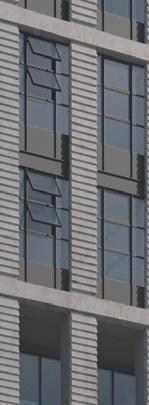





culture and education district in the waterfront area of Queen Elizabeth Olympic Park, where LCF’s new building will sit alongside other creative luminaries including the BBC, Sadler’s Wells and V&A East. Global engineering consultancy Buro Happold, has been working on key projects in and around the area since its involvement with the 2012 Olympic Games and its legacy planning. As part of a design and delivery team including (Architects) Allies & Morrison; (Cost Consultants) Gardiner & Theobald and (Construction Project Managers) Mace, it is providing a range of integrated solutions to help deliver the project.

CASE STUDY UAL 2022 24
Says Damian Wines, Associate Director – Buro Happold: “Previously we’d worked on the Olympic Park and the stadium. We started the East Bank project around six years ago and following a long design phase, we’ve been working onsite on this project for around two years.”

At its completion, the building will provide 36,000m2 of teaching, learning and practical facilities across 15 floors, bringing together 6,500 students and sta from six sites into one campus. An important proviso for the project is in ensuring the building remains on track to achieve a BREEAM Outstanding certification as stipulated by clients LLDC and their partner London College of Fashion, UAL. Explains Ian Lane, Associate Director (Sustainable Operations) –University of the Arts London: “BREEAM outstanding was something we called for in the design brief and I think we’ll be able to prove through this building that if you put that into the brief from day one it can be achieved without any identifiable additional costs.”
The Buro Happold team was challenged to develop a framework to achieve the BREEAM goal within a building that will o er a complex range of facilities accommodating many di erent uses and specialist spaces, for instance, technical workshops for printing, prosthetics, hairdressing and textiles. To achieve this - the Buro Happold team, its clients and end users have worked together to map out the use of each space over typical days and semesters to create an accurate energy model that provides the
best range of services that will help promote workflow and creativity.






Explains Wines: “Stage 2 describes the early design stage, which is benchmarked, but at stages 3 and 4 you go into the detail of the use of the space. For example, how the building is going to be used. If the students have a typical 10-week semester, during the early stages of the semester some areas are used less frequently, but towards the end of the 10 weeks, the students might have exams and assignments and may use certain spaces more intensively – so all this information was agreed and discussed with UAL to help inform the running of the building.”
Wines adds: “Daylighting is absolutely key to achieve the carbon savings on the plan, but also for health and wellbeing so we measured glazing ratios, as there’s always a challenge between enough open windows and glazing to get the natural ventilation to work and too much sun, which is why we carried out an overheating analysis, a glaze analysis and a glare analysis.”
Following extensive modelling and analysis, a 22 per cent reduction in carbon dioxide emissions has been achieved, as well as a 19 per cent reduction in embodied carbon over a 60-year lifecycle. As Lane explains, the idea is to not only ensure sustainability targets are met within the design and construction phase, but crucially throughout the lifecycle of the building. UAL were insistent that lifecycle modelling adhered to CIBSE’s Technical Manual 54 to ensure there was little or no performance gap from design to operation.

He says: “At this stage we’ve got one of the largest naturally ventilated educational buildings in London and we’ve proved the concept that you can do natural ventilation in a city, so this is a celebration of that concept, but it’s not fully proved until it’s in use.
“We set out quite clearly at the beginning what we wanted to achieve and there hasn’t been any ambiguity about that. As we said on day one we want to achieve BREEAM outstanding, and we want as much natural ventilation as possible. If we’d introduced those things halfway through the design that would have led to confusion. We arrived here [on site] with a fair level of confidence that these things were achievable as they’re goals set out at the very beginning.”
VICTORIAN MILLS
The design brief includes the delivery of the architect’s vision of a 21st century workshop within a Victorian style façade. The idea was to reference the 19th century mill buildings that are commonly seen in industrial parts of UK cities, characterised by an expressed beam and column façade, and a thin-framed window system. However, the design must simultaneously provide modern heating, acoustic and natural ventilation requirements. This stipulation in many ways assisted the team in fulfilling their BREEAM goal.
Says Wines: “The original site had some industrial usage so our design team worked
DECEMBER/JANUARY 2022 25 FMJ.CO.UK UAL CASE STUDY
At this stage we’ve got one of the largest naturally ventilated educational buildings in London and we’ve proved the concept that you can do natural ventilation in a city, so this is a celebration of that concept, but it’s not fully proved until it’s in use.”
©Duncan Campbell
with Mark’s team to come up with the original concept, concentrating on what we could use to flavour the design, with a nod to the industrial age and how that can be utilised for the building.
“If you look at 19th century buildings, most have very generous floor to ceiling heights which allows in lots of good daylight and that’s what we considered from day one, with the adoption of a passive energy management system. This means that even in areas that do have mechanical ventilation at the parameter of the building there are window overrides. This means that in practice, on a nice day if it’s not too hot occupants can open the windows and the cooling system can shut down.”
HEART OF THE BUILDING
One of the most inspirational aspects of the building design is a central atrium and circulation space, known as the ‘Heart’ which architects Allies and Morrison has designed to o er open spaces for study, learning, and social interaction. To help support this design concept the Buro Happold team came up with the construction of a Heart Wall’, a concrete frame consisting of a system of columns and beams which create a boundary between the Heart and the surrounding workshop spaces. This not only provides primary stability for the building but helps ensure a level of flexibility across the central core.
Says Mark Farthing, Programme Director (Major Capital Projects) - University of the Arts London: “The heart space is fulfilling our space brief, but it’s also performing a technical role. From the heart wall to the parameter, these floor plates will remain inherently completely flexible over the life of the building, and can be reconfigured without any change to the structural elements.”
While a key advantage of the internal heart shape is that it allows for mixed mode ventilation; a key challenge was ensuring
the acoustics could support open plan teaching, learning and collaboration. To achieve this, the acoustics team employed 3D ray-tracing modelling, which it has utilised to help demonstrate to key stakeholders, including London College of Fashion, UAL and its end users that while a little background noise is beneficial, the use of sound-absorbing material will also be utilised to ensure speech between teachers and their clusters is intelligible without ever becoming prominent or distracting.

Explains Wines: “Acoustics was absolutely fundamental, so while part of the brief was having connected spaces across the spaces, we also needed to get the level of acoustics right. We made a series of site visits to similar facilities so that we all understood what is the right type of acoustic space. We benchmarked what we needed from these spaces and applied it to the heart space for the di erent type of activities which could take place.
“We modelled all of that, including if there is any informal teaching going on, what is the preferred level of speech intelligibility. Once all of that was modelled we built the acoustic elements into the design to reduce background noise, for example, with the use of carpets and finishing’s such as acoustic panels.”
Along with a design arranged around the central Heart, the structural composition

of the building is split between lower and upper levels, with a series of workshop and practical spaces sitting above expansive, column-free areas such as the large lecture theatre on the ground floor. A clever aspect of this design is that certain areas, such as the lecture theatre can be accessed separately from the heart of the building, which helps reduce bottlenecks. It also means that during quiet, out of term times, these areas can be closed to visitors and as just the heart of the building is being utilised, this saves a huge amount on heating, ventilation and lighting.
Once completed, London College of Fashion, UAL will be one of the largest higher education buildings in an urban location to be BREEAM outstanding and deploy natural ventilation. The success of the design and build, and crucially the future of the building post occupancy rests on the hard work of a large project team and diverse group of stakeholders.
Says Wines: “We’ve got several disciplines, the architectural teams and the client side with Mark and all their teams, and one of the bigger challenges has been processing all the information being produced. Ultimately, it’s all about providing the right information at the right time.
“Establishing these clear and open lines of communication has been integral to the success of the project so far, and once the site is open to visitors we’ll revisit the innovative new UAL hub to see how the projects team’s e orts to achieve outstanding BREEAM status is carried onwards throughout its lifecycle.”
DECEMBER/JANUARY 2022 26 CASE STUDY UAL
Acoustics was absolutely fundamental, so while part of the brief was having connected spaces across the spaces, we also needed to get the level of acoustics right.”



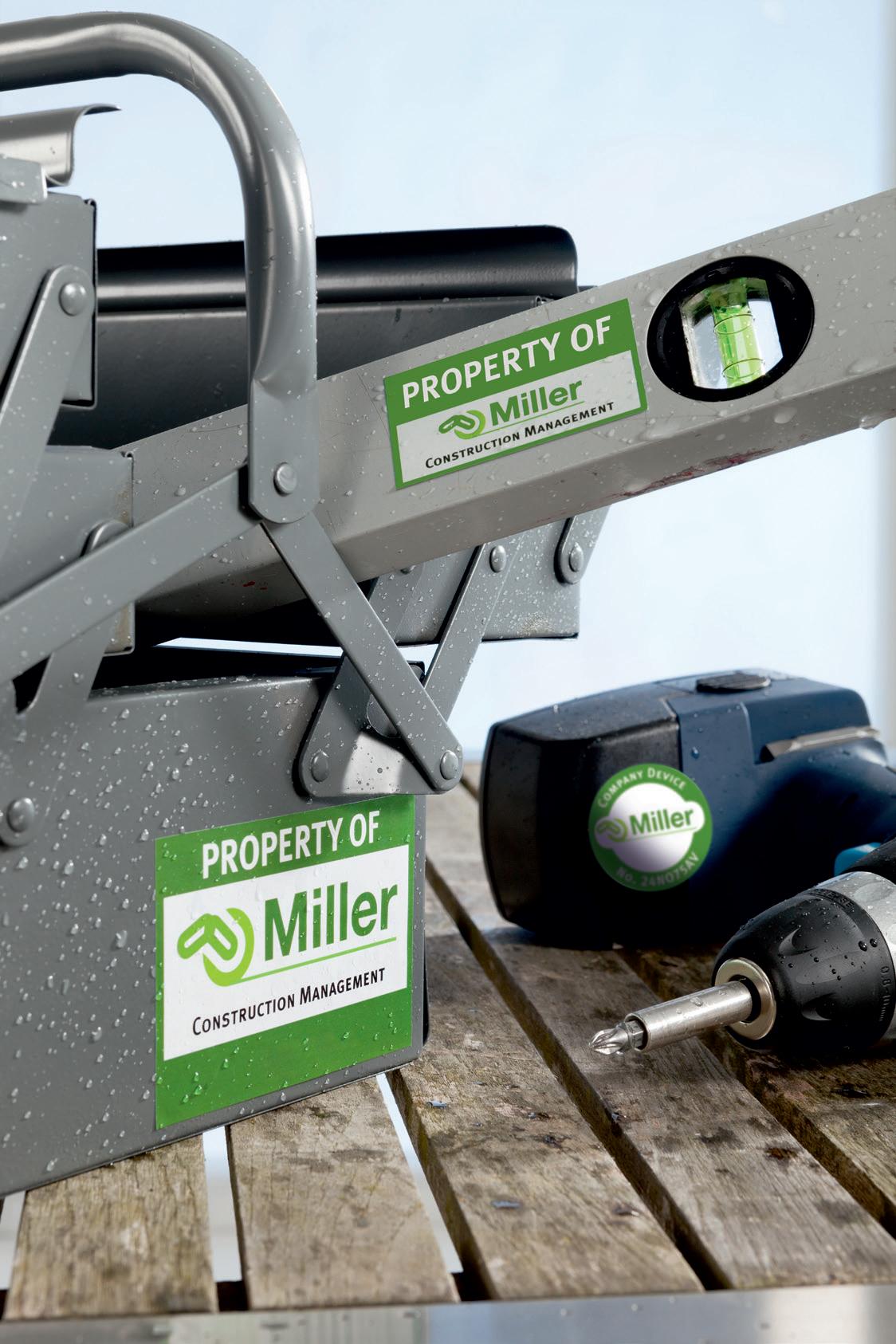
Choose from our range of products to help with Durable and high quality labelling solutions for all your needs. Health & Safety Signage in the Workplace Durable Product Labelling Protecting High Touch Items & Surfaces Keeping Assets Safe and Secure Find out more at: https://www.avery.co.uk/industrial-labelling-solutions hello@avery.co.uk | 0800 805 020 Access our free online software to design and print your compliant GHS labels AveryUK
THE HUMAN TOUCH


Sara Bean talks with Environmental Psychologist and Workplace Strategist Dr Nigel










Like many people during lockdown, Environmental Psychologist and Workplace Strategist Dr Nigel Oseland, contemplated writing a book. Unlike most he completed it, and its timing couldn’t be better. Beyond the workplace zoo; Humanising the o ice, is not only a meditation on some of the key design mistakes of the modern workplace, but it also presents ways to plan, design and manage workplaces that deliver humanistic and inclusive solutions.
Influenced by Zoologist Desmond Morris’ book The Human Zoo, which compared the experiences of city dwellers to animals in zoos, the idea of the workplace zoo is that the homogenous design of the typical open plan o ice fails to di erentiate between individual’s wants and needs. It suggests ways to break free from
this thinking and take a more human centric approach to workplace design.
As FMs and workplace managers contemplate how the workplace is going to emerge from the e ects of the pandemic, his book mines a rich history of research into environmental psychology and o ers some practical and evidence-based solutions that support vastly changed working patterns.

The history of the book explains Oseland, came from a desire to explore the results of his research into the psychology of the workplace, accumulated during a career spanning over 30 years. But it soon evolved into something deeper.
“The idea was to make psychology more accessible to people, so I thought it a good idea to take all my research and make it digestible and easily read to those who don’t have a psychology background. “When I first started writing the book I envisaged concentrating on the research but as it turned out I started to suggest things
you could do, which is when the book became two halves. In the first half of the book I explain, ‘here are the problems’ and in the second half, I o er some solutions. I’m always aware I’m not a designer but I’ve been working with design teams and helping them to gauge o ice concepts for most of my career.”







Oseland began his career as a Physiological Measurement Technician at St Bart’s in London, working with psychologists to record the physiological response to di erent kinds of therapy. This peaked his interest to study psychology at university, which gave him a grounding in gathering evidence-based data for a career which was then called, ‘human-machine interaction and human factors’.
He took a job at the Building Research Establishment in their human factors department studying the human impact of temperature, noise and other factors in a workplace environment, and while there was funded to do a Masters in Environmental Psychology and a PhD at Cranfield.
He explains: “A er 11 years I thought I can’t do research all my life so my first role in consulting was with Johnson Controls –carrying out post occupancy evaluations.”


Echoing the evolution of the book, Oseland realised that measuring post occupancy satisfaction levels was all very well, but o ering advice on space planning prior to refits would be of more value to help organisations get it right in the first place. Following stints at Swanke Harden Connell Architects as well as AMA and DEGW, he eventually set up his own consultancy Workplace Unlimited where he specialises in advising people on how to implement agile / flexible working.
DESIGN & FUNCTION

One of the particular purposes of utilising the expertise of an environmental psychologist is to help marry up design ideals with how the space may actually be utilised by occupants.

DECEMBER/JANUARY 2022 28 FOCUS INTERVIEW
Oseland about the decades of research behind his new book and why an understanding of the psychology of the workplace is essential as we embrace new ways of working
Says Oseland: “From an Environmental Psychologist perspective you put together data and people to deliver a human led and human centric workplace. Unfortunately, sometimes designers err towards what works for them and assume that what they like will work for everyone. For example, I was advising on a space for a team of highly concentrated focused workers, whose primary tasks were in marking highly technical exam papers. The architects wanted to put an open plan meeting space in the middle, because they explained, ‘in our o ice this works really well’.
“They were missing the human aspect, that buildings are there to support the people and the organisations within it and make them feel comfortable. Part of good architecture is it needs to look good, and it might even be iconic, but I come from the angle that ultimately, it’s got to work for occupants, so I’m a form follows function person.
“What I bring to design is starting from the requirements for the individuals and their organisation, and how can we collate information on that and use the hard data to devise a solution. This is gathered via surveys, consultation, feedback and observations studies.
“Interior designers o en take an experiential and intuitive approach so
it’s good to bring that data orientated element together with their approach, as I don’t want to stifle design – it’s my job to provide data and evidence but what they need to do is take that and create something fantastic.”
CHANGING WORK
The recent Workplace Trends: A New World of Work conference, which was co-founded by Oseland, concluded that there is currently a once in a generation opportunity to reinvent work and the workplace, but the danger is that the moment will pass.

Says Oseland: “One of the few benefits of COVID is that it o ers a golden opportunity to rethink o ice space and address the balance of space. If people aren’t coming in five days a week, you can reduce the desk space and open up areas to make the workplace more attractive to people.
“However, my biggest concern is when
you look at surveys being published on the ‘future of the o ice’ there is still a corporate real estate view that is highly focused on reducing space and saving money. The thinking is, ‘if we’re now hybrid working we can half our space and save even more money’. Yet for the last 20 years we’ve been densifying o ices and squeezing people in, with little thought to the consequences for workers.
“There has to be a balance between cost and space versus wellbeing and performance. Unfortunately, the industry o en focuses on the cost side, because they say they can’t measure performance and wellbeing. But my advice is not to look at one side of the equation without any idea of the consequences of what you’re doing.”
Designers are devising new ways of furnishing the o ice, for instance the number of pods being exhibited at the recent Workplace Design show suggests that this kind of individual take anywhere design solution may work as equally well in the o ice as at home.
“What I like about this approach,” says Oseland, “is that even in an open plan environment you can start to create zones,
DECEMBER/JANUARY 2022 29 FMJ.CO.UK INTERVIEW FOCUS
From an Environmental Psychologist perspective you put together data and people to deliver a human led and human centric workplace. Unfortunately, sometimes designers err towards what works for them and assume that what they like will work for everyone.”
density, don’t reduce the space but add in areas people will need.”
HOME WORK
There is growing realisation among workplace designers and managers that the o ice must now compete with the benefits of working from home. Research published by Leesman found that 82 per cent of employees felt their home environment enabled them to work productively; while just 63 per cent of employees believed that their workplace enabled them to do the same. But are reports of the demise of the o ice being overplayed? Oseland certainly thinks so.
“I think the o ice gives you a centre of gravity, where you can come together in a place that reinforces the culture, the branding, the vision, and the ethics of the organisation,” he says. “You can’t physically represent that at home or remotely. When you look at many of the more recent surveys, people are missing the social and collaborative aspect of working together as a team. That’s why you need a space where you can go into the o ice on certain days - for that whole unplanned mingling and serendipity aspect.”
Part of the principles of agile working means that people will start to work out for themselves when they ve got to come into the o ce, for instance if they ve got to nish a report and need to work without the distractions of home, or if they just want to be seen and want to connect. Working from home too often is tiring as it’s too full on, with no natural breaks built into the day.”
with areas for teamwork, collaboration and focused workspaces.”
He doesn’t predict any kind of return to the private o ice but the adoption of small pods and meeting booths which don’t have to be fully enclosed – like the carrels you see in libraries. It’s all a part of an acknowledgment that people have di erent requirements not just between individuals but even within a typical knowledge workers day.
“We’ve got to o er the choice and the flexibility,” says Oseland. “The skill is in working out the right balance, but we know that high density desking doesn’t work and nor does the private o ice. We need to provide a range of settings and let the occupants choose.
“So as hybrid working takes o it’s a good time to reconfigure the workplace, take out some of the desks, and introduce more flexible working as people are not so precious about individual set desks. For every desk you take away, reduce the

He also argues that while people may say they’re more productive at home, working without distraction from colleagues, getting focused work done etc., this takes a rather short-sighted view. What could happen in the long run, in terms of creativity and innovation?
“Your long productivity and sustainability as an organisation require people to come together to generate ideas for new products or services or whatever your culture demands. That’s the bit we’re missing out on, not being part of a body and working in tandem on the objectives of the organisation.”
However, an additional complication is in working out which days people come into the o ice, as Oseland believes implementing a rota grates against the whole idea of the flexibility of agile working. This is where good data comes into play.
He explains: “If you collect the evidence and get the data right you can prepare for
this and you don’t have to demand sta come in every day. I always tell clients that they should have one day a week when all their team is in and arrange this for a Monday or Friday, which helps balance the use of the space out over the week.
“Part of the principles of agile working means that people will start to work out for themselves when they’ve got to come into the o ice, for instance if they’ve got to finish a report and need to work without the distractions of home, or if they just want to be seen and want to connect.
Working from home too o en is tiring as it’s too full on, with no natural breaks built into the day.”
ROLE OF FM
Now that the centre of gravity has moved away from the o ice, the FM sector has to acknowledge that the scale of a workplace should no longer be represented by a number of desks it can contain.
“The desk is a small part of the workplace now, it’s still essential for some roles but for a lot of the high-end corporates the desk is a small part of what makes the o ice attractive, which includes the services and facilities. For FMs, it’s also about how they can support people at home and on the move, and their organisation’s hybrid work pattern could be a mixture of a dedicated o ice and membership of a co-working space.
“FMs also have to recognise that their remit is now much broader than it ever was and to accept that they can’t do it on their own, they’ll need to work with HR and IT. My advice would be not to be passive about this, it’s not about FM responding to the corporate need, it’s more about advising and leading the way. Look at the research, go to the conferences, find out what other organisations are doing, and start to devise a strategy. Too o en FMs take a passive responder’s mode not an active leader’s, yet they’re in a unique position to lead.
“FMs also need to break free from an obsession with cost and reducing space. This is not the FM main remit – it shouldn’t be about managing space in order to reduce it but about managing space to help improve the performance of the organisation and its people. That’s how you get on the top table, from moving from being a supplier to being an adviser and a leader.”
FURTHER INFORMATION
e on the or place oo umani in the ffice https://bit.ly/3r5qCUp
https://workplaceunlimited.com
DECEMBER/JANUARY 2022 30 FOCUS INTERVIEW
WE HAND BUILD EVERY CHAIR BECAUSE WE CARE.












Hand built in the UK for over 35 years, to the highest quality standards, Evac+Chairs can be relied upon in an emergency situation to ensure you can evacuate everyone.












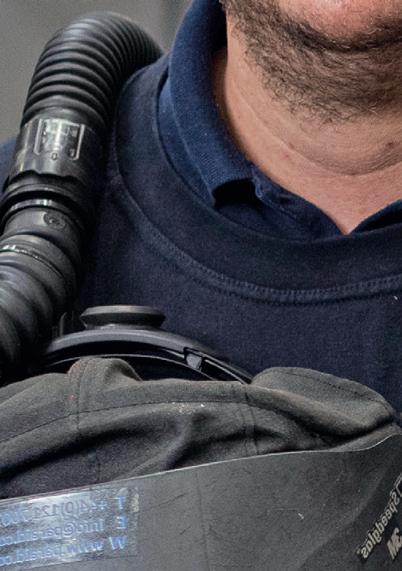



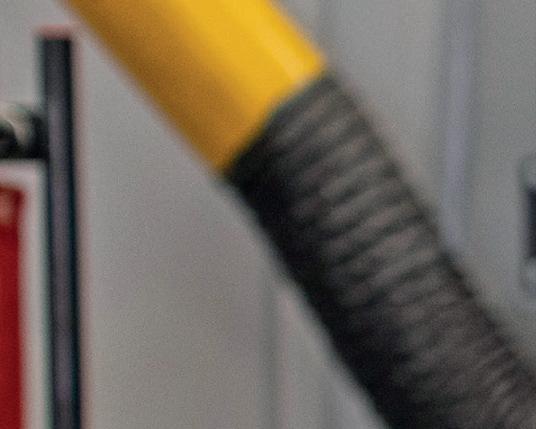

With quality checks throughout the whole manufacturing process and utilising a purpose built multi angled staircase our Evac+Chairs are rigorously tested before despatch; we pride ourselves on our superior product quality. Our wide range of evacuation chairs coupled with our nationwide team of consultants and engineers, ensures that we can provide guidance on the best chair for you, train your employees and maintain your Evac+Chair throughout its lifetime. Contact us today for more information or to book a FREE evacuation assessment

+44 (0)
706 6744 evacchair.co.uk · enquiries@evacchair.co.uk
Call
121
THE ORIGINAL MANUFACTURER AND GLOBAL LEADER IN EMERGENCY EVACUATION CHAIRS FOR THE MOBILITY IMPAIRED. DEANFABRICATION TECHNICIAN
Over the last 18 months, the world of work has changed, most likely forever – from fixed corporate o ice workstations to a more flexible blend of remote, o ice, and home-based workspaces. As the new generation of tech-native and influential Gen-Z workers assume their places to drive our economic future, the balance of power has tipped in favour of employees in making decisions over how and where they work. These changes mean that technology and equipment that supports comfort and productivity can no longer be limited to the o ice. This begs the question, are employers ready for this change?
According to a recent survey by Ergotron , nearly three quarters of UK workers (73 per cent) would choose their next employer based on the provision of flexible technology and wellbeing support. If this isn’t enough of a wake-up call, it may not be long before there is UK Government legislation to support the needs of remote and home-based workers. There is a growing need for employers to prioritise the development of a clear flexible working strategy which promotes the health and wellbeing of their employees. As they reduce their corporate building footprint, employers now need to be ready to scale up provision for their workers to communicate, connect, and create - wherever they may be located.




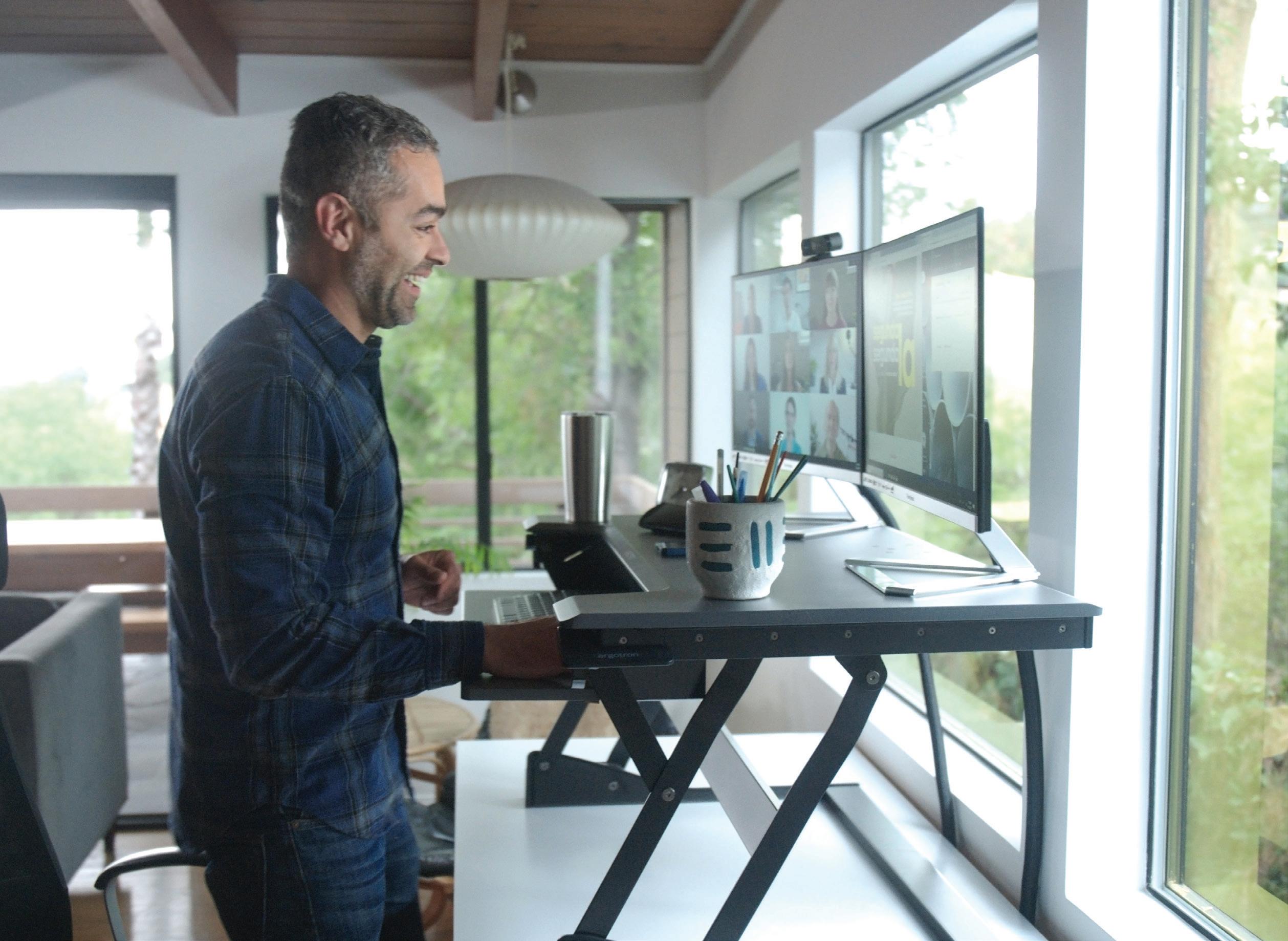
THE IMPORTANCE OF OFFICE DESIGN

As a result of the pandemic normalising remote work, workers are unsurprisingly choosing not to return to the o ice full time. So ware comparison company Capterra surveyed an international group of 4,600 employees to find the extent they would like to work full time in the o ice a er the pandemic, and found that one third of home workers do not want to return to working solely in the o ice.
At the same time, many large organisations are already revising their return-to-work strategies and reviewing their corporate o ice space. A Fortune/Deloitte survey found that up to 76 per cent of CEOs think they will need less o ice space in the future. Since then, Deloitte

DECEMBER/JANUARY 2022 32 FOCUS HEALTH & SAFETY
SUPPORT STAFF With a recent survey revealing that workplace wellbeing is a priority for staff, it s time to invest in workspace technology to support the health, safety and wellbeing of workers, says aul uidema, Managing Director EMEA, Ergotron
made the controversial announcement to do away with its global o ices, while retailer Ralph Lauren announced it was cutting corporate o ice space by 30 per cent, making it one of many companies to downsize their physical space over the past two years.
There are now critical factors for employers to consider when revising their return-to-work strategies to accommodate the now-normal hybrid embodiment of work environments. This includes the need to embrace flexible technology which best facilitates collaboration between teams. It is a priority that they address the design of working spaces, by creating workspaces that reduce stress and facilitate collaboration, for an improved employee working ‘experience’.
The findings of the Ergotron survey (conducted by independent research agency, Research Matters, of employees who work entirely or partly from home since the pandemic) reveals employees’ needs and preferences around workstyles and conditions. Factors such as the option to stand or sit while working, noise, room lighting, and temperature may all have an impact on productivity. Employers need to listen to how their workers want to work and be aware of what constitutes ergonomic furniture and flexible technology for employees.
With open plan o ices linked to more stress, lower morale and productivity, new concepts for o ice layouts are required, along with provision of in-o ice and athome equipment, to promote productivity and give employees choice.
THE NEED TO OPTIMISE OFFICE EQUIPMENT
Just as it’s crucial for employees to be provided with the right applications and technology solutions to do their jobs, it is vital to provide suitable equipment for them to carry out their roles. The Ergotron survey reveals that o en furniture, tools or technology employers think is important di ers from the view of the employee. The survey found that 84 per cent of UK employees consider an ergonomic chair highly important for their roles, yet only 22 per cent of the employees polled have been provided with
such a chair.
Personalised technology and easy customisation are vital for flexible working. In desk-based roles, this needs to factor in positioning chairs and desks at the optimum height for each employee. Customisable equipment which moves easily is a key consideration; for instance ergonomic seating, large screens, flexible monitor arms, adaptable workstations, and mobile desks.
Workspace tools should benefit





























moving while at work. In fact,
Workspace tools should benefit productivity, while also supporting employee comfort and health. Health problems that arise because of poorly appointed equipment, such as back problems, should be the responsibility of the employer. Sitting for long stretches may cause healthcare problems and the UK’s next generation of workers have strong views on moving while at work. In fact, 71 per cent of workers surveyed aged 18-24 consider it important to be able to switch between sitting and standing while working.
The answer to successful flexible working lies in personalised technology, which should be easy to move and customise. A height-adjustable work surface
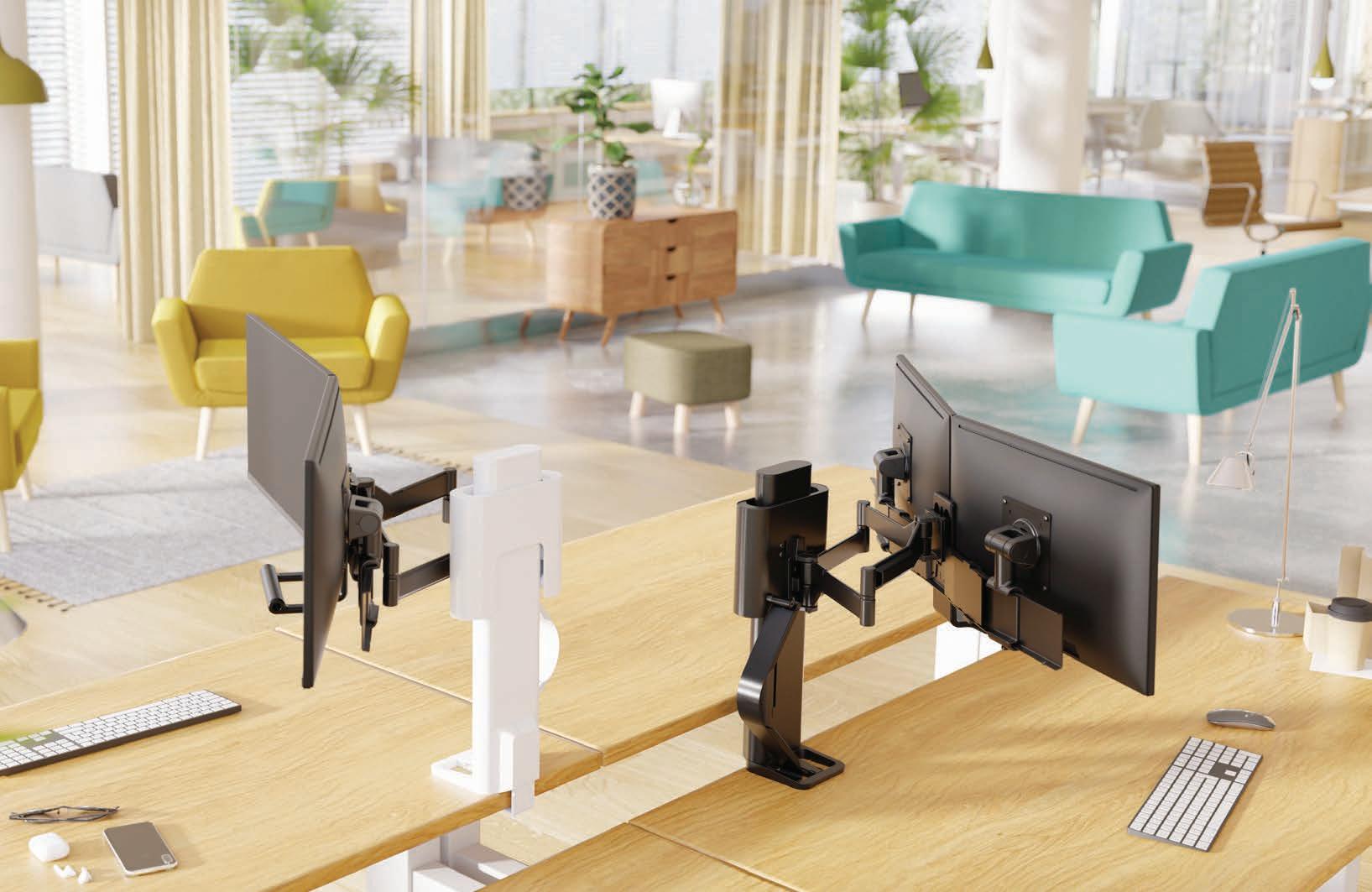
DECEMBER/JANUARY 2022 33 FMJ.CO.UK HEALTH & SAFETY FOCUS
ith open plan office lin e to more tre , lower morale an pro ucti it , new concept for office la out are re uire , alon with pro i ion of in office an at home e uipment, to promote pro ucti it an i e emplo ee choice
lets employees vary their working posture throughout the day and discourages sitting continuously for eight hours. Ergotron’s research shows that 64 per cent of employees consider a height-adjustable work surface to be hugely important. This includes ensuring every station has an easy-to-adjust display; shared workspaces should have a monitor arm that’s easy to adjust and position by hand.

It is an additional advantage if the monitor arm can support multiple screens. The research showed that employees across all the age ranges favoured this, with 62 per cent of those surveyed aged 25-34 and 73 per cent of over 55s considering it important to work with two monitors. A dual monitor also allows employees to quickly transform their desks into collaboration stations, so they can share screens with colleagues for integrated work.
Shared workspaces require additional considerations. Most employees (84 per cent) find it very important to be able to hold meetings when part of the team is in the o ice and the rest are working remotely. Work tools must be easy to unplug and move, so employees can
find a suitable space for each activity or need throughout the day. The survey also shows that 75 per cent of employees find it important to be able to easily switch between workspaces, which means that portable devices are vital.
ENSURING EMPLOYEE COMFORT AT WORK
The transition to flexible, shared workspaces is an opportunity for organisations to invest in ergonomic furniture that encourages movement and supports employee health. In many countries, employers are legally responsible for ensuring this. Companies can let employees choose from a range of ergonomic furniture for the home or provide a budget to purchase their own. Ergotron’s research shows this provision is getting started in the UK, with about 19 per cent of employees surveyed receiving such allowances from their employers.
Policy and practice are equally important. Leaders should formalise working arrangements through HR policies which reflect ergonomic working and physical activity while at work, and tools and technologies that meet the needs of evolving workstyles. Employee wellbeing checks are vital as part of embracing employee
performance, wellbeing, and satisfaction. An employer that is not regularly checking on sta cannot be sure employees are comfortable in their work. The survey showed that 63 per cent of employees do not have a manager who regularly checks on how they are doing, which is another area for improvement.
THE WORKING WAY FORWARD
If employers are intent on their sta maintaining an o ice presence, the goal must be to create an environment where employees want to work, by creating spaces and collaboration opportunities that are more satisfying and productive than being 100 per cent remote. And if the choice is home-based, it is equally as important that this is within a flexible workspace which promotes health and bolsters morale. Hybrid workspaces shouldn’t come at the expense of employee ergonomics.
The importance of an ergonomic workspace in the o ice and at home cannot be understated. It equates to making an investment in people, which is one of the key rules for a successful business. This first means developing a work strategy that supports employee health and is based on real and specific employee needs; then, it’s listening and working closely with your employees to create dedicated spaces. This way forward will encourage healthy movement, productivity, and a collaborative spirit, which will be more productive for individual workers and the bottom line.
DECEMBER/JANUARY 2022 34 FOCUS HEALTH & SAFETY
olicy and practice are e ually important Leaders should formalise working arrangements through HR policies which re ect ergonomic working and physical activity while at work, and tools and technologies that meet the needs of evolving workstyles



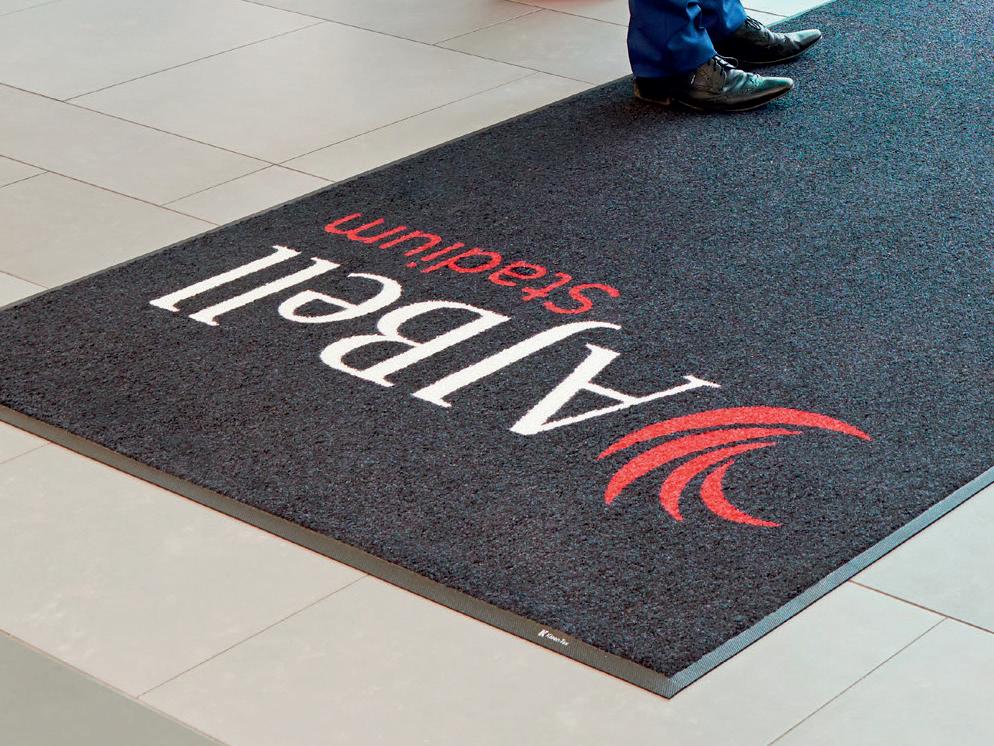

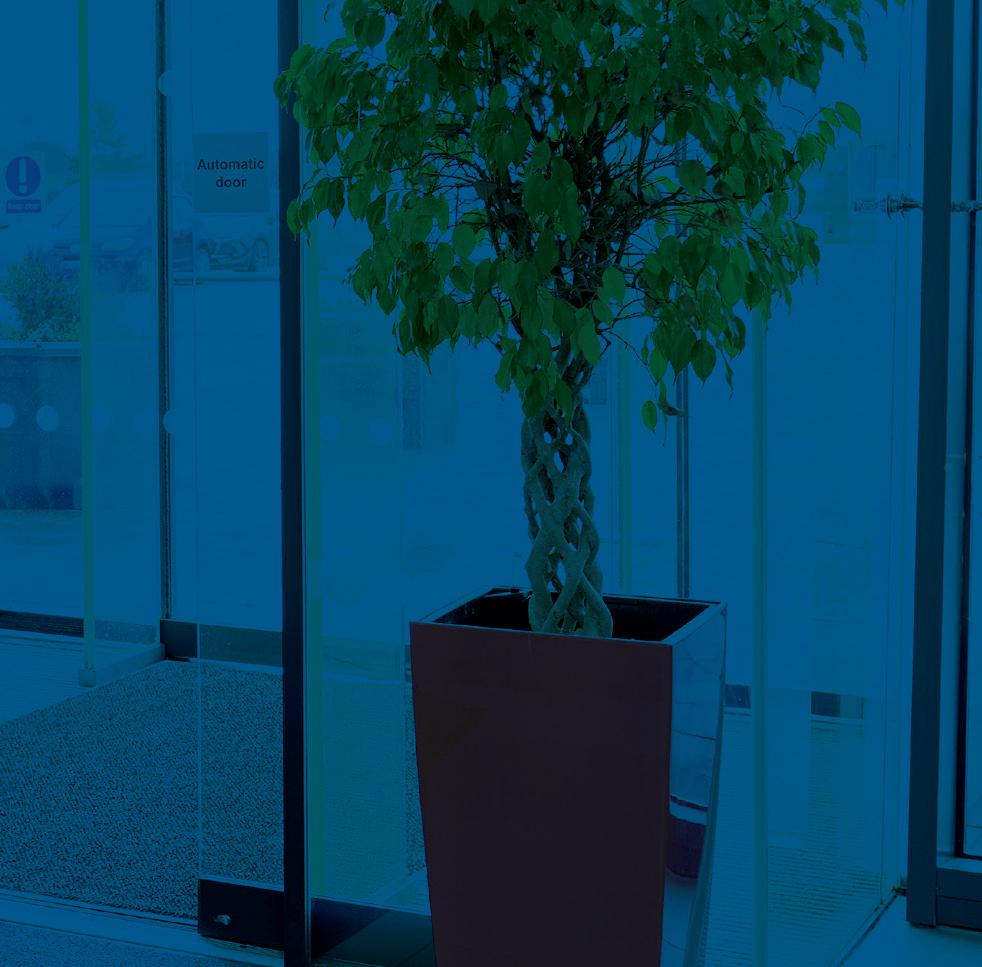

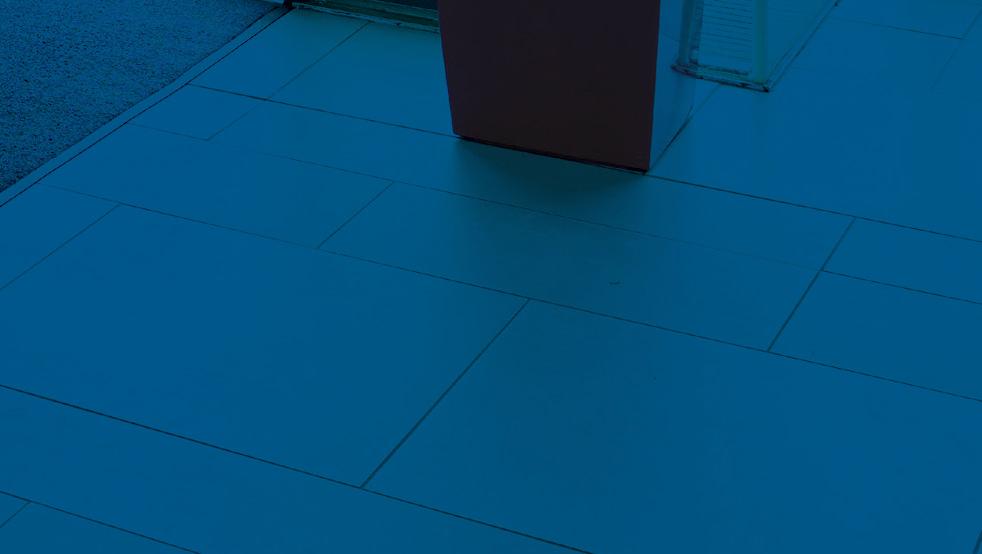
With more than 50 years experience in mat production and innovation, Kleen-Tex provides a wide range of products to reduce dirt and moisture from entering your premises. þ Keep dirt and moisture at bay þ Reduce slip hazards þ Cut cleaning costs MAKE MORE OF YOUR FLOOR For more information: +44 (0)1204 705070 www.kleen-tex.co.uk info@kleen-tex.co.uk Recycling Food waste Residual (non-recyclable) waste waste Healthcare Hazardous waste WEEE Event waste TOTAL WASTE MANAGEMENT FROM GRUNDON • We provide a Total Waste Management service for the reduction, reuse, recycling, recovery and disposal of waste • We ensure that you and your organisation are fully compliant with all relevant legislation • We deliver this via a combination of specialist services, • We do the waste, leaving you free to manage your facilities innovative thinking and contract management • We operate our own state-of-the-art treatment facilities TOTAL WASTE MANAGEMENT Recycling Food waste Residual (non-recyclable) waste waste Healthcare Hazardous waste WEEE Event waste TOTAL WASTE MANAGEMENT FROM GRUNDON Tel: 01753 686 777 Email: info@grundon.com Web: www.grundon.com THE COMPLETE WASTE MANAGEMENT SERVICE ALL UNDER ONE ROOF
BROADENING THE SCOPE
At the start of this year, there was real optimism that 2021 would be a year of major climate action. While several key government policies were delayed, ahead of COP26, it published its long-awaited Net Zero Strategy(i) and Heat and Buildings Strategy(ii) in October, which followed the Industrial Decarbonisation Strategy(iii) and Transport Decarbonisation Plan(iv) earlier this year.

We have also seen an increasing number of organisations in both the private and public sectors committing to ambitious carbon reduction plans, which has led to greater scrutiny in terms of exactly how businesses

are measuring, managing and reporting their carbon impact.
As such, while great strides are being taken to reduce the ‘direct’ emissions from premises and power supply, attention is now turning to the ‘indirect’ emissions from the wider value chain. In the private sector, many businesses are aligning their plans through the Science Based Target initiative (SBTi)(v), and a key part of this is putting strategies in place to reduce Scope 1 (direct), 2 (power-related) and 3 (indirect) emissions as outlined in the GHG Protocol.
For facilities managers, this can impact them in a number of ways, depending on


where their business sits in the supply chain. As an ‘influencing’ business, they may be required to provide support to help report emissions generated beyond their own operations. Or, they could be in an ‘influencee’ business, where a company they supply is now requiring them to change how they work so the ‘influencer’ company can meet their own sustainability targets.
Or, they could be both an influencer and influencee business, wanting to reduce their own indirect emissions while also needing to meet the sustainability requirements of another company they supply.
Therefore, it can be easy to see why addressing both direct and indirect emissions can be a hugely complex area to navigate.



WHAT ARE THE THREE SCOPES?
Firstly, it makes sense to look at what the three ‘Scopes’ are. According to the GHG

DECEMBER/JANUARY 2022 36 FOCUS SUSTAINABILITY
Solutions explains why Scope 3 needs to be on your sustainability agenda
Anthony Ainsworth, COO at npower Business
Protocol, they are defined as:
- Scope 1 covers direct emissions from owned or controlled sources, such as buildings and premises. This includes fuel combustion and company vehicles.

- Scope 2 covers indirect emissions from the generation of purchased electricity, steam, heating and cooling.
- Scope 3 includes all other indirect emissions that occur in a company’s value chain. This includes business travel in non-company vehicles as well as employee commuting. It also includes emissions arising from your purchased goods and services and both upstream and downstream transportation and distribution.



Until recently, many businesses have focused on reducing emissions from their own operations and power consumption under the GHG Protocol Scope 1 and Scope 2 framework as they are largely within a business’ control. You can, for example, switch to renewable energy or commit to electrifying your fleets to help reduce these emissions. While using power from the grid will still have emissions associated with it, as the grid moves to renewables, these emissions will reduce.
However, the move towards net zero means that businesses need to look beyond this and across their entire supply and value chain, which is where Scope 3 comes in.
This is where it gets more complicated as it covers everything from the goods purchased to the disposal of the products you sell. In general terms - everything that happens outside of your business’ walls.
Typically Scope 3 can account for 80-90 per cent of an organisation’s emissions. However, while the Scope 3 standard is the only internationally accepted method of measuring value chain emissions, measuring Scope 3 emissions can be complex and time-consuming.
That said, there are numerous commercial and reputational benefits to understanding Scope 3 emissions. For example, as they become more climate aware, consumers are now more likely to look at a company’s whole value chain when it comes to brand loyalty.
For businesses who form the supply chain, future contracts may depend on having a strong sustainability plan in place.
only grow.
DECIDING WHICH AREAS OF SCOPE 3 ARE MOST RELEVANT
The first step towards e ective Scope 3 reductions is deciding where to focus your e orts for maximum impact.
There are 15 distinct Scope 3 categories, ranging from business travel to leased assets, all relating to the indirect emissions which come from your business’ value chain. Depending on what your business does, some will deliver more valuable and measurable results than others.
“Typically Scope 3 can account for 80-90 per cent of an organisation’s emissions. However, while the Scope 3 standard is the only internationally accepted method of measuring value chain emissions, measuring Scope 3 emissions can be complex and time-consuming.”
That is why collaboration is crucial. With more organisations in both the public and private sectors now declaring Scope 3 as part of their decarbonisation strategies, the importance of understanding what this means for your business’ net zero plans will
When deciding where to focus your e orts, there are several things to consider. For each of the 15 Scope 3 categories, begin by using high-level data to determine the contribution it makes to your overall GHG emissions. Then, go a little deeper by using criteria such as size, influence or risk to the business to decide whether the category should be considered a relevant focus area for your business’ Scope 3 emissions reduction activity.
DECEMBER/JANUARY 2022 37 FMJ.CO.UK SUSTAINABILITY FOCUS
INDIREC T investments transportation and distribution processing of sold products end-of-life treatmentof sold products use of sold products leased assets franchises Reporting company Upstream activities Downstream activities company facilities company vehicles
DIREC
Scope2 INDIRECT
purchased goods and services capital goods purchased electricity, steam, heating & cooling for own use business travel waste generated in operations fuel and energy related activities transportation and distribution employee commuting leased assets
CO 2 CH4 SF6 N2O HFCs PFCs Scope3
Scope 1
T
Scope3 INDIRECT
GATHERING YOUR DATA
Measuring Scope 3 emissions can be challenging as it involves acquiring adequate and accurate data from across the value and supply chain.
In an ideal world, every business would have cutting edge data-management systems and access to accurate, up-to-date information on every product and service used. However, this is rarely the case. For now, the message to businesses is to do the very best you can with the data and resources you have available.
COLLABORATION IS KEY
The administrative challenge of drawing data together from disparate sources and turning it into meaningful information that can be acted upon requires engaging with your suppliers.
This means that successful progress begins with the complex task of engaging a supply chain, which may exist across geographical and cultural boundaries. It’s no mean feat, and will create di erent challenges for each business.
FOR US, THERE ARE FIVE STEPS TO TAKE FOR BETTER COLLABORATION:
Set clear expectations for your suppliers. Consider incentivising supply chain partners to improve their carbon reduction measures and their data gathering methods. Have a clear criteria
for any new suppliers you enlist, as well as internal procurement targets that have environmental and ethical standards built in.
Set up interviews with suppliers to better understand their processes and people, and to get a view on where improvements could be made, as well as their obstacles to carbon reduction.
Facilitate workshops with key suppliers to help them understand where action could be taken on carbon reduction. This will also provide a forum for peerto-peer support and will help to foster innovation and encourage an exchange of best practices.
Provide co-branded training materials for your suppliers’ teams, to help them spread the word on net zero and get everyone behind the efforts you are making to reduce carbon.
Get your internal stakeholders onboard right from the outset. The best results will be achieved by having input and oversight from right across your business, including procurement teams and the c-suite. Your net zero strategy needs to align with broader business objectives if you want to ensure that
everyone is invested in driving carbon reduction action forward.
THE BUSINESS BENEFITS OF SCOPE 3
As the importance of measuring Scope 3 emissions grows, facilities managers will increasingly be required to support their business’ sustainability targets by looking at both the carbon impact of the areas they are responsible for and the suppliers they use.
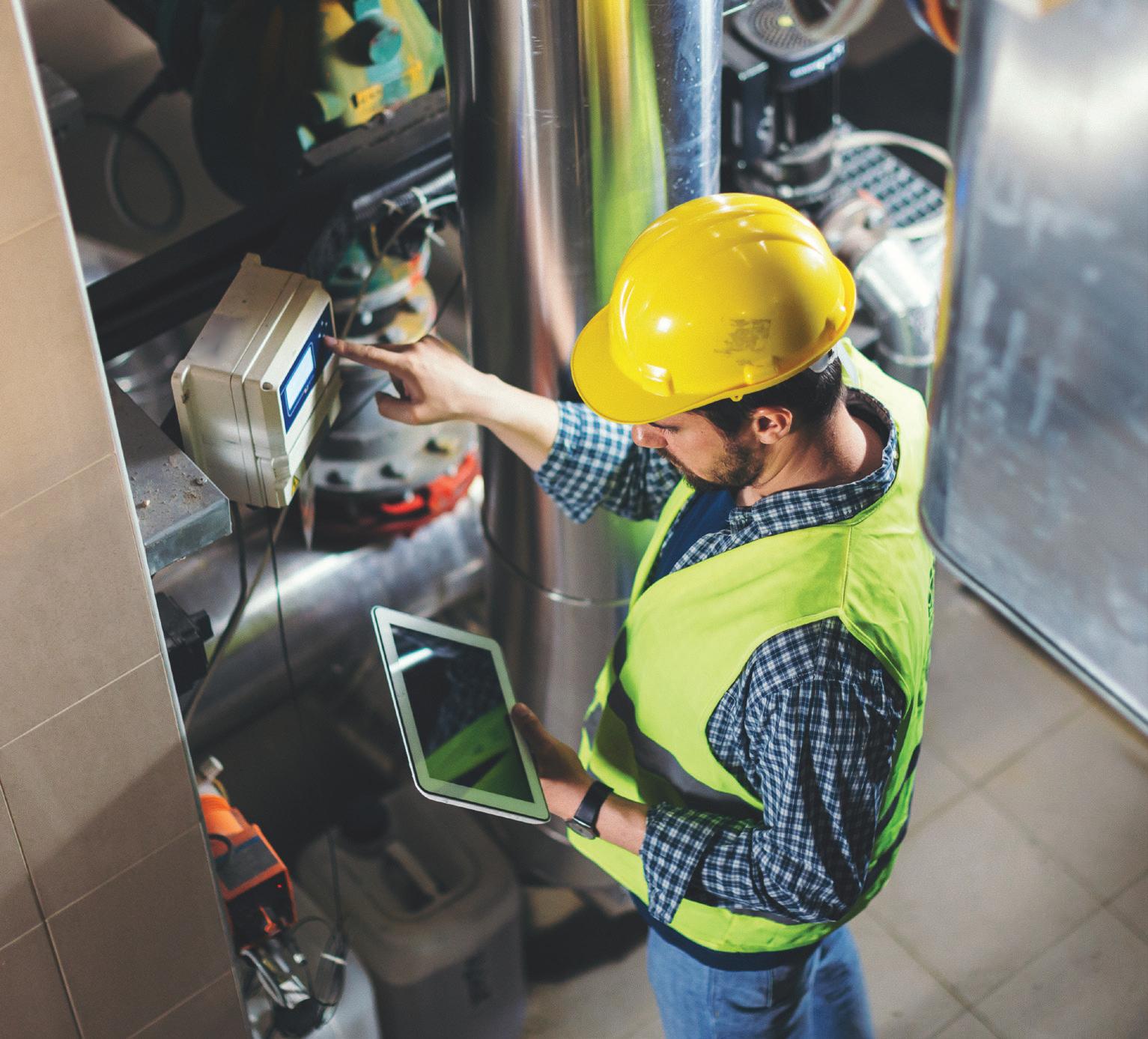
Although calculating Scope 3 emissions can be complex, there are several benefits to taking a proactive approach. The Science Based Targets initiative (SBTi)(vi) has said that companies committed to the initiative are able to demonstrate that creating a climatesecure world supports their successful business operations. This means that having a robust strategy across the whole supply chain is as much about economic resilience as it is about reducing carbon emissions as it will also help to protect your business from future risk.
For those within the value chain of a public sector or a larger corporate organisation, it will increasingly mean the di erence between winning a supply tender or losing it.
As well as boosting e iciency and productivity across the value chain, it will also set your organisation apart as a sustainability leader, helping to unlock commercial opportunities as well as retaining and attracting fresh talent.
In our 2020 report, ‘Your Business Blueprint - The Road to Net Zero’(vii), respondents fed back that one of the benefits of having a strong sustainability strategy was attracting the next generation of talent. Potential new recruits are increasingly assessing a company’s climate commitments as well as more ‘traditional’ criteria, so including Scope 3 emissions could be a key di erentiator.
That is why we have created a new guide - ‘Scope 3 and Your Road to Net Zero’ - to provide advice and ideas on where to start, which can be downloaded.(viii)
REFERENCE NOTES
(i) www.gov.uk/government/publications/netzero-strategy
(ii) www.gov.uk/government/publications/heatand-buildings-strategy
(iii) www.gov.uk/government/publications/ industrial-decarbonisation-strategy
(iv) www.gov.uk/government/publications/ transport-decarbonisation-plan
(v) https://sciencebasedtargets.org/ (vi) https://sciencebasedtargets.org/ (vii) https://npowerbusinesssolutions.com/yourbusiness-blueprint (viii) https://npowerbusinesssolutions.com/ scope-3
DECEMBER/JANUARY 2022 38 FOCUS SUSTAINABILITY













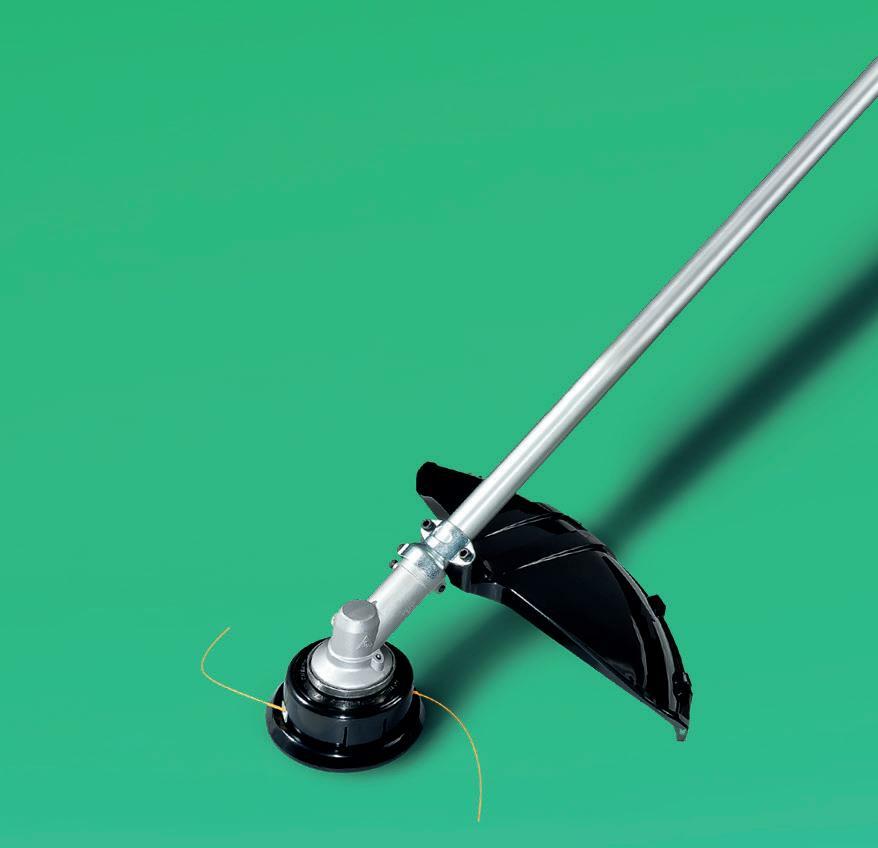





































































Everyone wants to get what they paid for. Facilities Management Journal is independently verified by ABC, because we want our advertisers to know they’re getting the exposure they’ve been promised. ABC. See it. Believe it. Trust it. To advertise call Danny Grange on 07867 418994 BE WISE WHEN YOU ADVERTISE www.abc.org.uk 40V & 80V XGT: THE FUTURE IS POWERFUL makitauk.com/XGTgarden 80V MAX XGT BRUSHLESS BRUSH CUTTER: UR012G Spindle Size M10 x 1.25 Left, Noise sound pressure 79.9 dB(A), Noise K factor 1.8 dB(A), Vibration K factor 1.5 m/sec², Noise sound power 91.6 dB(A), Cutting diameter 480mm, Maximum Output 2,000w, No Load Speed (Hi) 6,40 rpm (Med) 5,000rpm (Lo) 3,500 rpm, Vibration 2.5 m/sec², Net weight 8.0 - 9.3kg. IPX4 level water resistant, Compatible with a variety of blades, Active Feedback Sensing Technology, Automatic Torque Drive Technology, Reverse switch for easy removal of grass clippings stuck, Soft start, Constant speed control. Blower: UB001G. Hedge Trimmers: UH004G, UH005G, UH006G, UH007G. Split Shaft: Brush Cutters: UR002, UR003G, UR006G, UR008G, UR012G. UX01G. Our Fire Solutions engineers provide a full range of fire prevention and suppression systems as well as security solutions to keep public and private buildings safe. From design and installation to testing and maintenance, our service is fully comprehensive. Premier Technical Services Group Ltd (PTSG) operates five specialist divisions serving 20,000 customers from 41 UK o ces. Find out more at ptsg.co.uk ptsg.co.uk | 01977 668771 | info@ptsg.co.uk | @ptsgltd FIRE PREVENTERS
At this stage it has become fairly clear that COVID-19 is set to leave a lasting impact on the commercial real estate market. It’s easy to recall what routine life looked like for many prior to the pandemic. Adhering to strict working hours was the norm, where the o ice stood as the central hub of all productivity. Employees would arrive, work at their desk, and leave again more or less within the hours of 9am and 5pm.
Today, however, things look a little di erent.
THE FUTURE OF THE OFFICE
While remote and hybrid working models were in the vast majority of instances born out of necessity as a result of national lockdowns, social distancing, health concerns and general uncertainty, today they appear to be normalising,
with businesses having recognised the benefits for both employer and employee.
Indeed, according to a report from the Institute of Directors released at the end of April 2021, as many as 63 per cent of business leaders outlined intentions to adopt hybrid working models a er the restrictions in place in the UK at the time had eased. Further, around one in 10 firms revealed that they would be looking to work from home permanently.

A survey of London o ice workers also showed that employees wanted to spend an average of 2.7 days back in the o ice once all COVID-19 restrictions have been li ed – down from the 4.2 days a week that was typical prior to the pandemic.
Such a stark shi has inevitably had a significant e ect on the commercial real estate industry.
DECEMBER/JANUARY 2022 40 FOCUS STORAGE
With many companies likely to need to still access important items, even as they downsize their o ces or clear space for collaborative areas, achel Houghton, Managing Director at Business Moves Group offers advice on accessible storage options for o ce furniture and e uipment STRATEGIC STORAGE
Statistics from Savills reveal that property vacancy rates in the City of London rose from 5.3 per cent in March 2020 to nine per cent in June 2021 because more companies opted not to renew their leases. Indeed, many are now taking the time to decide what the most logical approach may be for their firm moving forward – be it o ice-based, hybrid, or fully remote.
It is likely that the majority of companies will still require and desire some kind of o ice space. Dedicated company workspaces have been proven to boost employee wellbeing, enhance innovation and collaboration, cultivate relationships, and more easily instil company-wide cultures.
However, what these workspaces look like will, in many cases, change as the needs of occupants’ shi , be it downsizing or rethinking what the workplace should look like to address the needs of the employee more e ectively in the new normal.
GETTING RELOCATION RIGHT
During this interim period, solutions will be required to reduce some of the pressures and provide businesses with peace of mind.
more per square metre than warehouses or dedicated storage units.
Take location, for example. Those companies based in city centres may find cheaper storage opportunities a few miles away.
putting together the exact same set
When a company leaves a premises, it is unlikely they will take absolutely everything with them in the aim of putting together the exact same set up in their next o ice. Instead, moving o en provides the perfect opportunity to discard unwanted items and replace them with modern, updated replacements, from IT equipment through to artwork and furnishings.
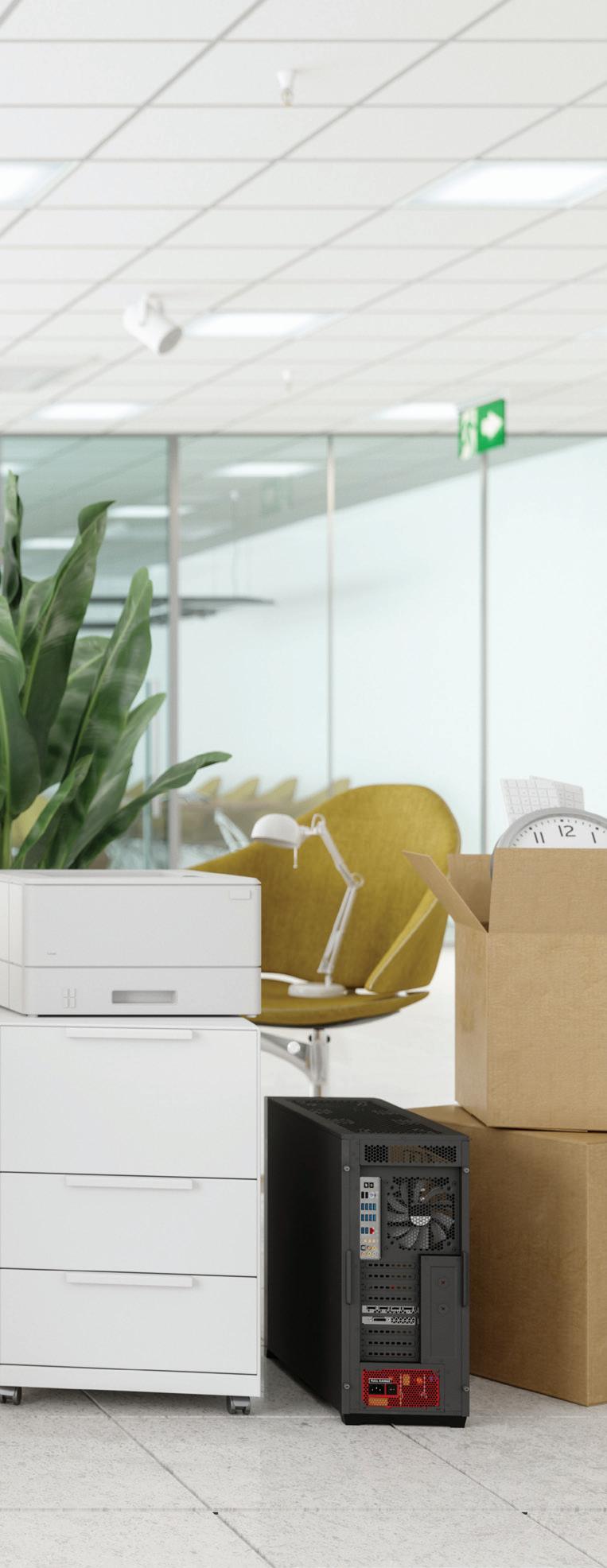
However, deciding what to move, store, recycle, refurbish and/or donate is easier said than done.
STRATEGIC STORAGE
There are many considerations that should be taken at this stage, including the cost of storage, the length of time an item will be le in storage, and the cost of a new or replacement item should you opt not to keep the old one.
Some companies may be tempted to continue storing items in their old workplace for the sake of convenience, yet this is a highly uneconomical approach, with o ice space costing considerably
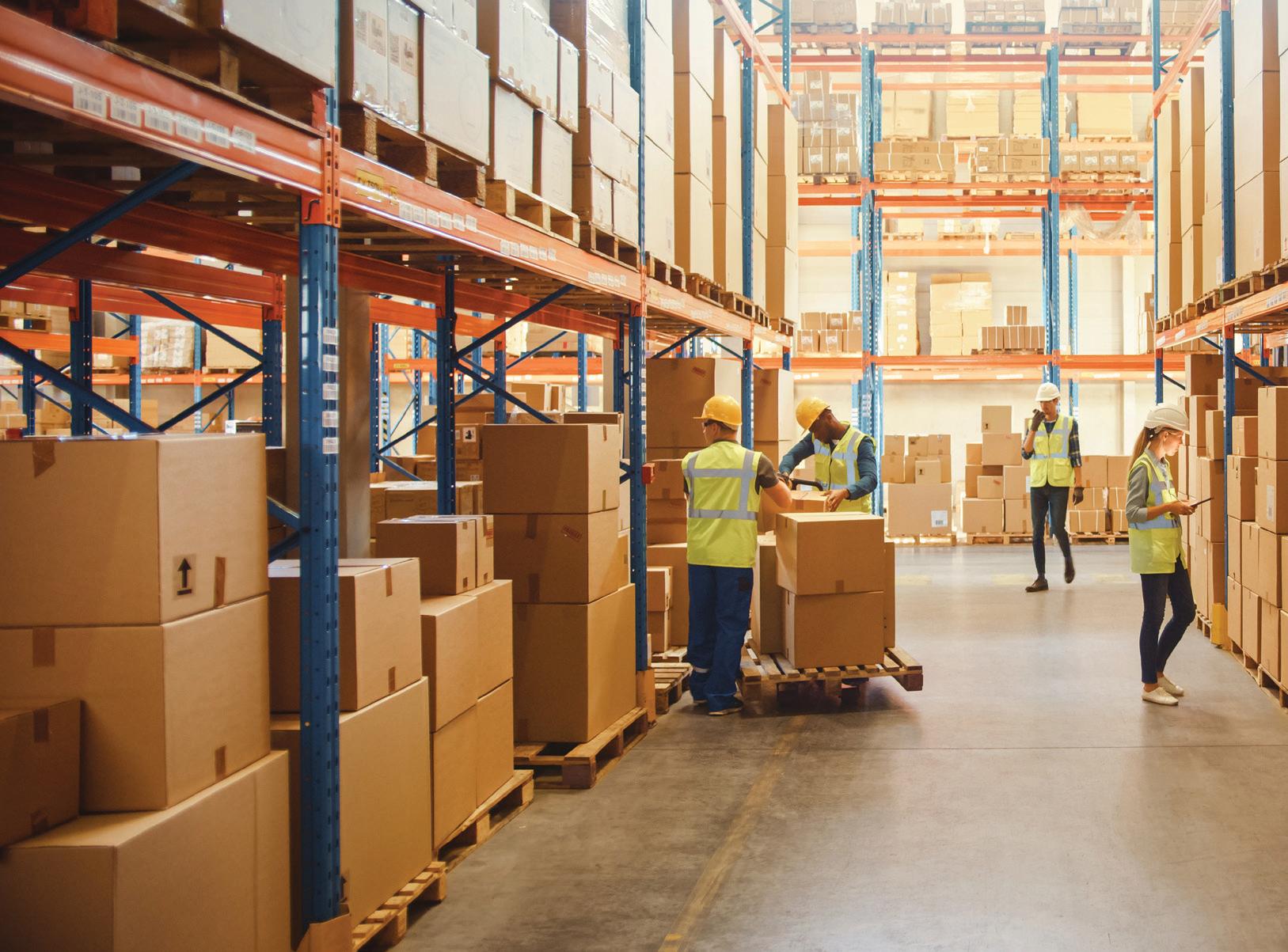
Firms should also create a digital list of their assets that can be updated in realtime (and ideally including images), taking note of the condition of each item before it leaves a site or goes into storage. This will ensure it is easy to identify when assets have been lost or stolen, with a proven and traceable record.
time (and ideally including images),
firms won’t have the














The challenge with these endeavours, however, is that many firms won’t have the time, ability or funds to tick such boxes.
Moving large assets long Equally,
Moving large assets long distances may prove extremely di icult for a company lacking in transport options. Equally, making a digital list of assets is desirable, but a highly time-consuming process.
FIVE THINGS TO LOOK FOR IN A STORAGE PARTNER


It is for this reason that firms o en opt to partner with a dedicated storage and relocation services provider that has the experience, expertise, knowledge and tools to deliver as needed.

DECEMBER/JANUARY 2022 41 FMJ.CO.UK STORAGE FOCUS
Some companies may be tempted to continue storing items in their old workplace for the sake of convenience, yet this is a highly uneconomical approach, with office space costing considerably more per square metre than warehouses or dedicated storage units.”
With so many options available on the market, here are five key things that we advise to look for when choosing the optimal storage solutions partner.

Proven asset lists
Any successful storage partner will assist in putting together a comprehensive asset list. They should have a proven track record in running digital audits and maintaining an online inventory of everything in storage, taking the hassle of doing so out of your hands.
Flexible leasing
It makes no sense to store something for so long that you end up paying more in storage than you would to simply replace the item in question. Yet it can be equally di icult to determine what sort of length of time this might be. Thankfully, many storage partners work with their customers to determine a logical target date. Once that date arrives, they should contact you to check if they want to continue storing some or all of their items or look for alternative arrangements.
Security services
It is highly likely that a company will be storing some extremely expensive and/or important equipment, from furniture to IT equipment to critical company records and documentation. It is therefore imperative that your storage partner has a proven security record and protocols in place. Some desirable assets on this front include gated facilities, CCTV and modern alarm systems, as well as physical security. In fact, some providers that store multiple containers for a client will dot those containers around a site, so if the worst does happen, such as a fire, it’s less likely that a single client will lose all of their belongings.
Appropriate equipment
Purchasing or hiring crates, cages, skates, transport vans and more vital equipment needed to successfully complete a move can get expensive – yet another key benefit of working with an o ice relocation specialist is that they should already have the required equipment. Specific items to look for also include anti-static bubble wraps for computer monitors, steel roll cages that can protect expensive equipment, and the use of security seals to ensure that valuable equipment remains safe.
Insurance
It is critically important to check that your storage partner is insured and compliant with key industry regulations and standards in the event that your items may be damaged, or a security incident occurs. It is also worth requesting a condition report before items are placed into storage.
Moving is never an easy endeavour. However, a complete storage and relocation services partner can eliminate the stress involved by dealing with the di iculties directly.
By following these steps and taking the right considerations, you will not only safeguard your assets, but ease the process of relocating and reduce the potential of wasting vital financial resources. In every sense, storage must be treated as a strategic decision.
STORAGE FOR SMALL SPACES
When working from home it’s important to choose the right kind of storage furniture to ensure that nothing work related gets mixed up with domestic paperwork and that a home worker’s house isn’t overrun by storage furniture more suited to an o ice.
The DURABLE trend paper ‘Working in small spaces’ advises that portable furniture and organisation tools that you can use at home and move into a corner are the most e icient way of keeping your work-related items to hand but without dominating your place of residence. A range of shelf or cabinet furniture is ideal. For instance, a mobile multifunctional trolley which can be moved into place during the working day and stored e iciently in the corner come the evening is a good choice. The firm also supplies a range of varicolor drawer boxes and storage trays which are designed to keep documents and utensils organised, while blending in perfectly to a living environment.
Another sensible and low-cost option is by installing simple shelves in your home, which can serve a dual purpose: as a partition between the living and o ice area, and as storage for books and ornaments on one side, and folders and documents on the other.
And for those home workers who have the space to install their own desk, the MultiDesk from Bisley o ers users space and storage in one, with everything they’ll need to hand. With a multitude of sizes and styles to choose from, a home worker can really make the most of their space.

Finally, for a variety of home-based storage solutions, Ikea is a good choice. The Swedish brand o ers a range of small storage boxes that fit neatly onto its wider range of storage options. It all comes in a mix of materials and textures – all of which can be wall mounted to save on precious home o ice space.

DECEMBER/JANUARY 2022 42
FOCUS STORAGE



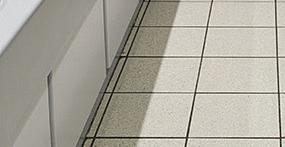

























SAFE REFUGE
It’sbeen almost four months since the agreement with the Taliban to leave Afghanistan came into force, where thanks to the stellar work of many organisations and individuals, including the British Armed Forces and humanitarian charities, thousands of people from Afghanistan were able to travel safely to the UK to start their new lives. However, given the fast pace of the evacuation, which took place over less than two weeks, many people arrived having le most of their belongings behind. As a result, it was imperative for Britain to welcome these people with open arms, by providing accommodation and essential supplies, including clothes, hygiene products and food, whilst they get settled in the UK.
Organising and delivering this support for thousands of people is no easy task. As with the pandemic, it required the public and private sector to pull together, working closely with the UK Government to arrange accommodation and deliver supplies for people arriving from Afghanistan. With our sector’s experience of rolling out COVID test centres and NHS ‘field hospitals’ in a matter of days, the FM industry has the expertise to be front and centre of the e orts to help the families arriving in the UK from Afghanistan. At Mitie, for example, we created a dedicated management team who mobilised hundreds of security o icers across the country in a matter of days, as well as deploying our intelligence experts and risk analysts to ensure the safety of people staying in the hotels arranged by the Home O ice.
TEAM EFFORT
With expertise in delivering complex projects within very short time frames, we were able to quickly meet a logistical need when we were called upon to help with an initiative. Carol

Weatherall and Ron Dennis CBE (Founding Shareholder and former Chairman and CEO of The McLaren Technology Group), in collaboration with Wellington College, where they are both parents, instigated and led a huge initiative to collect and organise vital donations for Afghan adults and children being relocated across the UK. The family, Wellington College sta , students, and parents, along with many volunteers from the local community, came together and collected and organised 74,000 essential items, including clothes, bedding, household goods and toiletries. The donations were collated into over 2,200 ‘Welcome Care Packages’ to support the Afghan community.
The generosity was overwhelming, with enough Welcome Care Packages to fill the equivalent of nine articulated lorries. When Ron Dennis approached Mitie, we were delighted to be able to provide the logistical solution in delivering such vast volumes of donations. Cadets from The Royal Military Academy Sandhurst also joined the e ort. By harnessing our professional network, with support from our supply and logistics partner Stronghold Global, in just 24 hours we were able to secure transport for these donations, at a time of perhaps unprecedented demand for the UK’s supply chain and logistics industry.
In turn, Stronghold Global were incredibly generous with their support, by collecting and transporting all the Care Packages to their Swindon warehouse within just 48 hours. Stronghold Global, at their
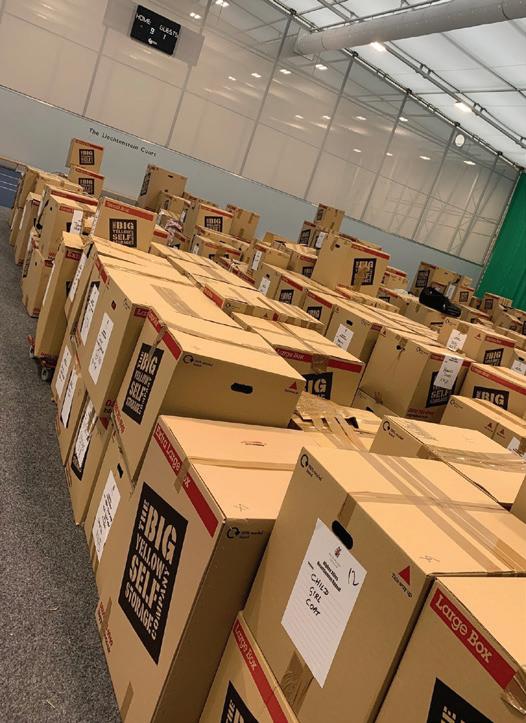

own expense, are also distributing packages throughout the UK to people staying in the hotels arranged by the Home O ice, which Mitie are securing.
This truly was a team e ort with people and businesses donating their time and services to support the e orts. As James Dahl, Master of Wellington College, said: “Over the course of just seven days an astounding 74,000 essential items were donated, via the Wellington College Community, ranging from clothes, food, electrical equipment and bedding. Wellington College sta , parents, pupils and local volunteers meticulously sorted and arranged the donations into 2,295 ‘Welcome Care Packages’, which were accompanied by heartwarming and welcoming letters and cards.
“Our hope is that our ‘Welcome Care Packages’ will go some way to providing the Afghan families with the essentials that they need, a er they have lost so much, and as they now begin their new lives.”
FURTHER HELP
I very much agree with the impressive scale of the initiative and, more importantly, about the need to help the families that have been a ected by the crisis in Afghanistan. There is always more that we can do to give our support and, as such, we have donated £20,000 to Breaking Barriers, a charity which will be helping people apply for asylum through the Afghan Citizens Resettlement Scheme. As they start to build new lives for
themselves, and their families, we hope, over time, to o er career opportunities and welcome some of these people to our own workforce.
And with COVID still to consider, we also donated 10,000 facemasks and over 3,300 litres of hand sanitiser to charities supporting people that have arrived from Afghanistan.
Given that a number of our colleagues come from Afghanistan or have served there as members of the British Armed Forces over the past 20 years, we wanted to ensure that we had support in place at a potentially di icult time for them. Through the Mitie Military, our inclusion network for employees who are veterans, reservists or family members of people in the Armed Forces, we hosted sessions to o er an open a space for colleagues to talk about the issue.
Some of our colleagues needed additional support and found this time particularly challenging, so we also dedicated significant e orts to making sure that employees were aware that Mitie’s Mental Health First Aiders are there to lend a friendly ear. And our Employee Assistance Programme is available 24/7 to o er advice to colleagues, and their family members, facing mental health issues, encouraging people to reach out to these support services as needed.
As with the COVID pandemic, the crisis in Afghanistan has demonstrated that many of the challenges Britain may face in the future will require that everybody, including local communities, government and businesses, work together to take swi action. Mobilising large projects in a matter of days is what we do day in, day out, as facilities management providers, which is why our sector can, and should, force for good in supporting the UK in overcoming whatever challenge may come next.
FOCUS SOCIAL VALUE
DECEMBER/JANUARY 2022 44
From pandemic response to Afghan aid, Jason Towse, MD of Business Services at Mitie, explains how the FM sector can play a leading role in helping the UK during times of crisis
MATES IN MIND
Over recent years, there has been a muchneeded shi of focus to mental health. It comes as recently the Centre for Mental Health announced that globally, we lose 91 million days to sickness, and the average person takes 7 sick days o work a year40% of those are in relation to mental health concerns.
The cause for decline in mental health varies per person, but the main triggers include stress, exhaustion, personal trauma, genetics, and a family history of poor mental health. Poor mental health impacts our lives in many ways including how we interact with others, how we handle upsetting and stressful situations, productivity, and our ability to make good choices.
Leading UK portable accommodation supplier, Elliott, has joined forced with Mates In Mind because health isn’t always visible. Established in 2016, Mates in Mind are a charity supporting mental health in the workplace, specifically within the construction sector.
They guide organisations to resources and support to help employees with their mental health concerns.
The construction sector is made up of 2.3 million people, almost 300,000 of those are women and 2 million are men. An ONS from early 2017 revealed that suicide is the main cause of death for males between the ages of 15 to 49, and the risk of suicide
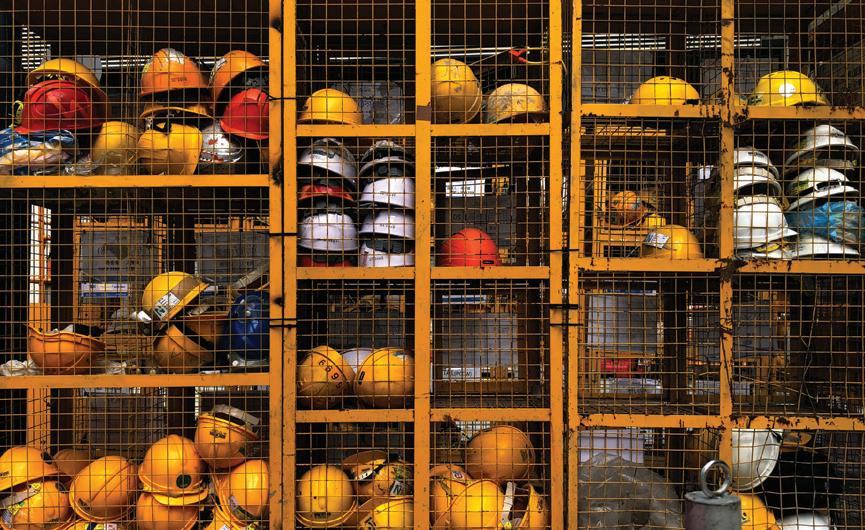
amongst low-skilled male labourers is 3x higher than the male national average.
Bill Hill, Chief Exec of The Lighthouse Club charity, stated the reason for high suicidal rates and depression in construction workers is due to the ‘high pressure environment’. Stereotypically, workers are away from family for weeks, and turn to drinking, smoking, and betting with other colleagues to pass time. For some, it can lead to a lonely lifestyle.
This worrying statistic is the reason Elliott are increasing their number of mental first aiders across the country, have increased their leadership walks by 300% since late 2020, hold safety stand downs at all their o ices and depots across the UK. No matter where our employees are based, at Elliott we want to ensure we can help them get the support they need, as quickly as possible. Along with our long-standing Employee Assistance Programme, our mental health first aiders will be able to signpost help for any sta who need it.
www.elliottuk.com help@elliottuk.com


NORTHWOOD FLIES THE FLAG FOR SUSTAINABILITY
Northwood Hygiene Products Ltd, the leading manufacturer and supplier of away-from-home (AfH) professional paper hygiene and wiping products is focused on a full circle economy and is helping to drive sustainability by delivering product innovation, eliminating waste and reducing its carbon footprint.
As one of a small number of companies in the UK that is fully vertically integrated, selling as well as converting parent reels, the business collects more than 100,000 tonnes of recovered fibres and produces nearly 70,000 recycled parent reels a year. 80% of Northwood’s products are made from recycled paper and all of Northwood’s paper mills now produce Forest Stewardship Council (FSC®) certified base sheet paper.

The business continues to invest in state-of-the-art machinery and infrastructure to further improve its environmental credentials and it operates a fleet of Euro 6 compliant vehicles, which are mobilised to ensure they never have an empty load. The company has also rolled out an enhanced driver training programme, which has already reduced fuel usage by more than 10%.
The business operates across 10 UK sites and all of its mills are ISO 14001 accredited, adhering to a zero-waste manufacturing process to look a er the local environment.
Northwood’s recycled products include the Essentials collection of toilet tissue, centrefeed, hand towels and hygiene rolls, the Raphael proprietary washroom system and the Whisper Green 2-ply toilet tissue.
THE NEW SNICKERS WORKWEAR BODYMAPPING PILE JACKET
Taking working comfort and layering systems to a whole new level.
The Snickers Workwear climate control system includes functional base layers, insulating mid layers and weather-protective outer layers.

These technically advanced working clothes allow cra smen and cra swomen to adjust to changing weather conditions on site so they’re always working e ectively –with maximum comfort and protection.
Take the new FlexiWork Inverted Pile jacket for example. This warm and versatile pile jacket can be used both as a jacket in cooler conditions or a mid-layer when the weather is more inclement. Made of laminated polyester fabric with a furry pile lining for optimal warmth and comfort, its ergonomics also feature shaped shoulders for a great fit and optimum freedom of movement.
Hi-tech, advanced fabric technology like this is integral to all Snickers Workwear’s Base-, Mid- and Top-Layer garments for both men and women that always combine well with the Snickers Workwear hallmarks of best-in-class durability, comfort, ergonomics and fit.
www.snickersworkwear.co.uk sales@hultaforsgroup.co.uk 01484 854788

MONTH IN FM DECEMBER/JANUARY 2022 45 FMJ.CO.UK
www.northwood.co.uk 01952 236 930
ADVANCED REACHES NEW HEIGHTS AT MANCHESTER CLIMBING CENTRE
A QuickZone conventional fire alarm system from UK manufacturer, Advanced, has been installed at BlocHaus Climbing, Manchester’s newest bouldering wall.
Newly opened, BlocHaus Climbing boasts an array of facilities at its East Manchester site, including 130 climbable boulders, routing roof and on-site café.

As part of the active fire protection for the site, the 4-zone QuickZone conventional fire panel from Advanced has been installed alongside Hochiki conventional heat/smoke detectors, Apollo conventional call points and Roshni conventional sounders.
Responsible for the design, installation and commissioning of the fire system at BlocHaus Climbing were Manchester-based, Surefire Protection Ltd. Surefire installed the QuickZone panel alongside music shutdown integration to ensure clear audible notification for all building users in scenarios where the system goes into alarm.
Michael Rouse, Fire Alarm Supervisor at Surefire
Protection Ltd, said: “As long-term partners of Advanced, we’ve worked with its solutions for many years and are confident in their capability to deliver high standards of protection throughout sites large and small. We only specify Advanced fire panels due to their quality, reliability and standard of technical support, and we firmly believe they o er the best solutions available for open protocol systems.”
www.advancedco.com
LIGHT THAT DEFIES THE ELEMENTS
Zumtobel’s new TECTON IP64/IP54 continuous-row lighting system is now equipped for use in harsh industrial conditions. Resistant materials and a sophisticated sealing concept protect the modular system from dust and water splashes. Users can expect the classic installation convenience, plus the same high level of flexibility with the added IP protection. Every critical joint and connection of the TECTON IP64/IP54 lighting solution is fully sealed, creating comprehensive protection against areas with increased levels of dust and water. The upper and lateral surfaces of the corrosion-resistant trunking are entirely enclosed and smooth, so, not only providing protection against dust or water, but making it easy to clean and ideal for abrasive and harsh environments, such as multi-storey car parks, refrigerated logistics facilities, warehouses and production plants.
To learn more about TECTON or explore the variety of combinations available, visit the website below.
www.zumtobel.com/gb-en/products/tecton.html

QuickZone is the conventional and twin-wire fire system from Advanced that is quick and simple to install and manage and ideal for installations that have less complex programming and configuration requirements.
O ering eight panel variants across the QuickZone and QuickZone XL product lines, the panels will support 2 to 32 zones, are approved to EN 54 parts 2 and 4 and support comprehensive false alarm management.
Neil Parkin, Sales Manager for the North of England and Ireland, said: “Surefire’s installation of Advanced at BlocHaus Climbing demonstrates our solutions’ versatility. Not only will you find our panels installed throughout airport terminals, hospital complexes and university campuses, but also smaller, less complex sites, such as o ices, retail outlets and activity centres. Whether you opt for the simpler QuickZone panel, or the feature-rich QuickZone XL, Advanced can deliver the conventional system you need.”
RANDEX LAUNCHES VERTICAL STORAGE LIFT
ONLINE PLANNING SERVICE

Leading vertical storage li company Randex is claiming an industry first for its rollout of a free online service that organisations can use to generate CAD drawings and specifications for their automated handling using vertical storage.
“By sharing our vertical storage technology freely with organisations and the supply chain community in this way we are helping to democratise business planning” says Randex Director James Roberts.
Manufacturing, logistics and other supply chain users of the ‘Compact Configurator’ service tool enter key data including their building height, storage and picking needs. The tool then generates a customised CAD drawing and specification showing their vertical storage li height and footprint, optimum storage capacity and other information. An additional, warehouse optimisation questionnaire can also be accessed online.
Compact Vertical Storage Li s save up to 90% of floor space compared to standard shelving and pallet racking, minimising the floor area while maximising storage volume, and can manage loads of up to 100 metric tonnes. Their load tray system enables warehouse operatives to complete up to four times more picks than in a traditional warehouse, with greater accuracy and without the need to search for goods, which are automatically presented to the picker. The ‘Compact Twin’ also doubles any picking rate by utilising two load trays simultaneously.
Compact Vertical Storage Li s can be integrated with all leading WMS and other business systems.

www.randex.com www.welandsolutions.com/en/


MONTH IN FM TO ADVERTISE IN MONTH IN FM PLEASE CONTACT
OR CALL 01322 476811 DECEMBER/JANUARY 2022 46
DANNY.GRANGE@KPMMEDIA.CO.UK
2N UPGRADES FLAGSHIP INTERCOM IN RESPONSE TO CHANGING OFFICE WORKING PATTERNS
The 2N® IP Style, launched in June and the recent winner of a CE Pro BEST Award, to be enhanced with bidirectional video, QR code and ad display functionality.
2N, the global market leader in internet-enabled intercoms and access control systems, has added enhanced functionality to its flagship intercom, the 2N® IP Style, in response to emerging trends in o ice working caused by the COVID-19 pandemic. The relevant trends, which have been identified by experts including the CBRE, Knight Frank and PwC, are:
Most companies are operating hybrid working models, but smaller companies are returning to the o ice faster than larger businesses. Companies are starting to consider a ‘hub and spoke’ model for their o ice portfolio.
A focus on design and quality in all aspects of o ice buildings.
The 2N® IP Style, which was launched in June and recently won a CE Pro BEST (Best Electronics Systems Technologies) Award at the CEDIA Expo in


Indianapolis, will respond to these trends through new functionality which will be added in Spring 2022 in four areas:
A bidirectional video function will allow visitors to see the person they are talking to as well as vice versa. This will be of particular value to smaller companies that do not have a dedicated reception or o ice buildings that house multiple companies.
A QR code function will make it easier to share access data with couriers and other visitors. The

https://www.2n.com/en_GB/
ALTRO PACKAGE FOR HOLIDAY PARK REVAMP AHEAD OF BUSIEST EVER SEASON
A package of Altro floors and walls has been used throughout the new restaurant, bar and reception area as part of an ambitious revamp at a Beachside Holiday Park in Cornwall.

The park worked with Classic Builders (South West) Ltd adding a series of extensions with internal alternations creating a spacious, cohesive reception, restaurant, bar and so play space.
In the kitchens Altro Crete™ resin floor and Altro Whiterock™ wall sheet delivers a robust, resilient and hygienic HACCP approved solution. In the toilets and throughout the back of house, Altro XpressLay™ adhesive free safety floor was quick to install, with no compromise on durability or slip resistance. For front of house in the large reception, restaurant and bar area, flooring choice was vitally important to achieving the overall vision. Beachside turned to Ian Williams of Ace Flooring & Carpets on the recommendation of their main contractor, who selected Altro Ensemble.
Altro Ensemble™ is a modular flooring system of luxury vinyl tiles that gives complete design freedom to create stunning floors for interior spaces. With a vast range of colours and four modular sizes, it can be mixed and matched to create unique designs from colour blocking to geometric patterns. Altro Ensemble has 15dB sound reduction with added comfort underfoot, making it perfect for front of house areas where design is key.
www.altro.co.uk
details can be sent straight to their mobile and the intercom’s display guides them to present the code in the right way to gain entry. This means that visitors can still be given secure access even if there is no one from the company available to meet them when they arrive.

The 2N® IP Style’s existing 5MPx camera’s incorporation of Wide Dynamic Range (WDR) technologies ensures full image quality and identification of the visitor, even in darkness or uneven lighting conditions outside. From the Spring, a camera adjustment function will be available which will further increase the angle range of the camera.
With businesses that depend on o ice workers having to compete harder than ever for their attention, the 2N® IP Style’s 10” LCD display can already be set with customised backgrounds – which can, for example, be used to promote local restaurants or stores. More sophisticated advertising options will be available in the next six months.
DESIGNED FOR PERFORMANCE – THE REVOLUTION 2 GTX SAFETY TRAINER
Solid Gear’s fastest safety shoe is designed for performance and safety to keep you going for longer at work.

The GTX’s hi-tech, lightweight construction is a giant leap forward from the look and feel of ordinary safety shoes. It combines a highperformance blend of ergonomic design, athletic comfort and S3 protection.
The waterproof GORE-TEX® upper delivers constant dryness while the locking drawstring ensures the shoe fits like a glove. Combined with its E-TPU midsole and the ‘bounce back’ technology, foot and knee fatigue a er a hard day’s work could be a thing of the past.
The New Revolution 2 GTX is more than just a market-leading safety trainer, it’s a workmate that will keep your feet fresh, safe and dry – all day long. So get to know more about the quality, innovation and top class safety functionality in every Solid Gear product – your feet will notice the di erence.
www.solidgearfootwear.com sales@hultaforsgroup.co.uk 01484 854788
MONTH IN FM DECEMBER/JANUARY 2022 47 FMJ.CO.UK
CEDO LAUNCHES THE UK’S FIRST ANTIBACTERIAL RECYCLED REFUSE SACK FOR DOMESTIC USE
Called Good Karma Antibac, the refuse sacks launched in Morrisons supermarkets in the UK on 8th November, and will expand across Europe and the UK over the next 12 months.

“We’ve created our very own Good Karma brand made with 100% recycled plastic, including postconsumer flexible plastic film collected and sorted from households,” explained Martin Burdekin, UK Commercial Director at Cedo. “By adding an Antimicrobial called BactiglasTM - a technology developed by Wells Plastics which is used in a wide range of applications from hospitals to food packaging and is a trusted brand across the healthcare industry - we’ve created a fully circular refuse sack that can help reduce the spread of deadly bacteria like E.coli and S.aureus. At this time of year, as cold and flu germs are on the rise, this is the perfect way to improve the safe handling and disposal of household waste.”
Carl Birch, Sales and Marketing Director at Wells Plastics said: “The Bactiglas™ active ingredient is a compound that is natural to our environment and toxic to bacteria, whilst being safe for humans. Bactiglas™ is already used in consumer products,

medical devices, waste bags and aprons used in hospitals and healthcare settings. Bactiglas™ will provide each bag protection against bacteria which will last throughout its shelf-life.”
In 2014, Cedo was the first company to manufacture bin bags using post-consumer flexible plastic film, such as used sandwich wrappers and other so plastic packaging, collected from households. Today, the business recycles more than 80,000 tons of plastic waste every year in its recycling centre in Holland - which has become one of the largest
www.cedo.com


SNICKERS WORKWEAR CLIMATE CONTROLBASELAYER UNDERWEAR

Dressing for the cold is like building a house – start with a good foundation.
The Snickers Workwear Baselayer clothing for professional tradesmen and women uses high-tech breathable fabrics for ventilation and body moisture transport for sustainable warmth and comfort.
The Base-, Mid- and Toplayer clothing combines to keep you working dry, warm and comfortable wherever you are on site. With sustainability at the forefront of Snickers Workwear’s clothing philosophy, garments are available in recycled polyester and merino wool as well as the 37.5® technology ventilating fabric to suit di erent types of work in a variety of cold and wet weather conditions.
The cutting-edge AllroundWork, FLEXIWork and LITEwork designs and fabrics will keep you warm and dry - so you won’t get cold, wet and shiver. All the garments are made from quick drying, fabrics that come with special ventilation features to control and regulate the heat from your body.
All in all, Snickers Workwear Baselayer clothing will give you the kind of warm, dry and fresh working comfort you wouldn’t have thought possible. That’s why Snickers Workwear is the brand of choice for working outside in the winter.
flexible film recycling centres in Europe - supplying manufacturing sites in Poland and the UK where over 4 billion refuse sacks and bin liners are manufactured each for customers in 34 countries. In the UK, 93% of the plastic used by Cedo to manufacture non-food products is from recycled sources.
“This is just the beginning of our Good Karma range,” added Burdekin. “We’re all hugely excited about what’s coming next as we expand our very own brand for eco-active consumers and their households.”
PREMIER ROOFING WITH BMI ICOPAL HELPS PRESERVE PRICELESS EXHIBITS AT NATURAL HISTORY MUSEUM
Shortlisted for the Reinforced Bitumen Membranes category of the UK Roofing Awards 2021, the Natural History Museum at Tring, demonstrates that a close working relationship between contractor and manufacturer can accelerate, simplify and streamline a complex roofing contract.
With the existing flat roof sections of one building nearing the end of their life, swi remedial action was required.
Faced with a variety of challenges for each section, BMI, working with IMA member, Corby-based Premier Roofing Systems, specified a number of products from its comprehensive range of bitumen membrane solutions. The recommended solution was the BMI Profiles XL system incorporating BMI Icopal Thermazone insulation.
The £350,000 project was carried out in three phases: the main block, the ornithology block, and then the link roof. A detailed roof survey determined that the existing waterproofing was suitable to be overlaid and could be utilised as a vapour check. All three blocks needed overlaying with BMI Icopal Thermazone Tapered Insulation to boost thermal performance in line with the required U-value, while also encouraging the movement of rainwater to the dedicated outlet positions.

BMI’s technical team inspected the site weekly, checking that the workmanship and materials matched the specification so that it was able to issue a 25-year guarantee on completion.
www.bmigroup.com/uk
MONTH IN FM TO ADVERTISE IN MONTH IN FM PLEASE CONTACT
OR CALL 01322 476811 DECEMBER/JANUARY 2022 48
DANNY.GRANGE@KPMMEDIA.CO.UK
www.snickersworkwear.co.uk sales@hultaforsgroup.co.uk 01484 854788
FLYING HIGH FOR 30TH ANNIVERSARY
Up, up and away! Strand Hardware is celebrating its 30th anniversary as one of the UK’s leading suppliers of door and window hardware including finger protectors, emergency exit and panic hardware, window control systems and glass fittings.

The family-run business, based in Walsall, West Midlands, is marking the occasion by sending a gi to customers and suppliers as a thank-you for their continued support.
The company was established by the late Jonathan Franks, who previously ran Hope Works, a well-known iron foundry manufacturing traditional black antique ironmongery. Jonathan’s daughter, Catherine joined him in the business in 2000, initially as Company Secretary and took on the Managing Director’s role upon her father’s retirement in 2006.

Over the years, Strand Hardware has grown –extending its operations, workforce and premises –while managing to maintain the family ethos on which it was based. Many of its employees have worked for the company for more than 20 years – a loyalty matched by a commitment to sta development and welfare.
Said Catherine: “We are not an enormous company;
everyone knows everybody else and looks a er each other and that has created a sense of team.
“Even though our sta are not directly involved in scheduling, we invest in training so they have a full understanding of the market and extensive knowledge of our products to best advise customers. The key to our success is customer service – we take care of our customers and protect our reputation by going above and beyond supply.”
Strand Hardware is now the sole UK distributor
for leading European manufacturers including Athmer (finger protection) and Antipanic (panic hardware). It also manufacturers its own range, Duoflex - adjustable folding openers for timber, aluminium, steel and PVCu windows.
Its expertise in ‘niche’ but highly technical products means that it has extensive reach.
In contract, the company also supplies its D-fine range, which is made entirely from 316 stainless steel for specialist installations. Its anti-corrosive properties mean they have been installed in wind farms, oil rigs and costal operations around the globe.
The extensive use of its products has led to it becoming members of a number of industry associations including the Guild of Architectural Ironmongers, the Door Hardware Federation and Council for Aluminium in Building.
Earlier this year, a sister company, Strand Technologies was launched, o ering technologybased solutions for safety, security and control of electro-mechanical devices, including (but not exclusively) windows and entrances. The COVID pandemic propelled demand including fail-safe diagnostics for automatic door systems and occupancy management systems.
www.strandhardware.co.uk info@strandhardware.co.uk
NEW DIRECTOR & GENERAL MANAGER APPOINTED
Drax (UK) Ltd (Trading as Drax 360) is delighted to announce the appointment of Glenn Grant as Director and General Manager. Well known throughout the fire alarm and detection industry, Glenn will head up the Drax 360 division, bringing with him a wealth of experience gained both from a manufacturer and operational perspective. These have included Gent, Cerberus and Wagner as well as Genesis Integrated Systems, now part of Network Fire & Security.
Commenting on his appointment, Glenn said: “I am honoured to be joining Drax (UK) Ltd at such an exciting time, with emerging technology pushing forward improved compliance measures. I am deeply passionate about fire safety and the importance of our industry, and I look forward to contributing my experience and knowledge to benefit Drax and its customers.”
Drax 360 Bio


With over 20 years of experience working with a variety of industries, o en with multiple locations, Drax 360 provide complete end-to-end fire alarm and compliance solutions to businesses across the UK.
Their core client segments include:
Education
Social Landlords
Facilities Management
Healthcare (labs & hospitals)
National Accounts
Drax 360 also specialise in technology lead solutions to improve life safety and compliance. They have an inhouse so ware development team, who created the market leading AMX alarm management system which is used globally.


Drax 360s number one priority is life safety. They’ve been successful in building long lasting relationships with their compliance focused customers, some lasting decades. Demonstrating value through competitive pricing, industry-leading fire alarm products, and excellent service. Their team of fire alarm specialists is dedicated to going the extra mile and keeping their customers business’ and properties safe.
https://www.linkedin.com/company/drax360 https://www.linkedin.com/in/glenn-grant-bb369019 www.drax360.com
MONTH IN FM DECEMBER/JANUARY 2022 49 FMJ.CO.UK
MULTIPLE SUPPLIERS MEAN MULTIPLE HEADACHES, LET US TAKE CARE OF IT
There is finally light at the end of the tunnel for UK businesses, which have endured an unprecedented period of challenge and upheaval owing to the Coronavirus pandemic. But businesses can't a ord to become complacent about infection control at this stage. Hygiene and COVID-measures must remain a priority for the commercial sector and responsible business leaders should now be taking a closer look at the key infection control measures they can put in place to ensure sta and visitors remain safe.
Our range of OTEX laundry and room disinfection products have been setting the standards in ozone technology since 2004. Since developing the UK’s patented validated ozone washer system with published utility savings, we’ve made continuous advancements in infection control. With OTEX laundry, you can reduce your energy bills and your carbon footprint while staying virus-free. The disinfection system kills 99.999% of bacteria
and viruses and is proven to remove all traces of Coronavirus following research carried out at De Montfort University.
Running a business is tough but we’re here to help all day, every day. With lots of equipment across
www.jla.com 0808 239 8624
COMBINING HI-VISIBILITY AND SUSTAINABILITY FOR WELLBEING AND SAFETY
Snickers Workwear leads the way in developing responsible Hi-Vis protective wear.
With an extensive range of Jackets, Trousers, Shorts, Toolvests, Shirts and Fleeces for men and women, there’s a host of garments in the Snickers Workwear range to satisfy the specific requirements of Class 1, 2 and 3 protection levels.
The requirements of EN standards for wearing high visibility are interwoven with the Snickers Workwear hallmarks of functionality and comfort in all the garments. What’s more, the lightweight Repreve® Polyester padding in the NEW AllroundWork Class 2 Hi-Vis padded jacket takes sustainablility in Hi-Vis workwear to a new level.
This world-leading brand of recycled performance fibre combines with the hardwearing polyamide fabric and CORDURA® reinforcements for enhanced durability that’s windproof, and warm, while stretch panels ensure optimal mobility.
Developed for cra smen and women in the road, logistics, facilities and general construction sectors who must stay warm and visible in chilly conditions, like all Snickers Workwear Hi-Vis clothing, its durable, colour-fast protection that will last for wash a er wash, retaining shape and comfort.

www.snickersworkwear.co.uk info@snickersworkwear.co.uk 01484 854788
many locations, we understand the pressure you’re under to make sure it runs smoothly. When it comes to your critical equipment and servicing needs, we’re your one partner. Whether it’s laundry, catering, heating or fire safety, we give you peace of mind.

Fire safety and security
With experts in the group who have over 100 years of collective experience in fire safety and security, we assess, install and maintain the equipment that keep the properties you manage safe. We’re accredited by the leading fire safety bodies, and our experts will identify safety risks and can provide support to help you mitigate these.
Heating and air conditioning

Our future-proof hydrogen-ready boilers save costs and help your clients meet their sustainability targets. With remote fault diagnostics, we can fix issues before your clients even know something has happened. And we guarantee hot water and comfortable buildings every day.
NEW SOFT PLASTICS RECYCLING BIN RANGE

Leafield Environmental, a leading UK manufacturer and designer of recycling and litter bins have launched a new so plastics recycling bin range to collect so plastics packaging in high footfall areas such as supermarkets, shopping centres, service stations and o ice food areas.
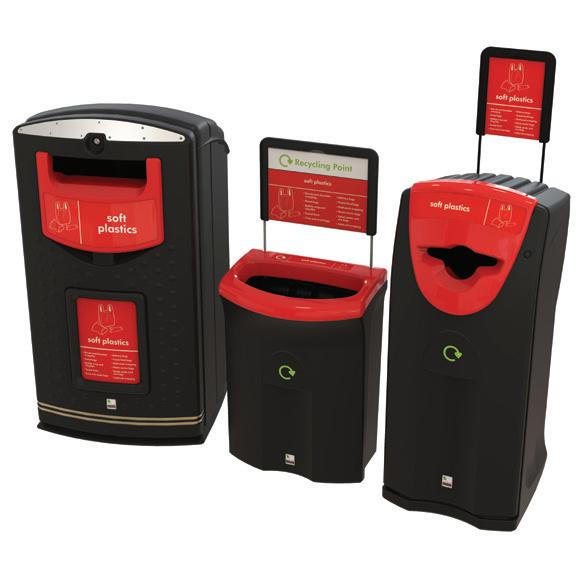
Leafield’s new so plastics recycling bin range includes some of their best-selling bins including the Envirobank 240-litre, Maxi 140-litre and Meridian 110-litre bins. The bins feature a black base unit made from 100% recycled plastic, red lid aperture, so plastics poster, and labels. Bespoke colours and personalisation of labels are available upon request.
WRAP confirmed this year that while plastic bags and wrapping makes up around a fi h of consumer plastic packaging, only 6% of it is recycled. In response to this, The UK Plastics Pact members, representing the vast majority of plastic packaging sold by supermarkets, have committed for all of it to be recyclable by 2025.
Philip Maddox, MD at Leafield Environmental said: “These new recycling schemes are a critical step forward to increasing the recycling rate of plastic bags and wrapping, as only 20% of local authorities are collecting plastic bags and wrapping as part of their kerbside recycling service. Due to the increased demand in so plastics recycling, we are pleased to launch a new range of bins in di erent sizes for retail and commercial o ice environments.”
www.leafieldrecycle.com recycle@leafieldenv.com
MONTH IN FM TO ADVERTISE IN MONTH IN FM PLEASE CONTACT DANNY.GRANGE@KPMMEDIA.CO.UK OR CALL 01322 476811 DECEMBER/JANUARY 2022 50
BE ON THE RIGHT SIDE –OF CORPORATE SOCIAL RESPONSIBILITY
The UK Government has set some pretty ambitious environmental targets for the country in the lead-up to COP26 and at the Conference itself. Governments set targets and impose the regulatory framework, and the burden of implementation them is cascaded down to business. This is no di erent – business will be expected to take actions to demonstrate their commitment to environmental challenges. This will not be discretionary – corporates will have to set specific targets for carbon emission reduction, environmental impact mitigation, and wellbeing improvements for their sta , customers and the public. They will have to set out their goals, identify the specific actions they plan to take, and then report on the outcomes against set targets. Corporates will be measured on the results which will in turn impact on investor appetite for stock.
Every corporate has a section in their Annual Report for Corporate Social Responsibility –including their environmental objectives and initiatives. It is here that commitments can be assessed based on ambition, intent and
performance. The importance of this section has grown over the past decade from being a ‘nice-tohave’ to now being a key performance indicator.
Some initiatives will be big and require considerable investment to achieve the reductions required. However there are some actions that corporates can take that are easy to make, can be implemented immediately and will have an instant impact on environmental responsibility and wellbeing.
ECA technology allows cleaning and disinfectant solutions to be generated on-site at point-ofuse, and can dispense with the production, containerisation, transport, storage and disposal of synthetic chemicals and packaging. In terms of objectives of reductions in so many polluting footprints, so many are met by swapping the use of synthetic chemicals, delivered monthly to site, for ECA solutions. Proven to be highly e ective at killing bacteria, viruses, fungi, molds and spores, as well as leaving surfaces clean and smear-free, ECA solutions are non-toxic, non-hazardous and hypoallergenic, posing no hazard to humans or the environment.
Generated from natural and naturally-sustainable inputs of water and salt, plus a very small electrical change, the activated solution has a virtually instantaneous contact time to kill microorganisms at up to Log 5 (99.999%) reduction at low concentrations, and then reverts back to slightly salty water.
Centrego has ECA systems to meet every size and configuration of facility. Installation is quick and easy, supported by comprehensive training for sta and users. Swapping traditional synthetic cleaning and disinfection chemicals for ECA solutions is such an easy decision for any corporate or public organisation to make. There is no downside and the implementation can be reported in the Annual Report to evidence one of the actions the organisation is taking in tackling negative environmental impacts. The clear message to sta , customers, shareholders, investors, the public – and soon to regulatory bodies – is that this organisation is serious about its environmental responsibilities and is committed to taking actions at every level. Many corporates and organisations have already taken these actions and report on in their Annual


Part
Reports, demonstrating their environmental and wellbeing commitments. Of course swapping synthetic cleaning and disinfection chemicals for in-situ ECA solutions will not in itself stop climate change, but it is a contribution that impacts on multiple environmental issues. It is a decision that corporates and organisations can make now and take advantage of the benefits immediately. Be on the Right Side. Make the Right Call.
Corporate Social Responsibility Environmental Targets


Objective: Improve the well-being of sta , customers and the public by helping make the environment a better and healthier place for all to live
Reduction of CO2 emissions
Reduction of water footprint
Reduction of plastic footprint
Reduction of harmful and toxic chemicals
Reduction of non-biodegradable waste
Reduction of landfill waste
Reduction of water pollutants
Reduction of air pollutants
MONTH IN FM DECEMBER/JANUARY 2022 51 FMJ.CO.UK
www.centregoltd.com info@centregoltd.com 01373 470638
of Samsics UK’s CSR statement showing that they use renewable cleaning solutions (with Centrego products) www.samsic.uk
The Centrego Renew is a portable disinfectant and cleaning solution generator which will be available in 2022
WORKING IN SMALL SPACES
Since the COVID-19 pandemic, working from home has become common across the UK and o ices are downsizing due to the increase in hybrid working and hot-desking. But with working from home comes creating an o ice on minimal footprint. Students and school children are also too familiar with this situation.
Workers now need clever solutions that optimise the available space whilst also creating and e icient and pleasant working environment.
Solution 1: Is your o ice also your home
If you have a dedicated o ice space in your home, away from distractions, great! Working from the living room is the option for many who are remote working therefore it is important to remember not to take the laptop to the sofa with you. Preserving that place to relax will give a healthy work-life balance. Luckily, there are many easy and clever ideas for dividing areas even in the smallest apartments using multifunctional furniture.
Solution 2: Reverting a space back from o ice to home is simple with portable organisers. Tools like TABLET HOLDERS and VARICOLOR® drawer boxes keep documents and equipment organised, as well as being portable and with a design nice enough to fit into your home, blending in perfectly to your living environment. Make sure wires and trip hazards are kept to a minimum with CAVOLINE cable management system to tame the cable spaghetti.
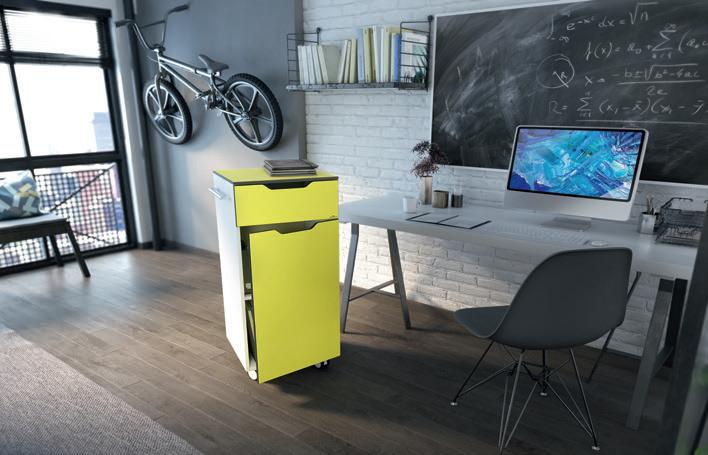
Solution 3: Create a space to enjoy. Even if your space is restricted, making it a place to appreciate coming to each day can boost
www.durable-uk.com




productivity and motivation. Studies suggest that those working from home miss the social aspect of an o ice environment so taking the time to create a warm welcoming o ice using plants and e ective working light will be most beneficial.


IRONMONGERYDIRECT AND ELECTRICALDIRECT SUPPORT STUDENT LEARNING IN AFRICA WITH DONATION
A charity that aims to empower disadvantaged communities in Africa with quality IT school resources, has received a donation of over 300 computer items from the UK’s leading specialist ironmongery supplier, IronmongeryDirect and its sister company, electrical supplier, ElectricalDirect.

The two companies, part of the Mantuan Group, have donated over 300 items of IT equipment to the Turing Trust, a charity that reuses and refurbishes tablets, phones and computers to be deployed to schools in Africa. The equipment donated by the Essex based ironmongery and electrical suppliers included computers, laptops, monitor screens and cabling, enabling 1,944 students to gain vital access to digital resources and learn vital IT skills. What’s more, the donation o sets 30 tonnes of CO2 emissions, which is the equivalent of planting 75 trees, or o setting the annual carbon footprints of three Britons.
On the company’s donation, Dominick Sandford,
Managing Director at IronmongeryDirect and ElectricalDirect said: “As part of our ongoing commitment to charity and worthwhile causes, we are delighted to support the Turing Trust with this donation. By providing training opportunities and skills development both in Africa and the UK, its
www.turingtrust.co.uk www.ironmongerydirect.co.uk
operation also reduces waste and supports a more sustainable and environmentally friendly society, and we are pleased that we can help make a di erence.”
James Turing, Founder & CEO of the Turing Trust said: “We are immensely grateful to all the team at IronmongeryDirect and ElectricalDirect for their donation, which will empower almost two thousand students with technology enabled education in Africa. The embodied energy savings created from this donation is also enough to power seven UK homes for a year and this donation helps to demonstrate what can be achieved through a circular economy approach to reusing business IT equipment.”
The Turing Trust was set up in 2009 in honour of Alan Turing by his family and seeks to provide quality IT resources and training to schools in sub-Saharan Africa. From its Edinburgh workshop, the charity refurbishes and ships IT equipment and educational so ware to help bridge the digital divide.
www.ElectricalDirect.co.uk
MONTH IN FM TO ADVERTISE IN MONTH IN FM PLEASE CONTACT DANNY.GRANGE@KPMMEDIA.CO.UK OR CALL 01322 476811 DECEMBER/JANUARY 2022 52
CAMPDEN BRI TESTING PROVES HYGENIKX KILLS AIRBORNE CORONAVIRUS
Independent trials conducted by Campden BRI have confirmed that the HyGenikx air and surface sanitisation system, from Milton Keynes based manufacturer Mechline Developments, is e ective at removing airborne Coronaviruses, including SARSCoV-2 which causes COVID-19. The results of the trials proved that HyGenikx removed up to 99.99% of an airborne COVID-19 surrogate in under 3 hours.*
These results back up the real-life experience of our customers including Cyrus Todiwala OBE DL, owner of Café Spice Namasté who said: “HyGenikx has proven what it can do for us –keeping the air and surfaces clean, pure and fresh, controlling odours and providing extra reassurance for customers so they can relax and enjoy their meal knowing that we are leaving nothing to chance to make our restaurant Covid-secure.”
Nick Falco Product & Technical Director at Mechline explains how the trials at Campden BRI worked: “Trials were conducted within the Campden BRI aerobiology laboratory to determine the e icacy of HyGenikx towards airborne Phi6 - a recognised SARS-CoV-2 Surrogate (the coronavirus that causes COVID-19). Phi6 was nebulised into an aerobiology
test chamber to represent heavily contaminated air. Air samples were then taken every 20 minutes for a period of 3 hours, to determine levels of Phi6.”
As we move into the winter months it is
essential to the whole economy that we keep the doors of business open. Unfortunately, physically keeping the doors and windows open is not so great when it comes to customer comfort and sustainability. Indoor air quality, however, is a primary driver when it comes to the transmission of the Coronavirus between people.
As a tried and tested technology, HyGenikx has a huge role to play in controlling infections - in fact HyGenikx is the most rigorously tested unit

of its type on the market. A ordable and easy to install, HyGenikx is a plug and play solution for a challenging world.

HyGenikx units consume very little energy and operate quietly and e iciently 24/7 without the need for human intervention. The HyGenikx range has models to suit every business from restaurants to bars, hotels, care homes and o ices - with specialised units available for food preparation areas, cold rooms, washrooms and refuse areas.

Cyrus Todiwala, OBE DL added: “I wouldn’t hesitate to recommend HyGenikx to other foodservice or hospitality businesses as it is the ideal complement to manual cleaning. It helps to protect customers and sta , whilst extending the shelf life of fresh produce.” **

*For more information on the HyGenikx testing at Campden BRI visit: https://info.mechline.com/ hygenikx-testing.
**For more information on the ALS fresh food shelf life study visit: https://www.mechline.com/wp-content/ uploads/2020/03/HyGenikx-Success-Story_-Testing_-SHELF-LIFE.pdf.
https://info.mechline.com/hygenikx-testing https://bit.ly/3lzaSFF

MONTH IN FM DECEMBER/JANUARY 2022 53 FMJ.CO.UK
BAKERY BUSINESS INVESTS HEAVILY IN GAS TO POWER TECHNOLOGY
prices for on-site power generation.
“This solution is ideal for facilities with high electrical energy consumption, such as food and drink manufacturing or large-scale industrial manufacturing. Providing budget stability, the lean-burn solution enables you to lower your dependency on the grid whilst ensuring a reliable, secure supply of electrical power.”
DTGen provides two commercial models for the gas to power solution, including a fully-funded PPA (power purchase agreement) that enables you to take control of your energy and generate your own continuous power onsite ‘behind the meter’.
About McGhee’s
Founded in 1936, McGhee’s moved to state-ofthe-art premises at the M8 food park in June 2005. Through continual investment in people, services and facilities, it now operates out of possibly the most e icient bakery production unit in Britain.
UK leading generator specialist, DTGen has installed and commissioned a 500KW lean burn gas generator with ComAp controls at McGhee’s Bakery’s manufacturing facility in Glasgow. Following a successful trial, the equipment is now providing the majority of the site’s electrical power requirement in parallel with mains to ensure resilience.

DTGen provided a full turnkey solution for McGhee’s including the network authority agreements, civil engineering work, mechanical and electrical installations. Now fully operational, DTGen will provide all on-going service and maintenance.
Gordon McGhee, Managing Director at McGhee’s Bakery, said: “Being a lean manufacturing organisation we are always looking at ways to help deliver value for money for our customers. With input costs rising rapidly, working with DTGen has provided us with the opportunity to better manage and forecast our energy expenditure. From beginning to end, DTGen listened to our needs, and designed a solution that fits seamlessly into our current way of working.”
Powered by high-e iciency gas engines, the lean burn generator range is ideal for businesses to
generate their own electricity on-site. The solution is highly competitive and can help manage the highly volatile energy market. By utilising a lower cost natural gas supply to produce electricity, this o sets high-cost electricity which is normally supplied by the national grid.
John Kinstrie, Head of Solution Sales at DTGen said: “As the overall demand for cleaner power generation continues to drive innovation in the production of energy, there is an increasing shi to natural gas generators for both standby power and as an alternative to mains connection for businesses that want to help manage costs and fix long-term
It currently sells more than 4 million rolls per week, of which more than 3/4 million are its famous ‘crispy rolls’. Using its fleet of 70 wholesale delivery vans, products are delivered daily across central Scotland and as far afield as Edinburgh, Dunfermline, Stirling and Perth.
About DTGen
DTGen supplies, installs and maintains diesel and gas generators, providing customers with products, support and advice throughout the life cycle of their generator set. Since 2010, DTGen has been supported by Glasgow-based equity partner, Nevis Capital LLP, which continues to support the company growth.

At its 6.3-acre HQ, the 80,000 sq warehouse space accommodates workshops, a parts distribution depot, the biggest load test cell in the country as well as the largest stock of generators in the UK. DTGen holds in excess of £1m of generators at its warehouse, and supplies from six to 3,000kVA – to ensure customers can quickly be provided with the right solution for their power needs.
The DTGen team of power generation experts and skilled service technicians operates the length and breadth of the UK providing comprehensive support across a range of industry sectors including commercial, construction, retail, data centres, education, health and government. www.dtgen.co.uk service@dtgen.co.uk


MONTH IN FM TO ADVERTISE IN MONTH IN FM PLEASE CONTACT DANNY.GRANGE@KPMMEDIA.CO.UK OR CALL 01322 476811 DECEMBER/JANUARY 2022 54
ACCOUNT DIRECTOR APPOINTMENT AT INCENTIVE FM




Incentive FM has appointed Matt Hadley to the role of Account Director. He will work with the team to build on the vision and brand for the Workplace Solutions sector.

Hadley will be responsible for managing operations, driving continuous growth and business development across the sector and developing the o er through successful leadership and execution strategies.
Hadley joins Incentive FM from Cloudfm where he held the position of Senior Account Manager. During his tenure at Cloudfm he was responsible for a number of client accounts with a turnover of over £25 million. Prior to that he was Commercial and Estates Manager at Arcus FM where he was responsible for all of the Sainsbury’s mixed-use sites.



ACE APPOINTS NEW CHIEF EXECUTIVE
Stephen Marcos Jones has been appointed new Chief Executive of the Association for Consultancy and Engineering (ACE).

Taking up his new role on 31 January 2022, he replaces Hannah Vickers who le ACE earlier in the year.
Following more than a decade in senior leadership roles representing the UK’s energy sector on the global stage, Jones joins ACE, a er four years at the helm of UKPIA, the trade association for the UK’s downstream fuel sector.
While at UKPIA, he led significant change across this important manufacturing sector, spearheading a cross-industry response on issues such as environmental regulation and promoting the sector’s opportunity to deliver decarbonisation in pursuit of Net Zero, while helping to articulate a vision for a sustainable future for the sector.
Jones has also led on issues such as the energy transition, the role of hydrogen, fuel quality, forging proactive and collaborative relationships with the UK Government and the devolved administrations at ministerial level. Most recently, he has promoted the concept of industrial clustering and is a strong advocate of the Government’s levelling up agenda.
AWA STRENGTHENS SENIOR
TEAM
Independent hybrid working transformation practice, Advanced Workplace Associates (AWA), has appointed Brad Taylor to its senior team.


Taylor takes on the role of Director of Consulting for people-related transformation services as well as taking responsibility for the Advanced Workplace Institute (AWI), AWA’s professional research and membership body.
Previously, Taylor worked for the Chartered Institute of Personnel and Development as Director of People, Organisational Development (OD) & Workplace. With more than 20 years’ experience as a chartered HR professional providing strategic support in OD, he will help develop AWI’s programme to give members the access they need to a broader range of science-based knowledge and insights.
FACILITIES MANAGEMENT JOURNAL JOBS
DECEMBER/JANUARY 2022 55 FMJ.CO.UK
PEOPLE
FM CAREERS -
HYBRID POWER
Hybrid working that enables people to work from anywhere can help attract a more diverse workforce with different perspectives, says Lee Daniels, Head of Workforce EMEA and Workplace UK at JLL

Although more companies now have diversity and inclusion policies in place, translating these into reality is an ongoing challenge and will require organisations to road-test, and learn from, new working practices. Alongside this, data is also increasingly pivotal in helping employers assess how diverse their workforces are, and where diversity and inclusion initiatives can improve.
DESIGNING FOR ALL
Inclusive workplace design is now a critical part of helping employees feel comfortable and do their job to the best of their abilities.
JLL research has found that employers are now expected to build new ‘authentic’ and ‘inclusive’ workplaces anchored in strong human values (a top priority for 50 per cent and 49 per cent of the workforce respectively), ahead of ‘green’ and ‘techenabled’ work environments (a priority for only 38 per cent and 36 per cent of employees).
The physical workplace itself must play a key role in supporting employees with a diverse range of needs and must be accessible and equitable to all. Technology will also play a vital role in ensuring the workplace can accommodate and engage a diverse workforce. For example, sensors that monitor how employees use the o ice, can provide insights into how the workplace can better support people to perform at their best.
With the rise in hybrid working, it’s not just employees who are benefitting from greater freedom in their workday; companies are equally finding that it’s supporting their e orts to create more diverse and inclusive workplaces. An increasing investment in workplace technology is giving employees greater freedom to work from anywhere, and to engage with their workplace and colleagues in new innovative ways.
FACILITIES AND WORKPLACE COORDINATOR
Salary: £35k - 40k per year
Location: Greater London https://bit.ly/339vcHp
FM DELIVERY MANAGER
Salary: £33080 per year
Location: Dover, Kent https://bit.ly/3IrQIam
SOFT SERVICES MANAGER
Salary: £35k per year
Location: Belfast https://bit.ly/3os4ulr
Precisely because of this, companies are now able to attract a more diverse range of talent with di erent backgrounds and lifestyles, creating environments where people and clients feel valued, welcome and comfortable. For example, by enabling people to collaborate and attend meetings online, hybrid working can support people juggling work with childcare or caring responsibilities. Likewise, companies who allow employees to work from home two to three days a week open the door to candidates who might not be able to a ord higher rents around city centre o ices and supports those who maybe neurodivergent or have disabilities that may prevent them from commuting every day.

SUPPORTING DIVERSITY
Building an inclusive environment where employees feel safe, valued and connected to the company’s culture and purpose is key for today’s workforce. Diverse and inclusive workplaces have the potential to drive greater innovation, productivity and ultimately, business growth. Employers must also prioritise employee wellbeing, including mental health support when thinking about their new o ice design.
As companies begin to mobilise for a hybrid future, it is essential that they get the right HR professionals to embed the inclusive workplace cultures. Between May 2020 and March 2021, job postings for diversity and inclusion professionals in the US rose 123 per cent, while there’s also growing demand for these roles in the UK and Germany.
Employee engagement platforms where sta can book desks, leave feedback and arrange meetings can indicate overall sentiment – and highlight areas for companies to address –o er people a seamless way to connect with colleagues. Helping sta to re-engage following a prolonged period of remote working will help employees feel more fulfilled and empowered.
Recent JLL research found that relaxation spaces, healthy food services and outdoor spaces, top the list in terms of what employees want; yet currently only 17 per cent of people actually have access to relaxation spaces, 19 per cent have access to healthy food services and 25 per cent have access to outdoor spaces. It is precisely this lack of equity in employee personal situations that employers must recognise and accommodate for. Creating supportive work environments that help alleviate stress and burnout, and support employees’ mental wellbeing is more vital than ever, with a third of employees reporting increased pressure when working in the o ice.
As we move into a new hybrid way of working, the challenge for managers will be to ensure people feel part of the team – and the wider workplace community – wherever they’re logging in from.
Now businesses must turn their attention to the question of how to integrate teams who are working in di erent geographical locations, in a combination with virtual and physical interaction. Only then will companies be able to truly leverage the benefits of a diverse and inclusive working culture through putting people at the heart of their future strategy.
FACILITIES MANAGEMENT JOURNAL JOBS
FMJ
LATEST JOBS ON
jobs.fmj.co.uk Over 250 jobs live on site FM CAREERS - RECRUITMENT DECEMBER/JANUARY 2022 56
SAFETY IN THE POST-COVID WORLD
challenges
Having lived and worked through a challenging 18 months, managers could be forgiven for thinking that their responsibilities might be starting to ease. However, the new norm has brought with it a range of health and wellbeing challenges, including: Reassessing risks for a workforce with a blend of home-working, o ice working and somewhere in between.
Understanding that mental health issues in this phase of the pandemic include anxieties about the return to the physical workplace.
Enabling more fluid work arrangements in the o ice, including hot-desking (recognising that this raises ergonomic and hygiene issues).
Understanding that Boards need strategies for resilience and business continuity. The 'healthy hybrid' will become the norm.
International Workplace’s IOSH Managing Safely course helps managers understand their key role in keeping their organisation’s workers safe and healthy, even when those people are not all necessarily in one place. This means establishing clear rules and procedures for those working in company buildings and ensuring that those working from home or elsewhere are set up with the appropriate equipment and are using it in the right way.
HOUSEKEEPING AND HYGIENE
Upon their return to the o ice, sta need to be aware of their responsibilities to keep everyone, including themselves, safe. Handwashing facilities are the start; encouraging good housekeeping, sensible hygiene practices when hot desking and clearing up a er themselves should become the norm. Your organisation needs to have a clear policy on what is expected as regards face coverings in public areas, the use of hand sanitiser, and when it is appropriate and/or necessary to take a lateral flow COVID-19 test prior to coming into a workplace, attending a meeting,
or joining an event. Managers need to be sensitive to the di erent demands of their employees, understanding that some people will be more comfortable attending the o ice and public areas than others.
MENTAL HEALTH AND WELLBEING
Clearly the COVID-19 pandemic has accelerated awareness of mental ill health in the workplace. However, the law has been clear for some time now that employers have a legal obligation under health and safety legislation to care for the mental, as well as the physical, safety of sta at work.
Under health and safety legislation, employers are required to carry out risk assessments and provide employees with relevant training and information on the risks they face, and the measures put in place to control these risks. This is where there is a potential problem with mental health as opposed to physical health. While many managers are aware of their obligations to look a er the physical safety of their teams, many are unaware of their and their teams’ obligations to look a er the mental health of their colleagues. This is partly due to the lack of awareness and training provided by employers to their managers. Many managers therefore may also genuinely believe it is not
their responsibility. While it has been a positive move by employers to train mental health first aiders, doing so may have reinforced managers’ views that it’s not their problem. This is why employers need to revisit their obligations and update their approach to health and safety, providing training for all sta (but especially for managers), so they recognise it is their responsibility to look a er mental health, as well as physical health and safety.
ERGONOMICS
One of the most important things that employers can do is help sta understand what a suitable home working environment looks like. Not everyone has the ability to have a dedicated home o ice but it is possible to make adjustments or adaptations to enable people to work in a supported and ergonomic way, whatever the workplace looks like. Having conversations with workers about the simple ways they can protect themselves from pain and discomfort means that wherever they work from, be it their home, a co ee shop or an agile work space, they will have the knowledge to work comfortably. The law doesn’t require employers to conduct home workstation assessments for employees working remotely temporarily. However,
they should still o er advice. Employers should regularly contact workers to address whether improvements need making and deliver equipment if necessary.
To aid permanent homeworkers, employers must provide information on how to operate comfortably to avoid developing musculoskeletal conditions. Regularly communicating with sta members will help to prevent any long-term issues developing too. On top of this, employers must instruct sta to complete a homeworking risk assessment and a display screen equipment assessment. The company’s health and safety policy may also need adjusting to cover homeworking.
Training should never stand still –managers need to adapt to new ways of working and controlling the workplace environment.

Whilst COVID-19 can be considered to be a biological hazard, it a ects the entire working environment, from ergonomics to organisational policy to physical working conditions. The IOSH Managing Safely course covers a broad range of health and safety subjects and ensures every manager and supervisor is aware of their responsibilities.
For more information visit www.internationalworkplace.com/ iosh-training/managing-safely
FM CAREERS - TRAINING DECEMBER/JANUARY 2022 57
Kate Gardner, Tutor & H&S Consultant for International Workplace describes how health and safety training for managers has evolved to meet post pandemic
SOCIAL LIFE
team decided to build stakeholder outreach into the core of their social strategy. Using Hootsuite, they ran a highly targeted social campaign aimed at C-level executives at just one organisation, extending the reach of the campaign by encouraging employees with connections to executives to share campaign content across their personal social media networks. Ultimately, the campaign was a success and was one of the factors in Sodexo winning a highvalue contract with the organisation in question.
Utilising Hootsuite Amplify not only as a way to share content externally, but also to engage and inform its own employees with corporate news and updates resulted in 50 per cent of employee advocates reading the shared content, which supports internal, as well as external awareness of the company’s campaigns. Further training has helped employee advocates define their online thought leadership voice, such as when personalising content to ensure both authenticity in tone and relevance to target audiences.
THE ROI OF EMPLOYEE SOCIAL ADVOCACY
Employee social advocacy is the promotion of an organisation by its workforce via social media. On average employees have 10 times more combined followers on social media than the organisation itself, which is why employers can make use of the incredible social influence of their employees by empowering them to share content across their personal social networks.
Research shows that implementing an employee advocacy programme, whether on social media or via other channels, has lasting benefits for both the organisation and the employees involved. Moreover, with over 4.5 billion people now using social media worldwide, according to Hootsuite’s Digital Trends 2021 report , and 43 per cent using the platforms for brand research, a social strategy is key to those wishing to reach an everexpanding audience.
Employee social advocacy could include employees sharing information about specific products or campaigns; sharing branded content to peers in an organisation’s field of expertise; or
authentically o ering a glimpse into the company culture with more organic posts—something of great potential value in attracting new talent. The latter is particularly useful since the mass move to online and digital recruitment methods spurred by the pandemic. Research shows that both brand health and trust improve as a result of employee advocacy, with 84 per cent of mature organisations surveyed seeing significant success in these areas when using employee advocacy tools.
HOW SODEXO TRANSFORMED ITS SOCIAL STRATEGY

Sodexo decided to commission a social media audit to understand what was working and what wasn’t, with the aim to then move forward with a more e ective social strategy to support business growth and support specific objectives such as building the social media presence of its executive leaders.
Social media sits within the global communications team within Sodexo, so it was their responsibility to develop a new social strategy based on the findings of the audit and the company’s
objectives. The team partnered with Hootsuite to implement an employee advocacy programme that would meet Sodexo’s goals.
The audit revealed that Sodexo had a comparatively small C-suite following on LinkedIn, so this is where the team started. They focused on building the social media presence of Sodexo’s executive leaders with an executive advocacy programme, in order to build the company’s reach with executive audiences and drive greater business impact. “Companies will o en decide to go with the millennial, digital-savvy employees when launching advocacy programs,” said Kim BeddardFontaine, SVP Digital and Employee Communications at Sodexo. “We specifically decided to go with senior executives because reaching the C-suite is so important for us in influencing key decision makers.”
Sodexo then went on to focus on two other key areas: utilising employee social advocacy to support large, complex deals, and to engage and inform Sodexo’s own employees in order to drive further business impact. For the former, the communications
By putting employee advocacy at the heart of its new social strategy, Sodexo has seen significant results both internally and externally. Following its executive advocacy programme, which eventually saw a thousand senior leaders involved as advocates, the company found that its global content was reaching 7.6 million people, attracting 2.3 times as many views as content on Sodexo’s corporate LinkedIn page had previously. The programme also led to an increase in Sodexo’s C-suite audience on LinkedIn, as well as doubling the rate at which it attracts new LinkedIn followers overall – with a jump from an average of 7,500 new followers per month to more than 15,000.
Sodexo also drew great ROI from their wider employee advocacy campaigns, with content posted via Hootsuite Amplify now driving 30 per cent of all social media tra ic to the website. Beddard-Fontaine praised the new approach, saying that “Hootsuite Amplify has been very powerful in allowing us to create a culture of sharing content. Those who use it, love it, and it’s driving the majority of our social tra ic to our website”.
FM CAREERS - EMPLOYEE RELATIONS FACILITIES MANAGEMENT JOURNAL JOBS
DECEMBER/JANUARY 2022 58
By implementing employee social advocacy, Sodexo was able to transform its social strategy and strengthen its relationships with customers and clients alike, says Brayden Cohen, Social Marketing and Employee Advocacy Team Lead at Hootsuite


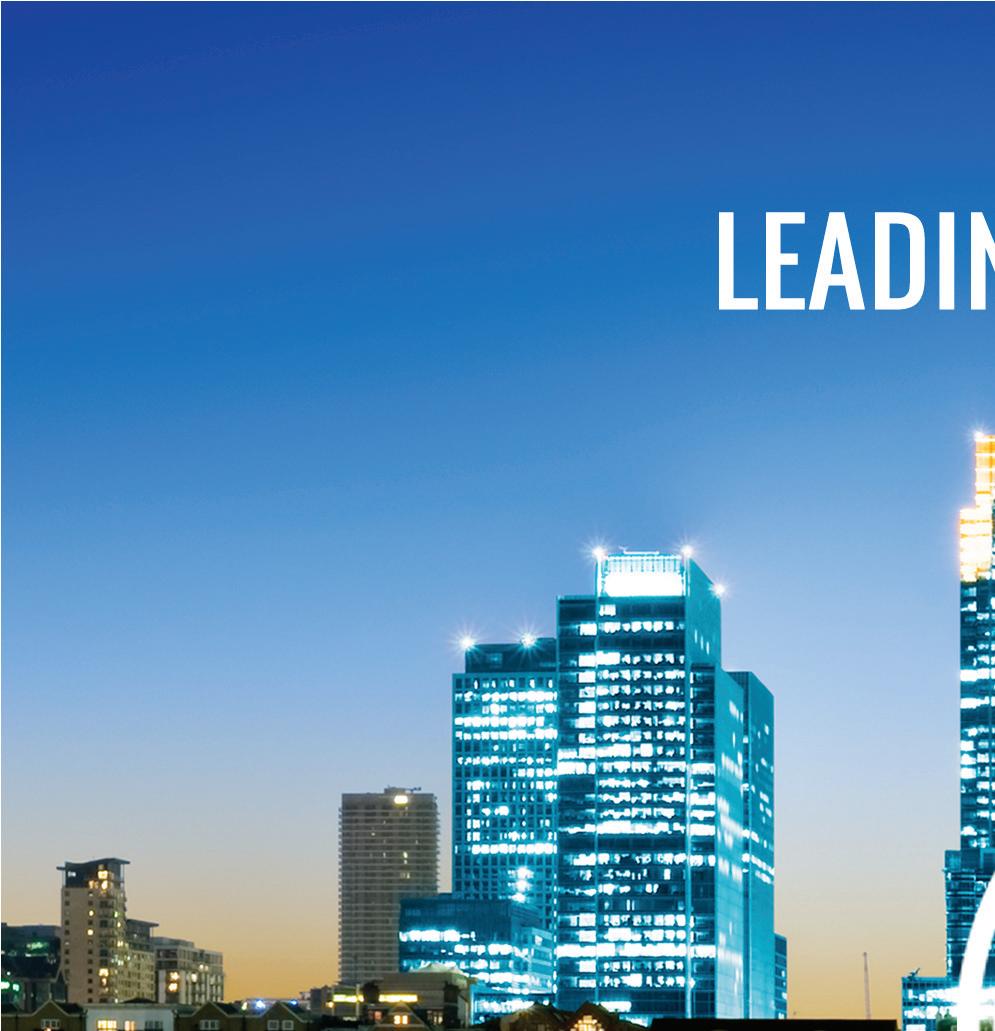







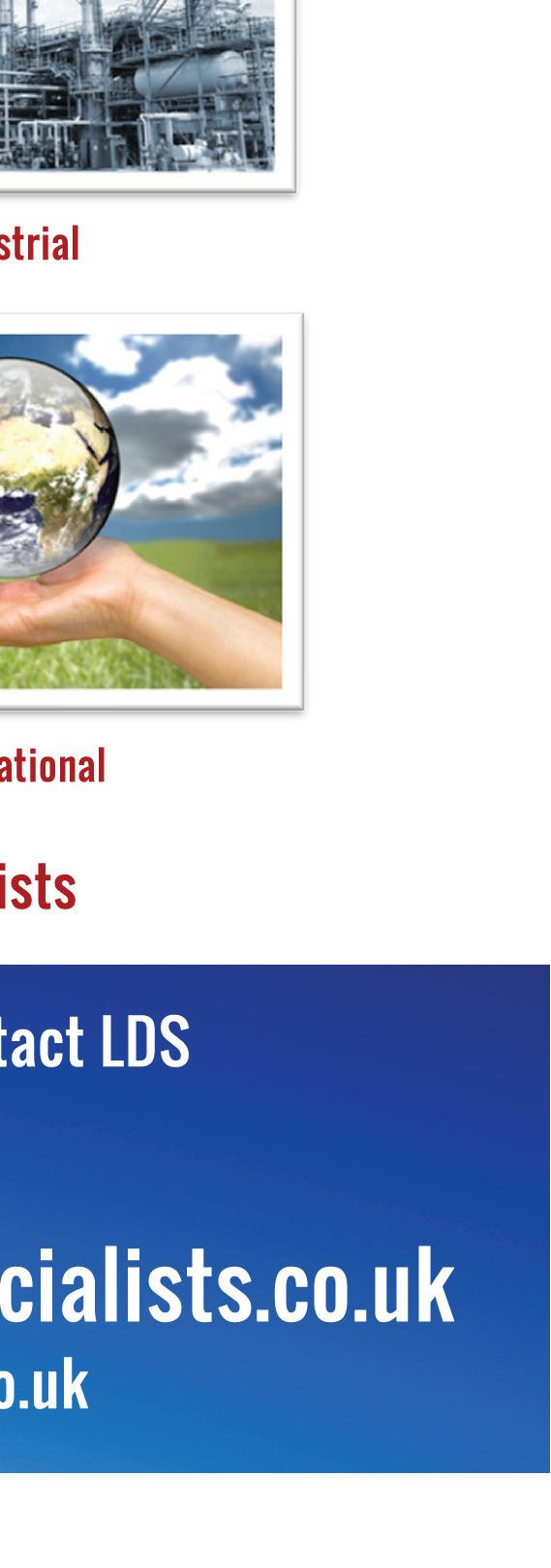


LDS 280x210 bleed.indd 2 LDS 280x210 bleed.indd 2 14/12/2017 12:56 Acoustics Correlation Tracer Gas Thermal Imaging Inspection Cameras Dye and Salt Testing Moisture Detection For more information please contact LDS Tel: 0344 809 4968 www.ldsleakdetection.com info@ldsleakdetection.com
INTELLIGENT CONTROLS SHOULD NOT COST THE EARTH
WWW.VEXOINT.COM












Our Technologies feature a reliable wide area network, meaning that our standard S-BMS control system will enable communication with up to 50 wireless field devices, with the opportunity to extend this with up to a further 500 devices.






Smart TRV Heads, Window Switches, Room Sensors, Room Sensors with Motion Detection and Hot and Cold Water sensors, mean that intelligent heating zones and hot and cold water monitoring can easily be deployed to new and existing buildings without the cost and inconvenience of electrical or mechanical works in the building.











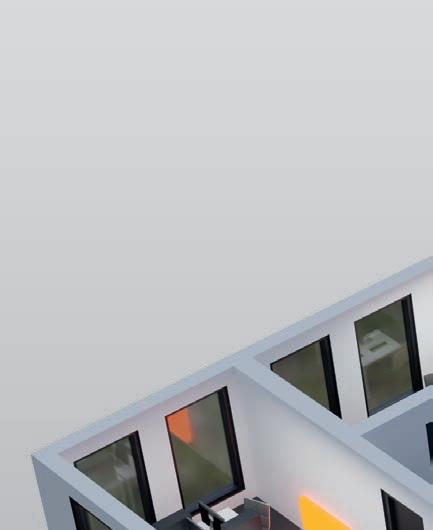
So whether you want to monitor your hot and cold water sentinel points or create a controlled heating zone or apply an intelligent heating strategy linked to open windows or occupational use, we can help you find a solution that does not cost the earth.








S-BMS
® ®















































































































































































































































































































































































































































































































































































































































































































































































































































































































































